THE YUKON CELEBRATES ITS 125th ANNIVERSARY
RESEARCHED AND WRITTEN BY: YANN HERRY
POWERED BY:
125 years
This year, the Yukon is celebrating 125 years as a Canadian political entity distinct from the Northwest Territories. On June 13, 1898, Canada’s northwest corner became the Yukon Territory to respond to the population growth in the region during the Klondike Gold Rush.
Over the past few months, l’Aurore boréale has been celebrating this anniversary by publishing photos and anecdotes from the lives of the territory's Francophones, testifying to their presence and vitality over the past 125 years.
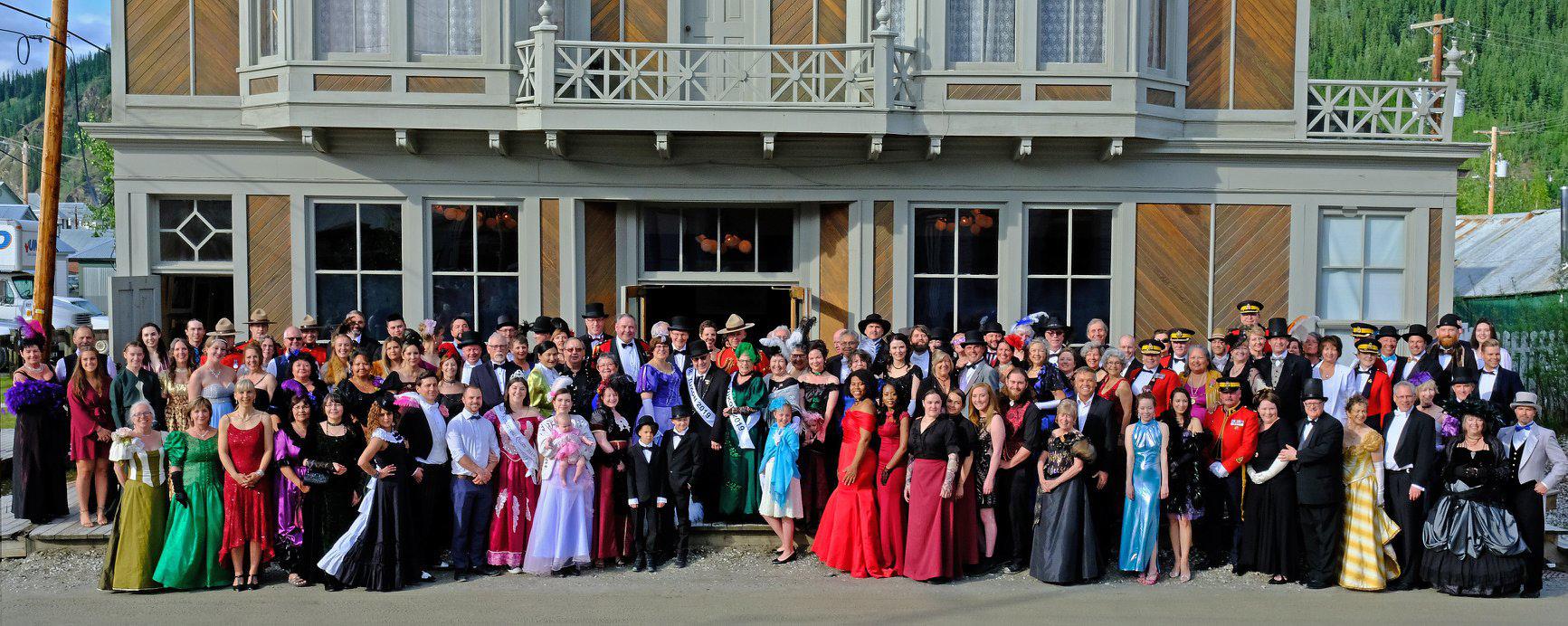
In the 1970s, the Office of the Commissioner of Yukon started organizing a Commissioner’s Ball in Dawson to celebrate the June 13th anniversary. Angélique Bernard, the first Yukon Francophone Commissioner, welcomed guests in 2019.

In 2001, Jeanne de Pocas-Mercier, daughter of Paul-Émile Mercier, shows an article in l’Aurore boréale on her father’s life in the Yukon during the gold rush. The Francophone high school in Whitehorse, opened in 2020, is named after Paul-Émile Mercier.
Claus Vogel
Yann Herry
Prelude to a territory: The Klondike Gold Rush of 1896-1898
AUGUST 16, 1896
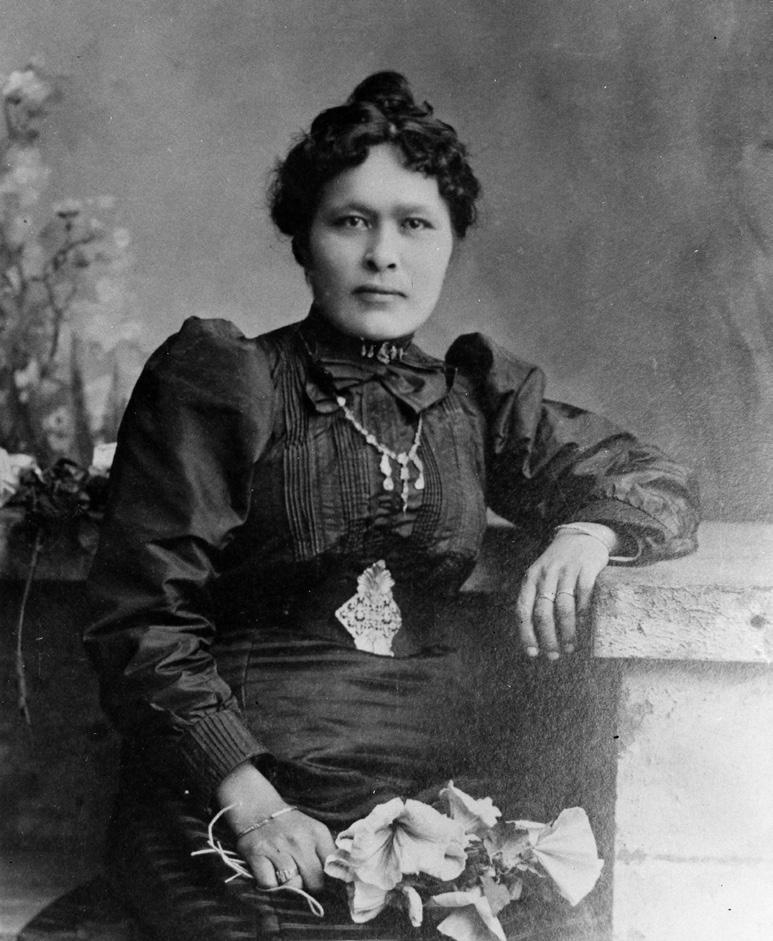
The first Klondike nugget
Shaaw Tláa, of the Tagish Nation, is also known as Kate Carmack. She is a member of the party that discovers the nugget that sets off the Klondike Gold Rush.
14, 1897 WINTER 1898
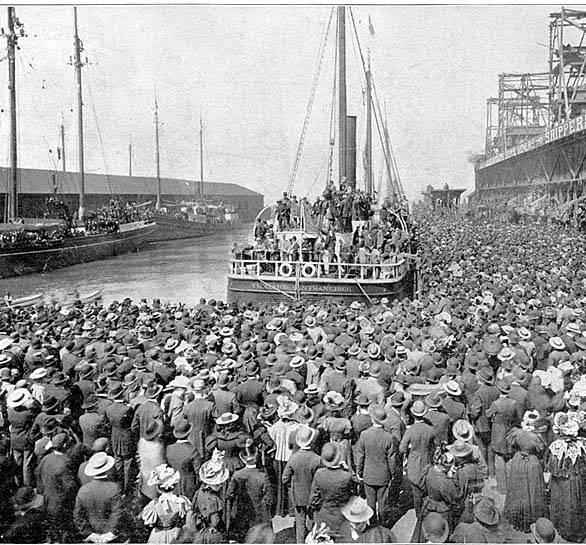
First gold shipment from the Klondike to Seattle
The Excelsior is the first boat to arrive in Seattle with 30 passengers, including Joseph Ladue (Ledoux) and $500,000 of Klondike Gold. The craze is immediate: on July 24, 1897, the Excelsior leaves San Francisco for the Klondike with 350 passengers and about 800 tons of equipment and supplies. Ten thousand people witness this event.

Thousands of people cross the Chilkoot Pass
Thousands of people cross the Chilkoot Pass. Émilie FortinTremblay, who gave her name to the Francophone elementary school in Whitehorse, confided: “I was the first white woman to cross the Chilkoot Pass (in 1894) and because I am French-Canadian, I would like to claim this small honour.” (Bobillier, Une Pionnière du Yukon, Société historique du Saguenay, 1948, p. 10)
1898
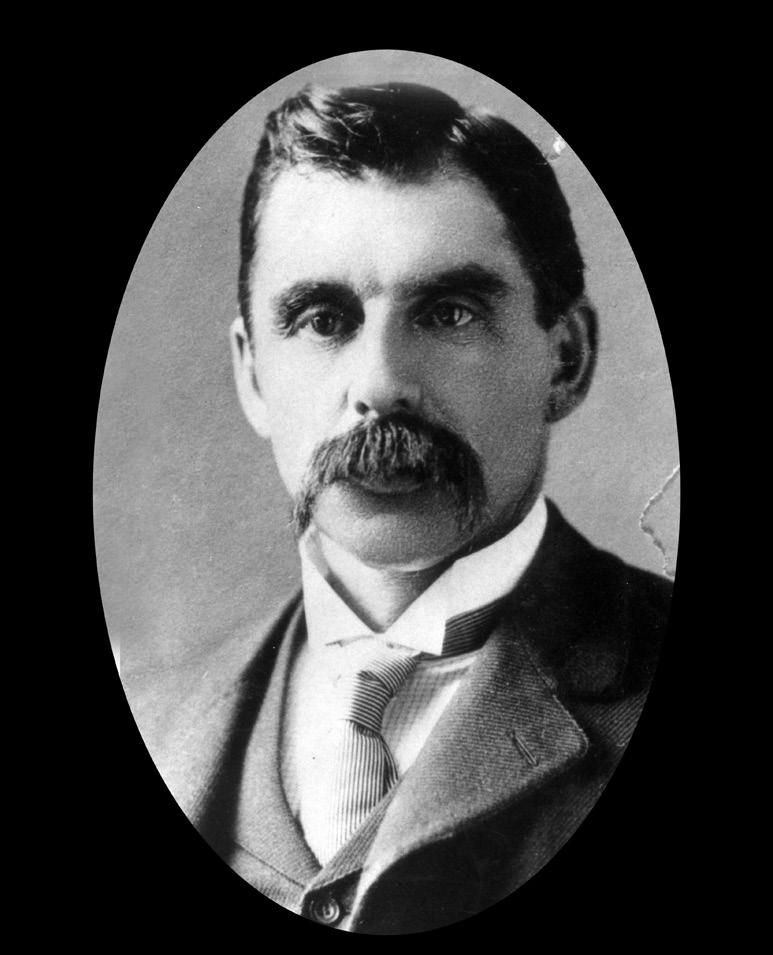
Founding of Dawson
Joseph Ladue (Ledoux), a French Canadian from Plattsburgh, New York, establishes Dawson.
13 1898
The Yukon Territory separates from the Northwest Territories and becomes a distinct political entity
JANUARY
JULY
Yukon Archives, James Albert Johnson fonds, 82/341, #21
of
Libraries, Special Collections PH
1290 UW 14504
University
Washington
coll.
Yukon Archives, Emil Forrest, coll. 80/60 # 1 and BANQ, SHS #246
Yukon Archives, Joseph Ladue Coll. 984R-3
JUNE

THE LURE OF ADVENTURE
Canadian Confederation takes place in 1867. French Canadians continue to criss-cross the North American continent, as they have done since the 16th century. These Francophones take part in all the events that have shaped the history of North America since the arrival of Europeans. The fur trade and gold rushes, including the one in the Klondike, are no exception.
THE FUR TRADE
Charles Farciot, a Swiss Francophone, takes a photograph in 1883 of François-Xavier Mercier (seated in the centre) in front of the Mercier trading post, today in Alaska.
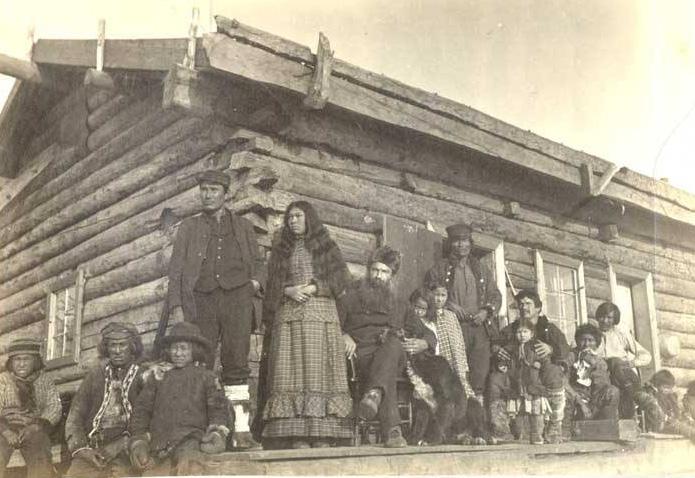
GOLD PROSPECTING
The Paiement family participates in the Klondike Gold Rush.
MEMORIES
Joseph-Ena Duclos, from North Hatley in Quebec, takes photographs of people and life in the Klondike.
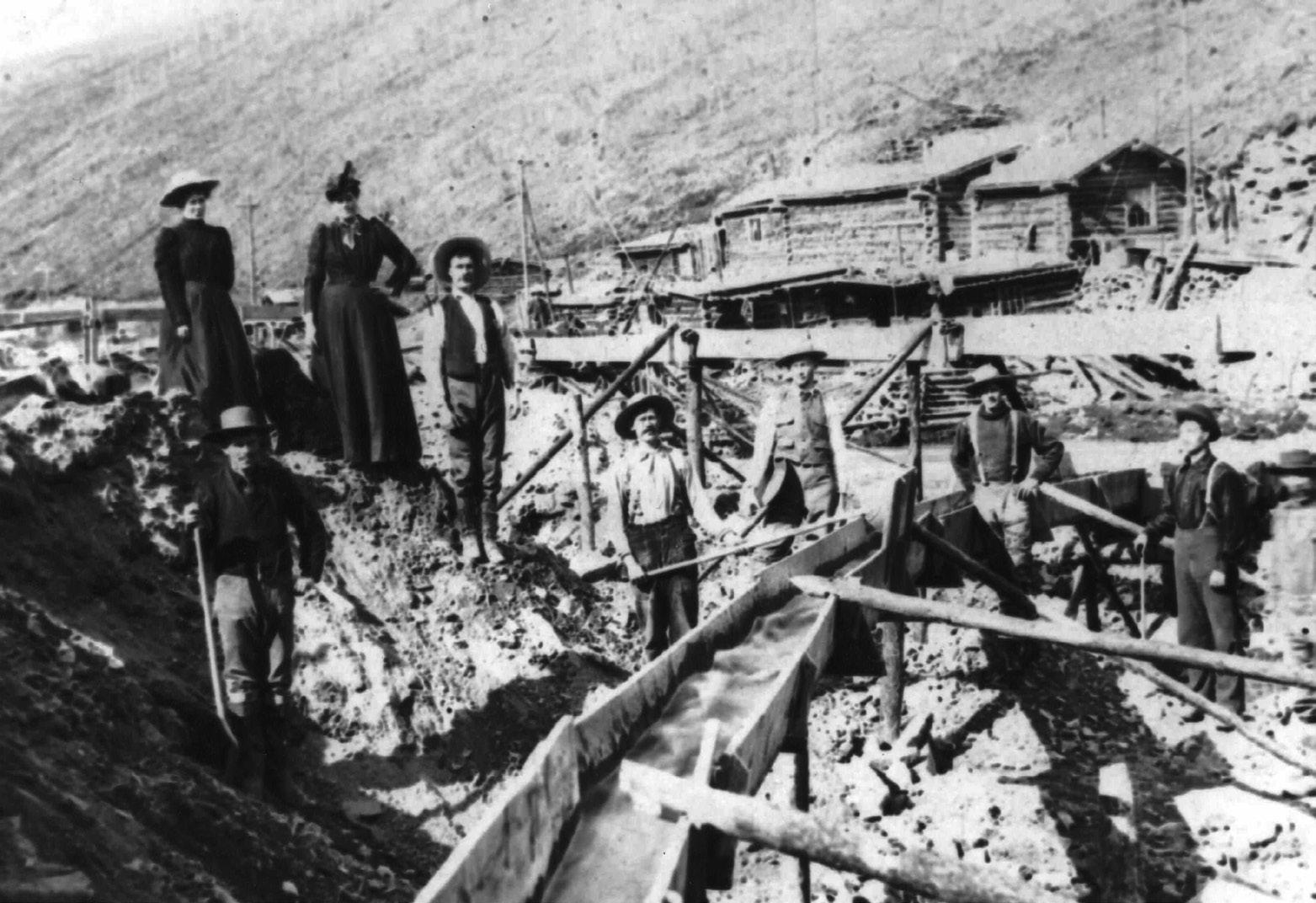
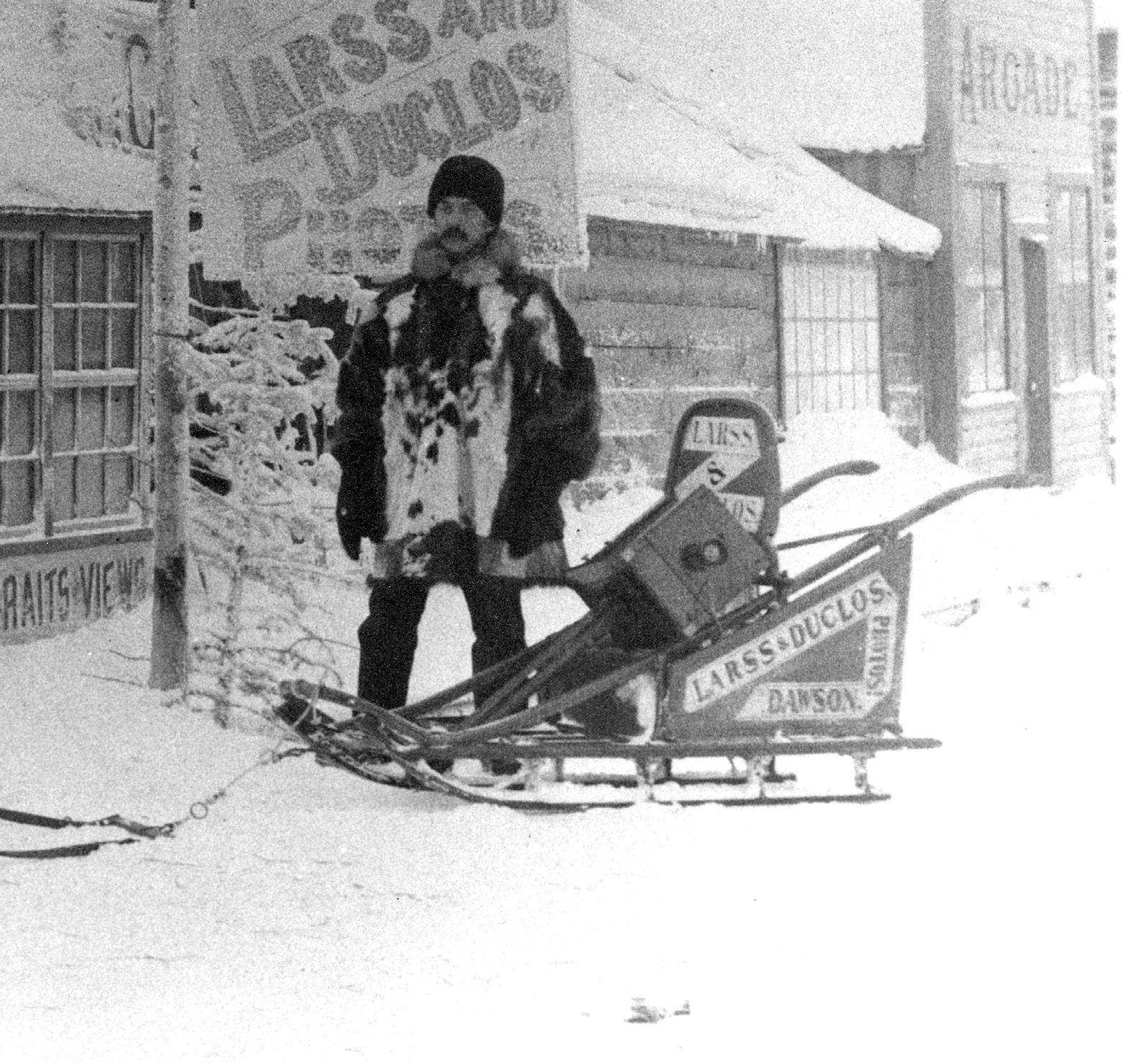
State Library, Wickersham Collection, Charles Farciot, SL-P277-017-037
and
State Library, P.E.
PCA 41-189
Alaska
Dawson City Museum
Historical Society, 984.188 Alaska
Lass Photographer,
THE PROSPECTOR JOSEPH LADUE (LEDOUX) MEETS THE TRAPPER FRANÇOIS-XAVIER MERCIER
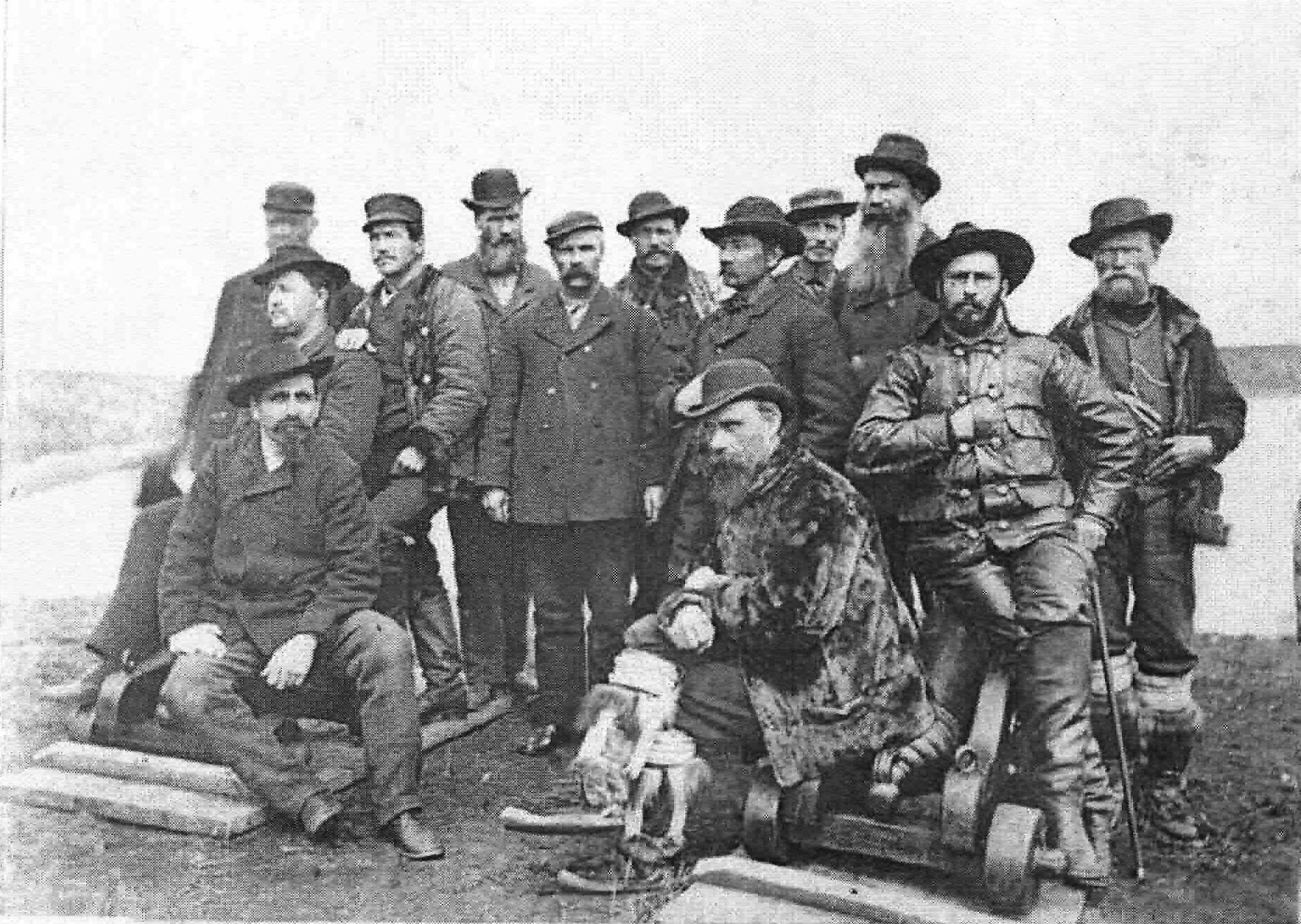
“Now on a beautiful day of April 9, 1883 [it was Easter Day] being on a walk in front of my house, in glancing upstream on the Yukon, I perceived coming toward me four people on snowshoes […] What was my astonishment when they came closer […] the foremost gave me his hand, addressing me in French. It was Joseph Ladue, French Canadian, native of the area of Plattsburgh, N.Y.” – François-Xavier Mercier, Recollections of the Youkon, p. 32.

This is how the trapper François-Xavier Mercier recounts meeting the prospector Joseph Ladue, an event that is emblematic of the shift from fur trading to gold prospecting
DAWSON DURING THE GOLD RUSH


1 oz $200 coin 2023 - Klondike Gold
Rush: Passage of Gold
SL-P277-017-003
MacBride
Alaska State Library, Wickersham Collection, Charles Farciot,
Yukon Archives,
Museum Coll.
The prospector Joseph Ladue (Ledoux) and the trapper François-Xavier Mercier are photographed by Charles Farciot, a Swiss Francophone, in 1885.
in the Yukon.
The upper right-hand corner of the photo shows the Klondike River where it empties into the Yukon River.
COMPANIONS OF FRANÇOIS-XAVIER MERCIER IN CHARGE OF TRADING POSTS
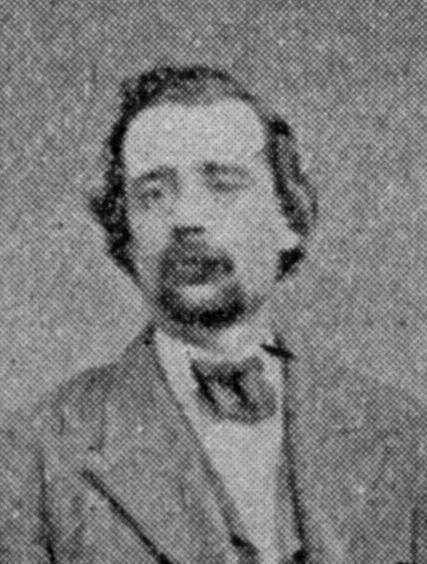
MICHEL LABERGE from Châteauguay gave his name to a lake near Whitehorse


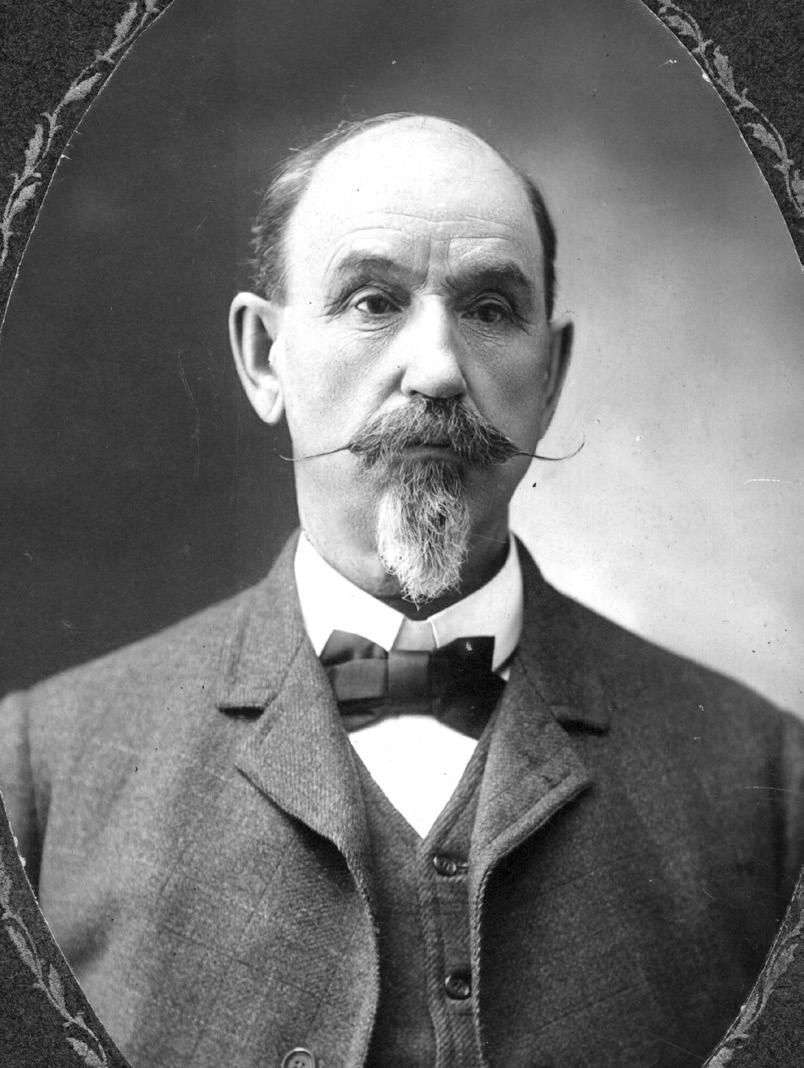
ÉPHREM GRAVEL from Saint Martin NAPOLÉON ROBERT from Saint-Césaire MOÏSE MERCIER, brother of F.-X. Mercier, from Saint-Paul-l’Ermite
DID YOU KNOW?
Other Francophones also worked at the fur trading post, such as JEAN BEAUDOIN, nephew of F.-X. Mercier, and JOSEPH DUFRESNE, assistant of Moïse Mercier at Fort Yukon.
ABANQ n°1798 ( Le Monde Illustré , vol. 14 n°696, p. 297)
TWO FRANCOPHONE COMMUNITIES IN THE KLONDIKE
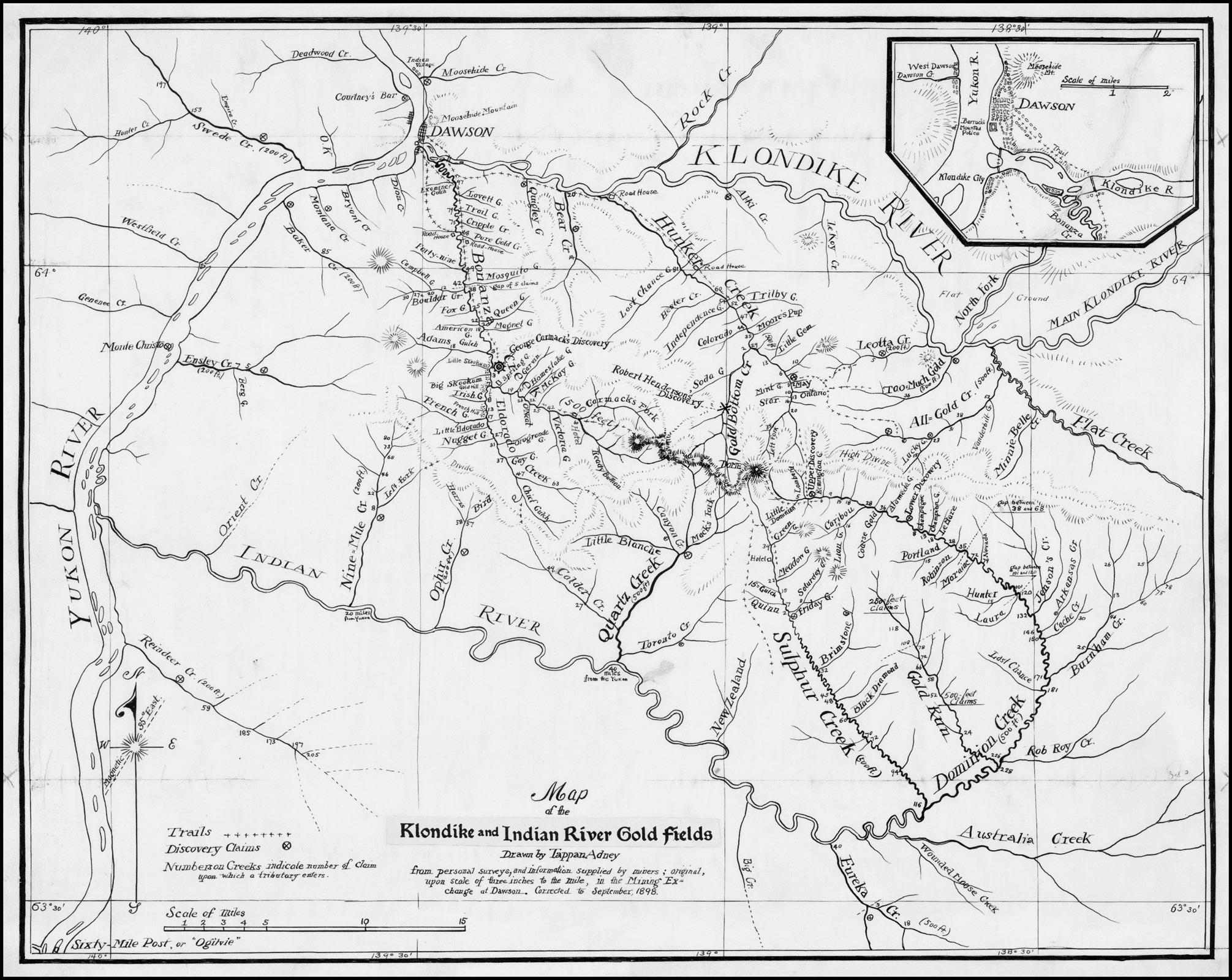
Yukon Archives, Tappan Adney, 1898
COMING FROM THE SAME VILLAGE
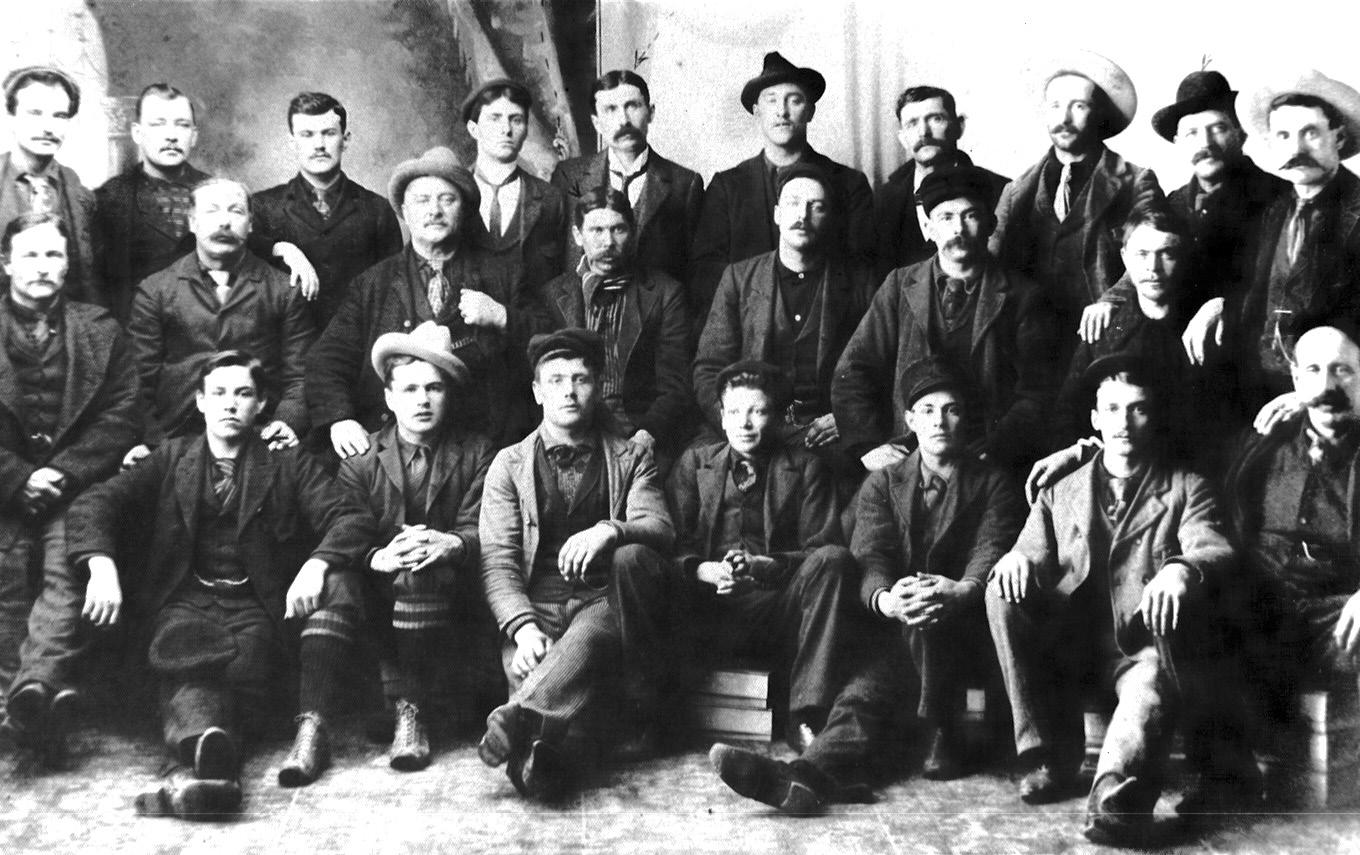
A group of French Canadians from Montmagny, Québec, in the Klondike. The Francophones refer to each other by the name of their village of origin.
“The most interesting feature of the new court to the miners of outlying districts is the expressed intention of Judge Dugas to save those far-off miners the expense of a journey to and a long sojourn in Dawson, whenever they have occasion to use the courts. The judge believes it practicable and just… that the court could adjourn to these places and there dispose of all civil cases.”
(The Klondike Nugget, October 22,1898, p. 4)
Several of the people come from Saint-Rémi, including thirty or so who worked at concession No. 17, where Jack (Pierre-Nolasque) Tremblay was foreman. “New arrivals from Saint-Rémi provide an occasion for ‘canayen’ songs and dancing until midnight. Everyone from Saint-Rémi is in the Klondike! The only one missing is the ‘beadle’ and he’s on his way”, mentions Lorenzo Létourneau in his diary. Even Judge Dugas is from St. Rémi. We call them “St-Rémis”.
(Pomerleau, Les Chercheurs d’or, pp. 216-226)
Quite a long walk separates the two Francophone communities in the Klondike: the one in Dawson where services are provided, and the one in the gold fields where the prospecting takes place.
Montmagny Historical Society
GOLD FIELDS
DAWSON
THE ELECTORAL WEIGHT OF THE FRANCOPHONE COMMUNITY
On June 13, 1898, Canada’s northwest corner became the Yukon Territory. At that time, there were already many Francophones in the territory, even in the political sphere.
Historical statistics and extrapolations
Here!
YUKON CATHOLIC
The weight of the French-speaking world
In 1901, Francophones account for a quarter of the 9,142 people in Dawson, about 2,300 people.
On the church pews
On the gold fields, there are six churches, so potentially between 2,400 and 4,000 Catholics.
“[…] each Sunday [these churches] are filled with worshippers from the French-Canadian population.”
Brief sketch of the World of the Catholic Church in the Yukon, Northern Lights, July 1904)
Hypothesis
Arthur Fortin, editor of the French page in the Yukon Catholic of May 1902, argues that there could be between 5,000 and 6,000 French Canadians in the Yukon.
A BANQUET IMMORTALIZED ELECTIONS AND DISCONTENT AMONG THE MINERS

“The affair was impromptu, but it brought out Dawson’s most distinguished FrenchCanadian residents. [...] The mother tongue (French) was entirely used. [...] Judge Dugas, who acted as chairman, was fully alive to his duties and kept the guests alive with interest by calling upon various men for speeches, songs and recitations. It was late this morning when the party arose from as pleasant an evening as they have passed in Dawson.”
This is how the newspaper The Morning Sun, on July 27, 1902, described the banquet organized for the visit of Federal Minister Raymond Préfontaine during the 1902 federal elections.
A prospector lays out his grievances to Prime Minister Laurier. Maxime Landreville, the miners’ delegate, did the same in 1899, bringing his complaints directly to Ottawa.

(The Daily Klondike Nugget, February 13, 1903)
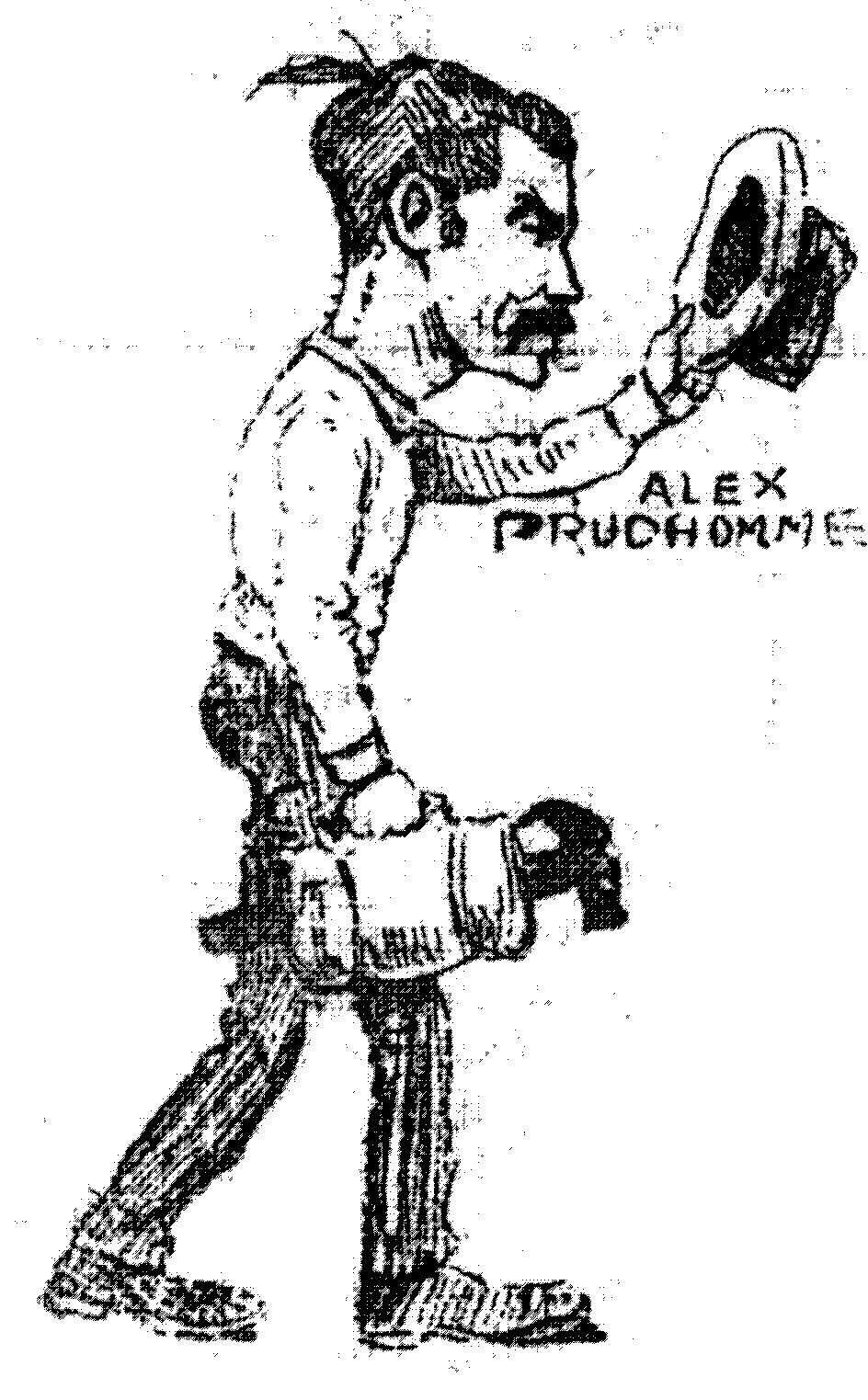
ALEX PRUD’HOMME,
defender of the miners, lectures the crowd in French at political rallies. He is successful in getting the order protecting the miners’ salary passed.
(The Semi-Weekly Nugget, July 1, 1903)
BANQ, n°5654 ( L’Album universel , vol. 20 n°78, pp. 558-559)
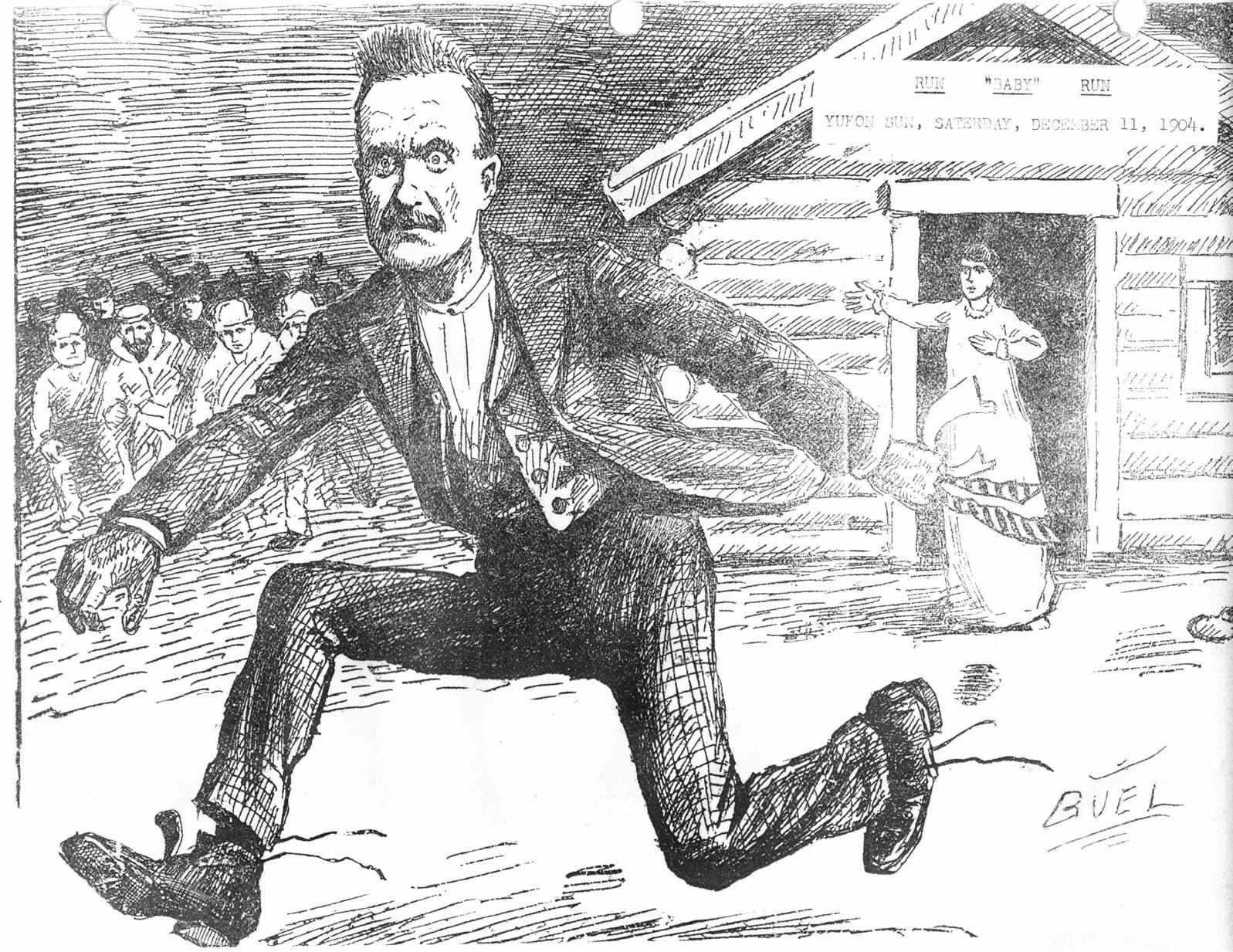
NO PRIVATE LIFE IN POLITICS
“Run, baby, run,” says a woman from a brothel to Joseph-Ena Girouard, clerk of the Territorial Council, ambushed by a mob of angry voters.
(Yukon Sun, December 11, 1904)

NOËL VERSUS PRUD’HOMME, DAWSON VERSUS THE GOLD FIELDS
“You city chaps can’t represent me,” says a miner torn between two candidates from Dawson in a caricature published in The Daily Klondike Nugget on December 27, 1902.
Aimé Dugas, clerk at the Yukon Gold Commission and son of Judge Dugas, warns Minister Israël Tarte, in Ottawa: “The vast majority [of miners] will vote for two members of Parliament that are opposed to all current authority. I do not believe that even the vote from the police and militia will be enough to upset this majority.”
UNITED BUT NOT UNANIMOUS
Although the French language brings us together in our celebrations, we do not speak with one voice in politics. Francophones in Dawson sometimes oppose Francophone miners when it comes to wages, timber licences, mining regulations, water access and the awarding of mining concessions.
TICKETS, AN ELECTORAL SYSTEM USED NOWHERE ELSE IN CANADA
Because of the number of Francophones in the Klondike, a system of tickets was introduced, the only one of its kind in Canada. Each political party ran a pair of candidates, one Francophone and one Anglophone.
�
RESULTS OF THE 1900 ELECTIONS
“The representatives seem to want us to vote for Noël and O’Brien, but my mind’s been made up for a long time. I’ll be voting for Prud’Homme and Wilson. I’ll be voting against my bosses. And since it’s a secret ballot, I don’t care,” says miner Lorenzo Létourneau. Hearing about the election results, he gloats: “Hurray for Wilson and Prud’Homme. They won the election. Hurray for me.”
(Pomerleau, Les Chercheurs d’or, p. 226)
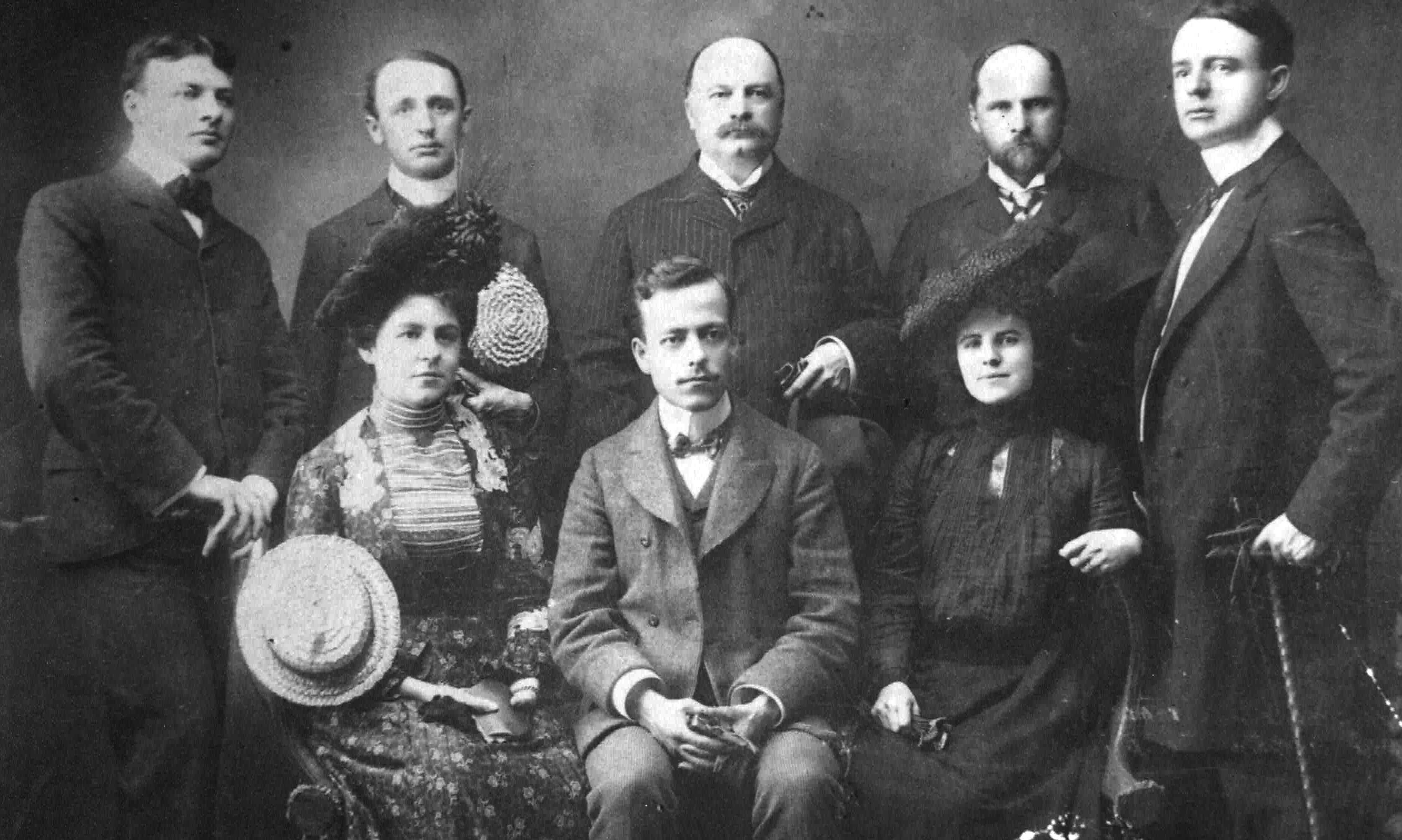
BILINGUAL ELECTORAL PLATFORMS AND ADS
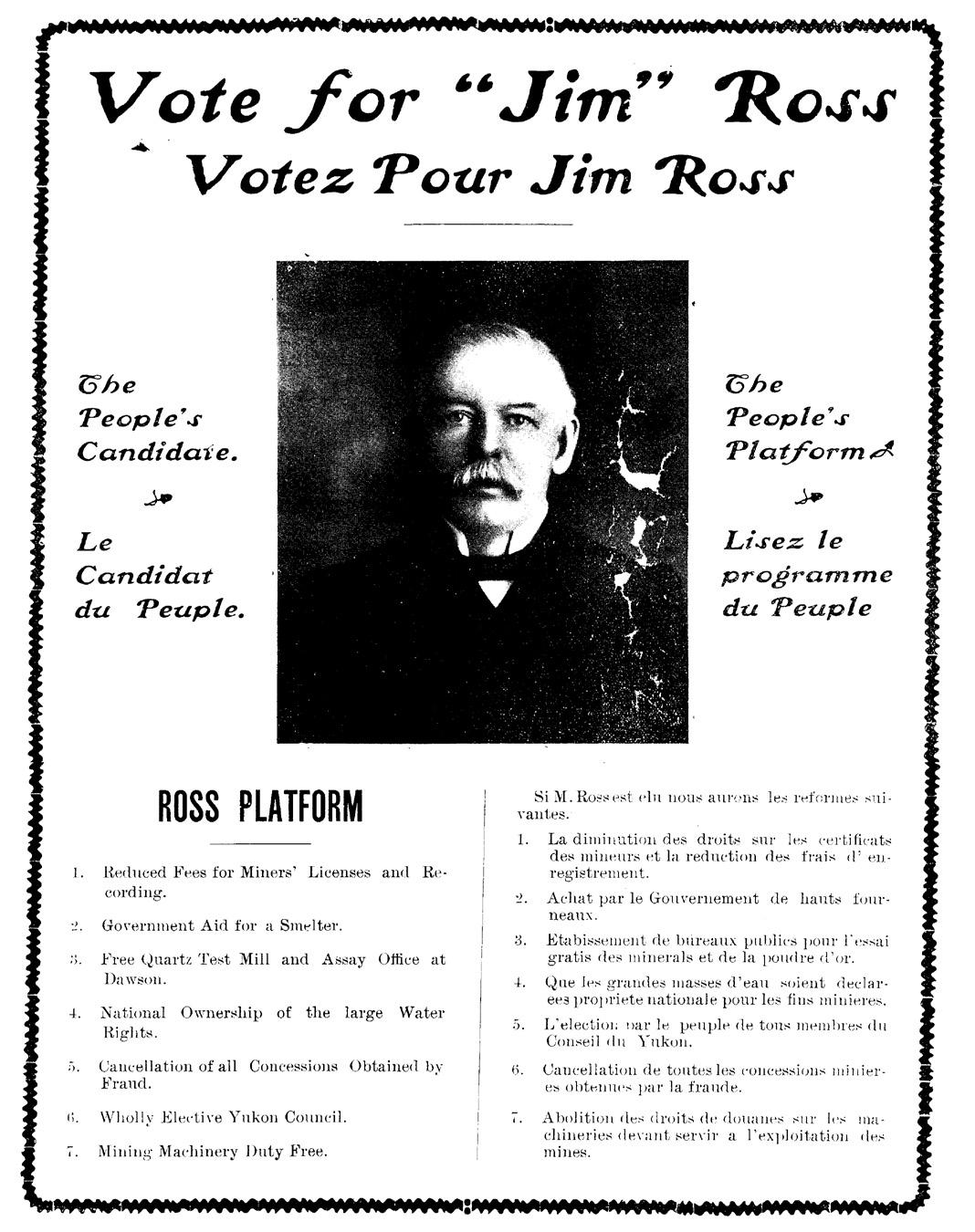
Counting
and electoral programs (The Daily Klondike Nugget, October 6, 1900).
The Noël-Pelletier-Robert family
on the Francophone vote. Bilingual election ad (The Yukon Catholic, novembre 1902)
� �
Auguste Noël (right) and the Dawson Francophone political elite. All the men in this picture are lawyers or officials appointed by the Laurier Government.
HELLO-BONJOUR: DAWSON, A CITY WHERE FRENCH-LANGUAGE SERVICES ARE OFFERED
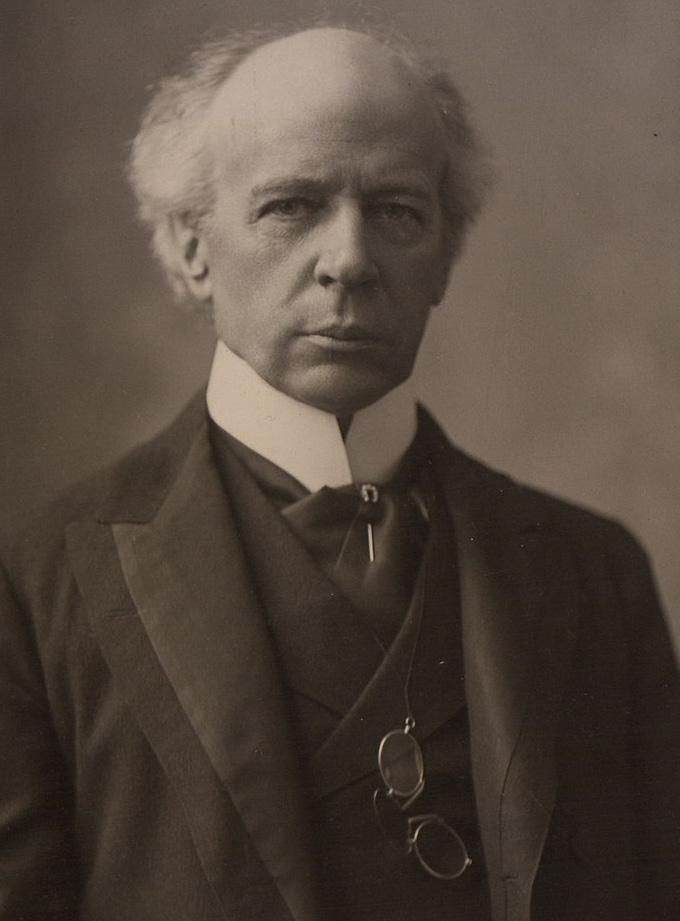
The presence of Francophones in the Yukon is nothing new. In Dawson, bilingual services have been offered for more than 125 years. There were enough French Canadians in the Yukon to justify having bilingual civil servants in key positions: the gold commissioner, record keepers (including at the land registry), the superintendent of public works, civil engineers, surveyors, municipal and legal library managers. In addition to the public service, there were Francophone professionals (such as lawyers and doctors), business owners (hoteliers), clergy and service providers (mail, newspapers, music). Social and political groups were formed.
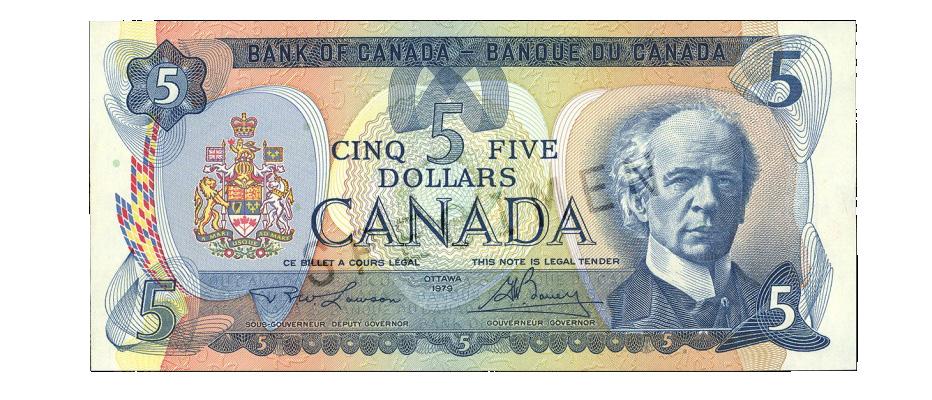
1841-1919
WILFRID LAURIER, THE FIRST FRENCH CANADIAN TO BECOME PRIME MINISTER OF CANADA

Wikimedia Commons
The gold rush took place during the term of Wilfrid Laurier, the first French Canadian to hold the position of Prime Minister of the Dominion of Canada. The public service was becoming more Canadian than British. Francophone institutions of higher education in Lower Canada had been established as early as 1663. Wilfrid Laurier needed to keep abreast of the situation in the Yukon concerning borders with the United States, gold production and elections. He sent to the Yukon people he had met during his studies or who worked in his law firm in Arthabaska in Québec.
FRANCOPHONE SOCIAL AND ECONOMIC FOOTPRINTS
The Yukon Francophone reference book Empreinte, written by Caroline Boucher in 1997, mentions that between 1899 and 1950, Francophones managed about fifty businesses in Dawson.
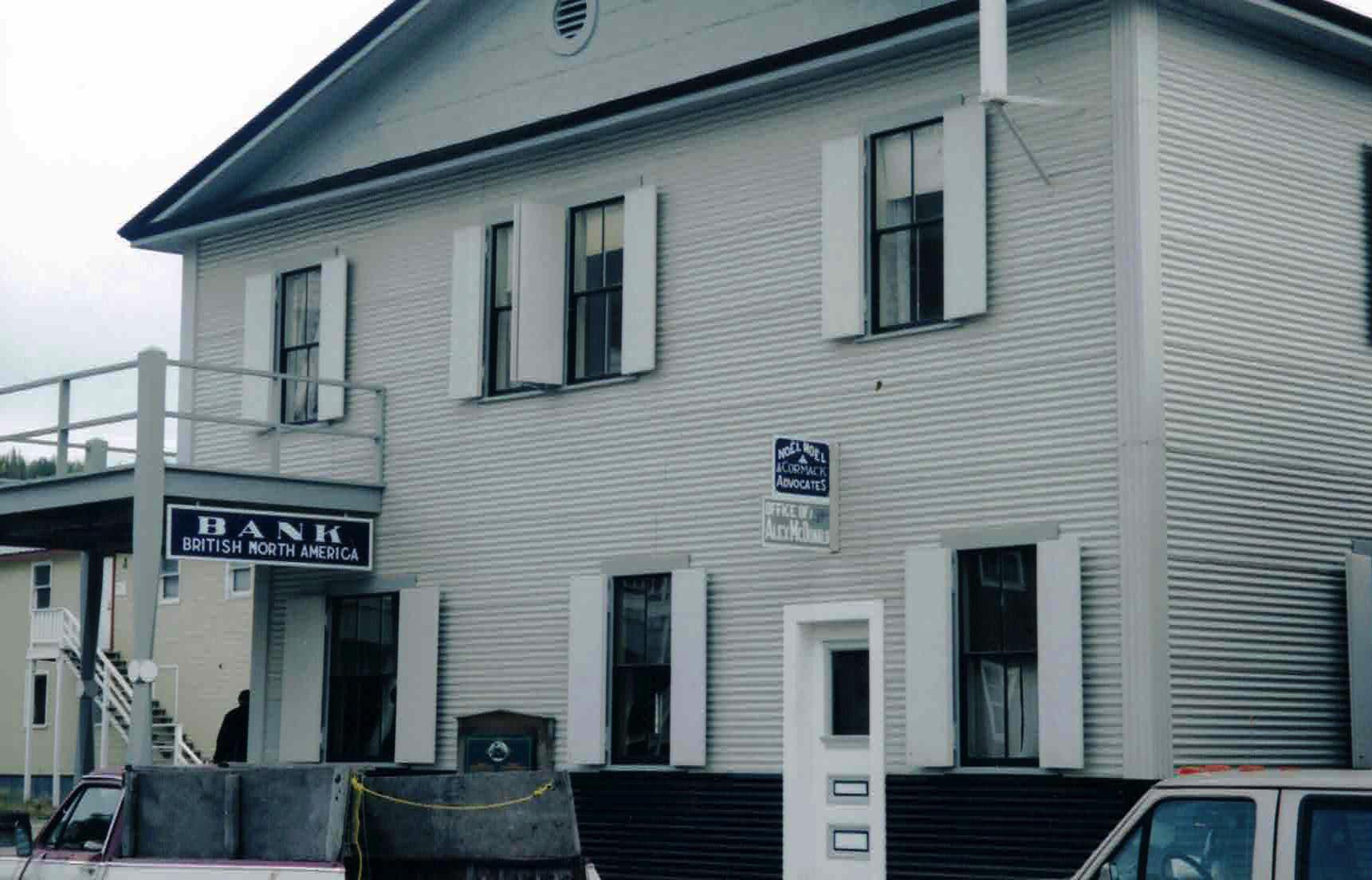
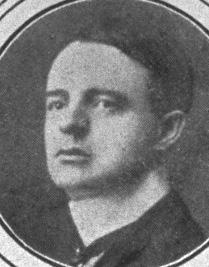
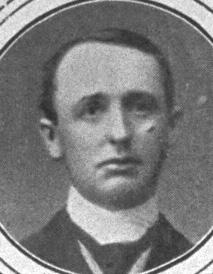



… consult lawyers … get a supply of wood, a staple in the Klondike ... eat Noël and Noël law office beside the British North American Bank, a location then used by the Bank of Montréal and now by Parks Canada. Joseph Ladue
Juneau,
l’Ermite, restaurant
Dawson and
Alaskan capital. Auguste Noël Camillien Noël IN DAWSON, KILOMETRES FROM THE GOLD FIELDS, WE CAN DO SO MANY THINGS IN FRENCH… Yann Herry BANQ, n° 5654 Dawson City Museum, J. Francis Ladue Coll. PH984R-190-3 Alaska State Library, Alaska Purchase Centenial Commission, PCA 20-12 Alaska State Library, Coll P.E. Larss, PCA 41-63
(front centre) in front of his sawmill. Joseph
from Saint-Paul
owner in
co-founder of the
(CONTINUED) IN DAWSON, KILOMETRES FROM THE GOLD FIELDS, WE CAN DO SO
MANY THINGS IN FRENCH…
… seek justice
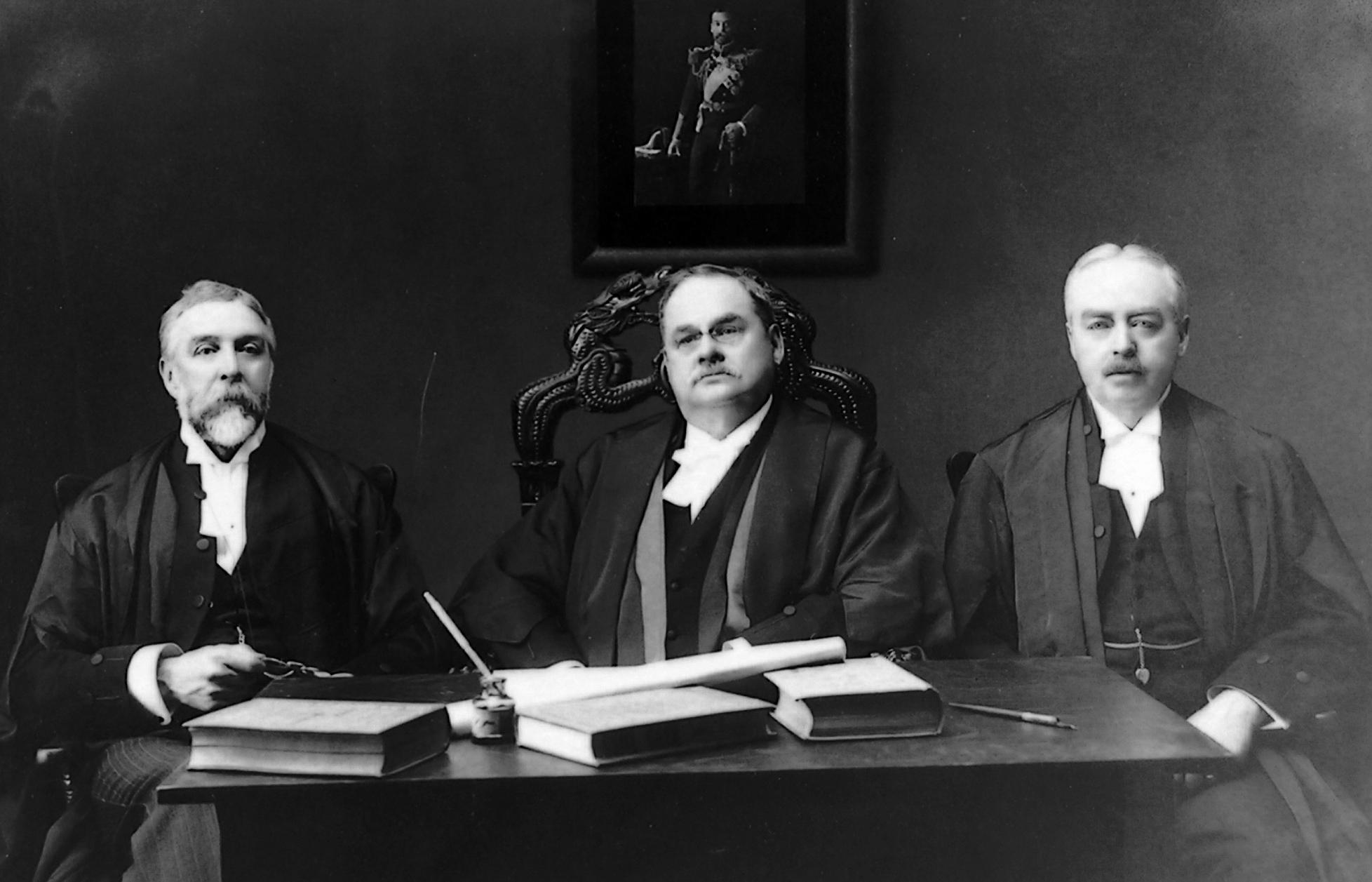
Calixte-Aimé Dugas, Chief Justice of the Yukon Superior Court (middle). As such, he sat on the Territorial Council that governed the Yukon. The judge conducted all kinds of cases, from various outrageous inquiries to the sentencing of Victor Fournier and Édouard Labelle to death by hanging for the murder of four French Canadians.
… receive medical care and treat toothaches … take a bath and kill lice
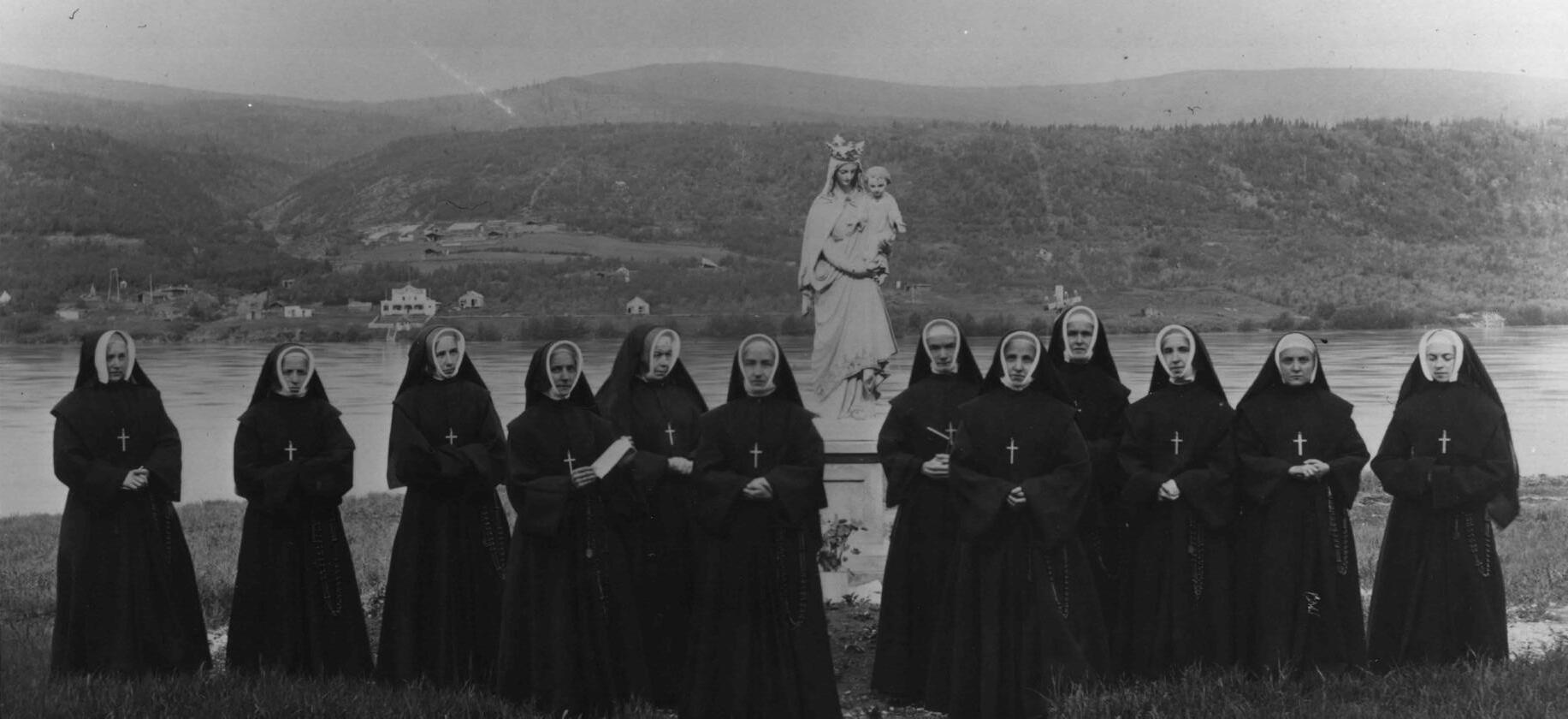
The Sisters of St. Ann from Montréal who work at the school and Sainte Marie Catholic Hospital in front of the statue donated by Dr. Omer Lachapelle following a difficult operation. “Pray,” said the doctor to the sisters in the operating room. “I must save this woman’s life. She has five little children. I need all the help that God can give me.” Sister Marie Zénon suggested that he give a statue of Our Lady if the surgery was a success. “And it shall be one with Holy Mary holding her Child,” answered the doctor. Several years later, the statue was moved to Victoria.
(Extract from Cantwell, The Sisters of Saint Ann in Alaska and the Yukon Territory , p. 97)
DID YOU KNOW?
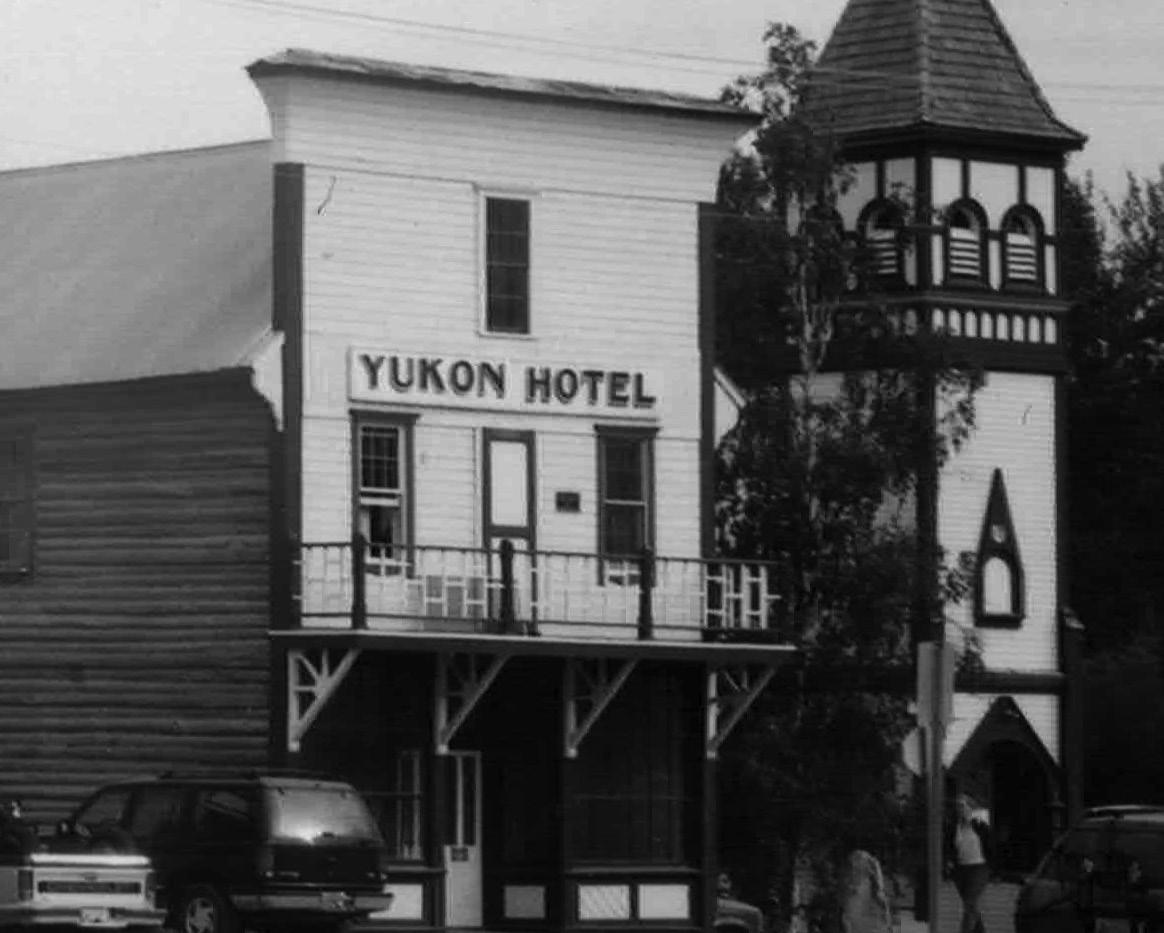
The Montreal Hotel owned by Mr. Chabot from Montréal had a casino and a saloon with booths for the dancers and “their guests.” The miner Lorenzo Létourneau stayed at the Yukon Hotel owned by the Binet brothers from Charlesbourg. In town, he could take a bath. “We have good accommodations and, all will be well, apart from the lice that I will catch. I washed off my little insects and scalded them,” he said.
(Pomerleau, Les Chercheurs d’or , pp.137, 228 and 234)
Élie Vereau (or Verreau) transported mail and bags of gold between the Klondike and Alaska. In Dawson, George Kincaid learned about the delivery of gold from Fairbanks. A carpenter, he had the run of all the government buildings. He entered the post office, threw two bags of gold, for which Éli Verreau was responsible, and which were worth $48,000 each, and tried to sell some of the gold. As the gold was different than the one from the Klondike, the bank notified the Royal NorthWest Mounted Police. When Kincaid learned he was under suspicion, he boarded a steamboat for Whitehorse. The police found his lifeless body in a cabin after he committed suicide by taking cyanide. The trial was presided over by Judge Dugas. There were no consequences for Éli Vereau. (Hamilton, The Yukon Story, p. 186)
Dawson City Museum, 1984.166.1-PER
Yukon Archives, Sister of St. Ann Coll, 96/17 #7
Yann Herry
(CONTINUED) IN DAWSON, KILOMETRES FROM THE GOLD FIELDS, WE CAN DO SO
MANY THINGS IN
FRENCH…

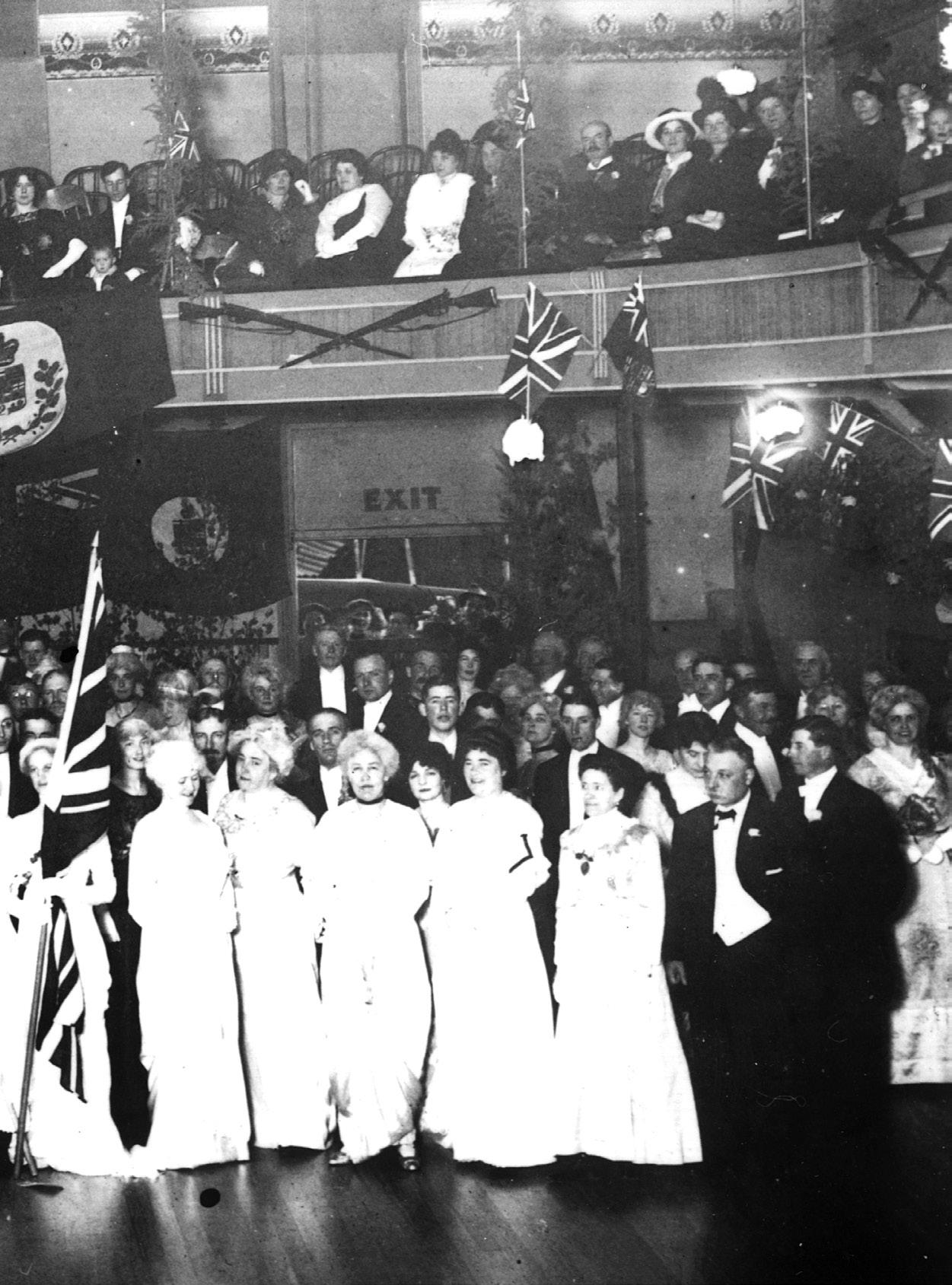
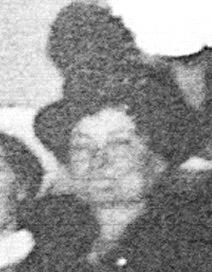
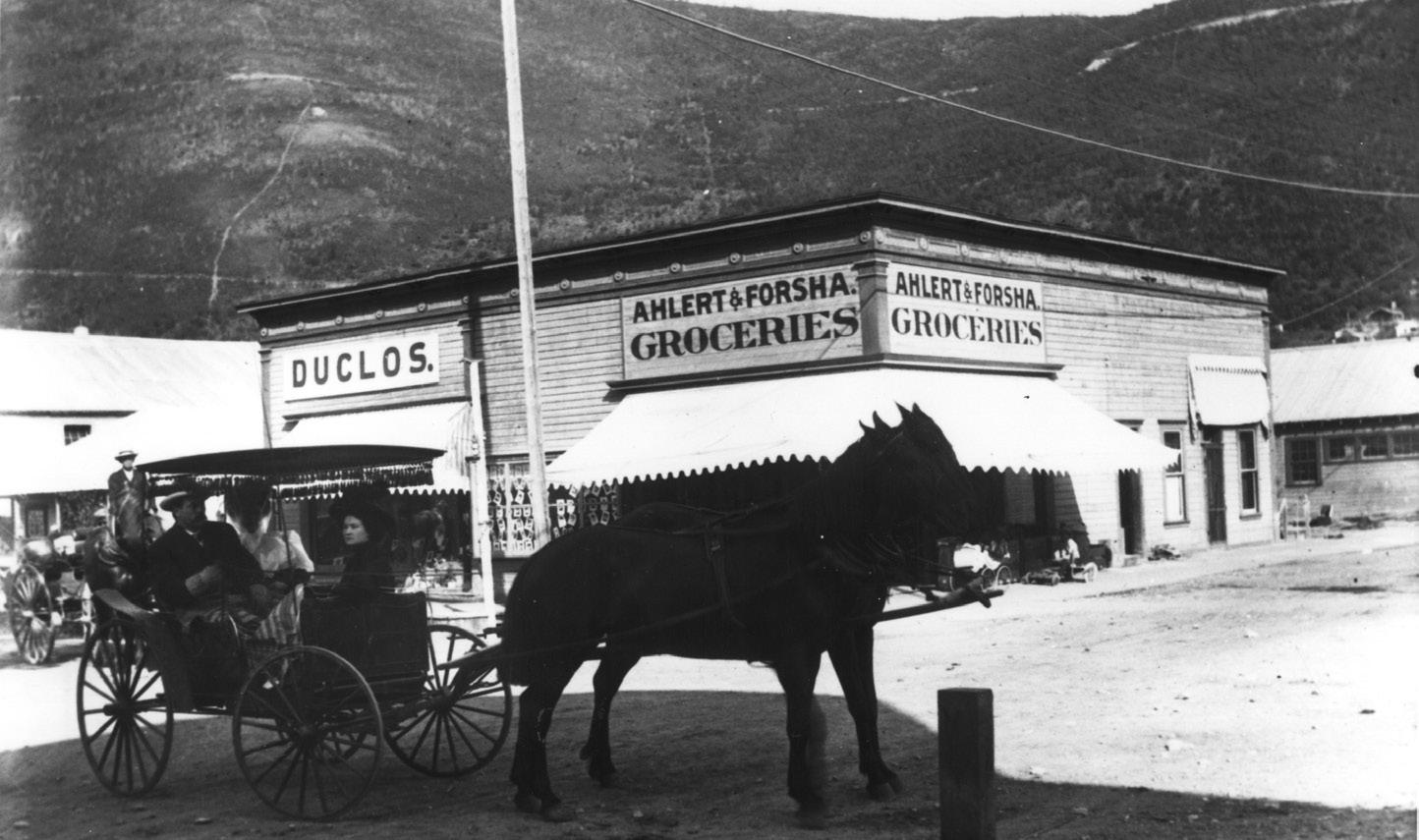
…get the
… be entertained … be photographed at the Duclos Studio
mail
A crowd in front of the Dawson post office in 1898. “We received eight letters between the five of us. We read our letters aloud,” wrote Lorenzo Létourneau. He was saddened by the loss of thirty-six bags of mail in a shipwreck.
(Pomerleau, Les Chercheurs d’or , pp. 216-219)
a picture of your loved ones. Yukon Archives, Coll. National Museum of Canada 82-321-6487
Archives, Imperial Order Daughters of the Empire
88/115 [1]
Archives, Coll. National Museum of Canada #762
Émilie Saint-Hilaire photographed by her husband, J.-E. Duclos, on the balcony of the Palace Grand Theatre.
Having
Yukon
Coll.
Yukon
(CONTINUED) IN DAWSON, KILOMETRES
FROM THE GOLD FIELDS, WE CAN DO SO MANY THINGS IN FRENCH…
… deposit gold and record claims


… enjoy fashion
 François-Xavier Gosselin managed the production of the yellow metal.
( The Semi-Weekly Klondike Nugget , September 14, 1901)
Store of Madame Eliza Rousseau.
Yukon Archives, Coll. National Museum of Canada #742
François-Xavier Gosselin managed the production of the yellow metal.
( The Semi-Weekly Klondike Nugget , September 14, 1901)
Store of Madame Eliza Rousseau.
Yukon Archives, Coll. National Museum of Canada #742
IN THE GOLD FIELDS: A COMMUNITY OF FRANCOPHONE MINERS
“The standard three whistles (from the boat) signaling farewell to the inhabitants of the Klondike. I couldn’t help but feel two contradictory emotions: the joy of departure and the sadness or regret of leaving behind this life which, despite all the exhaustion and hardship, always irresistibly drew you in.” This ambivalence reflects the feelings of numerous French Canadians, from the beginnings of New France to today: an attachment to family throughout North America and the exciting call of adventure.

Concession 17 Eldorado
Lorenzo Létourneau from Saint-Constant de La Prairie wrote in his diary every day from January 1898 to August 1902. He shed light on the Francophone world in the Klondike gold fields. The diary was published by his great-nephew, François Gauthier, in 2006 under the name 17 Eldorado
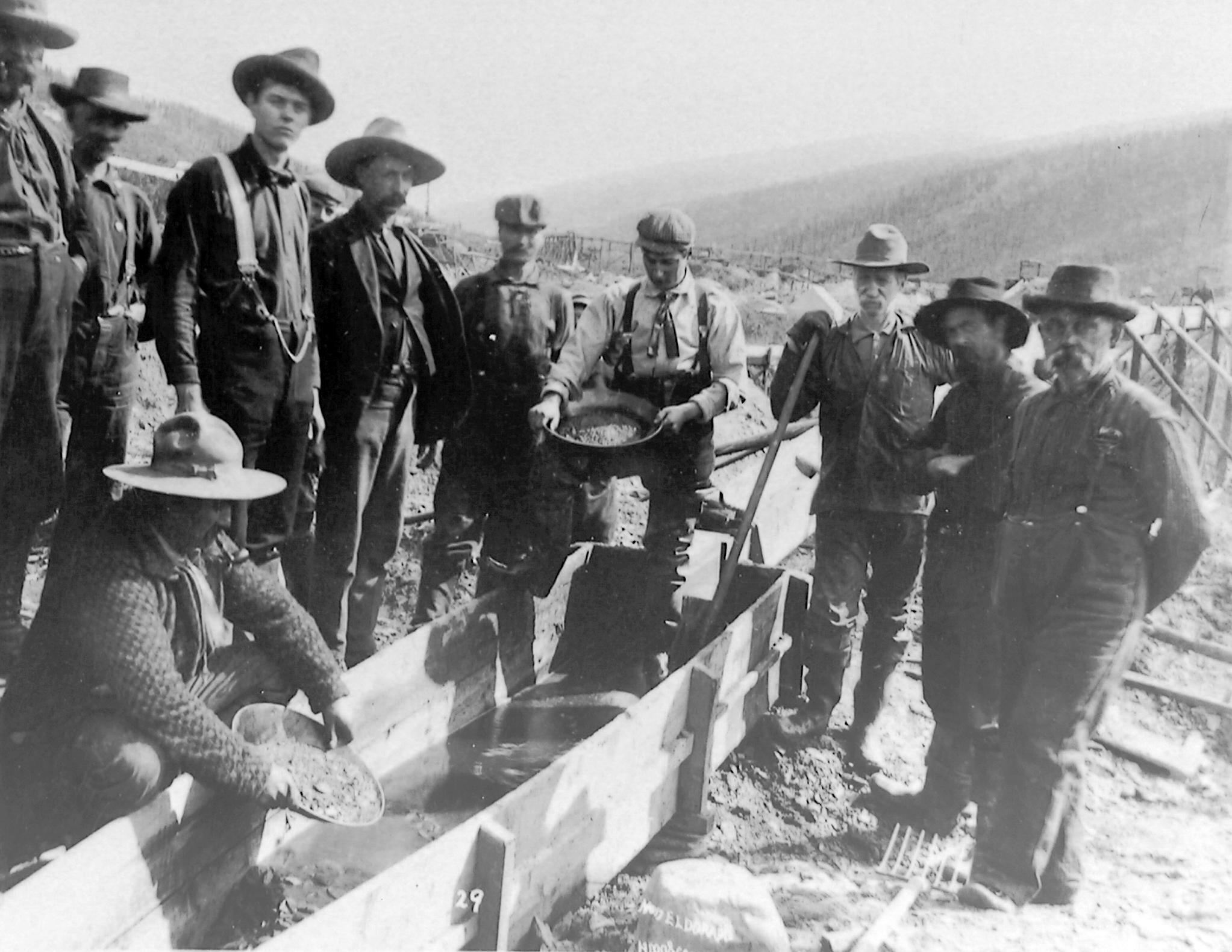
Many Francophones, including Lorenzo Létourneau, worked on concession 17 Eldorado owned by Narcisse Picotte from Saint-Rémi. Eighty employees attended the wedding of the foreman PierreNolasque Tremblay’s sister-in-law. Tremblay was the husband of Émilie Fortin-Tremblay.
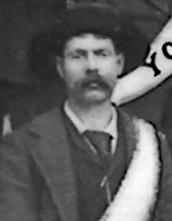 Madeleine Perron-Chayer, Lorenzo’s niece
Dawson City Museum, #991.401.34
Yukon Archives Collection, University of Alaska, #3133
Lorenzo Létourneau in 1897
Narcisse Picotte
Madeleine Perron-Chayer, Lorenzo’s niece
Dawson City Museum, #991.401.34
Yukon Archives Collection, University of Alaska, #3133
Lorenzo Létourneau in 1897
Narcisse Picotte

Long distances to travel!
Albert Forrest, from Mont-Carmel, at the age of seventeen the youngest goaltender in the 1905 Stanley Cup, delivered newspapers and the mail by bike.
3,000 gold dollars on his back
Létourneau had an injured foot after walking to Dawson and back in two days. Another time, he traveled the distance in 13 hours. He promised himself he would not do that again as the next day, he was weak and feverish, was in a out of consciousness and had very stiff muscles.
Bleeding feet and generosity
For 28 days, the sisters walked 475 miles and collected $10,000 for the hospital. Their guide gave this report: “I doubt if any sister ever had a like experience filled with hardship and often delicate situations. They were indeed heroines. The rich gave some and the poor frequently gave all.”
Cantwell et Edmond, The SSA in Alaska and Yukon , p. 88.
Letters by any means
Émilie Tremblay brought the post that arrived by boat. It was delivered by dog sled to people who lived in more remote areas.
The stagecoach arrives at last!
In December 1901, for the first time, Létourneau did not need to walk fifty miles to Dawson.
DESPITE THE DISTANCES, THE FRANCOPHONE COMMUNITY GATHERED FOR TRADITIONAL CELEBRATIONS, ELECTIONS AND WEDDINGS

Saint Jean Baptiste Day Celebration 1904
“The grand fete held on Dominion Creek last Friday by the French Canadians and their friends in honor of their patron saint will long be remembered by those present as the most successful celebration ever held on Dominion Creek.”
( The Dawson Daily News , June 27, 1901)

A Saguenay Wedding
Second row, fifth from the right, in the grey suit “Jack.” Beside him, from left, Émélie, Father Joseph Desmarais, Marie and Onésime. Marie Fortin, sister of Émélie [sic] Fortin-Tremblay, married Onésime Gravel, long-time friend of PierreNolasque (Jack) Tremblay, Émélie’s husband.
“Eighty men (French-Canadians from concession No. 17) attended the ceremony in their working clothes: overalls, tall mining boots, ‘Klondike’ hat. They were due back in the fields after the meal. A few of them had chipped in to buy a Yukon ring, a gold nugget for the groom and an ornate brooch adorned with a gold nugget for the bride, worth about sixty dollars.”
(Bobillier, Une pionnière au Yukon, Madame Émilie Tremblay, pp. 5253).

Wedding of Belinda and Charles-Eugène
At the Saint-Joseph de GrandeFourche Church, at the confluence of the Eldorado and Bonanza gold creeks, the bells rang for the wedding of the fabulously wealthy businesswoman Belinda Mulrooney and the so-called “Count” CharlesEugène Carbonneau, whom many people, such as Joseph Poitras and Judge Dugas, had known as a barber in Montreal. In attendance were the Barrettes, an influential prospecting family: Norbert, his brother Joseph with his wife Flore Dufresne and their daughters, including Alice who would go on to marry Aimé, Judge Dugas’ son. The engaged coupled arrived in a sleigh in front of 500 guests. To show their status and wealth, the married couple installed electric lights in the church. When they went down the aisle, the lights went out. The couple also had enemies. The wires had been cut. “All I could do was giggle, said Belinda. The menu was in French. The count had brought from Europe the most marvelous bed”, said Belinda.
(Mayer, Staking Her Claim , p. 231)

New Year 1905
“There was a goodly number of French Canadians in Dawson and they were a close community, visiting one another and celebrating their traditional holidays together, notably New Year day,” recalls Blanche PépinLambert, daughter of Gédéon Pépin, the famous Dawson musician.
(Bibliography of Gedeon Pepin, p. 10)
Pam and Kenneth Forrest
Yukon Archives, Emil Joseph Forrest Collection
Bolotin Collection
Saguenay Historical Society
Yukon Archives, Emil Joseph Forrest Collection
AN EXPERIENCE THAT LEFT ITS MARK

“I will not leave the Klondyke [sic] with a fortune but rather as a poor and free man,” concluded Lorenzo Létourneau on the eve of his departure in 1902.
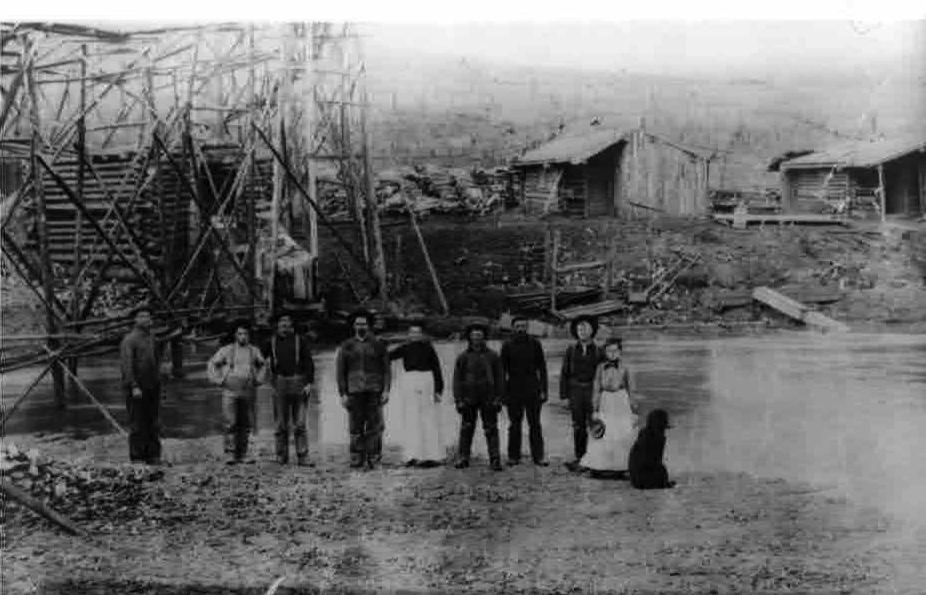
A cart called the “stagecoach.”

Mr. Bertrand, superintendent of public works, and engineer Taché supervised the improvement of transportation routes. Electricity arrived in November 1899.
“Tonight, the No. 16 turns on the electric lamps for the first time at 7 o’clock.”
(Pomerleau, Les chercheurs d’or , p. 17)
In 1906, a rail link was completed.

HERE COMES PROGRESS! FAMILIES LIKED TO GATHER ANC, H.J. Woodside Coll., PA-016128 ANC, H.J. Woodside Collection, PA-0116512 Yukon Archives, R.R. Fortier Collection, # 93/108R # 3 Yukon Archives, Blanche Lambert Collection, 3 82/327
The Gagnon family on its Dominion Creek claim (1898) The Pépin-Saint-Pierre family
WHITEHORSE, EVERYONE GETS OFF, EVERYONE GETS ON
“We have been following the situation for the last hour and a half. Everyone is taking their chances. One boat gets across, another one sinks, and so it goes. We have decided to hire a pilot to guide us. According to our observation, it was better to have someone with experience. Indeed, before us, five people drowned while crossing the rapids.”
(Yukon Archives, Travel Diary of Mr. J.-Arsène Simard, MSS199 86/58)
Yukoners from Acadie and the Gaspé leave their traces
The Cyr brothers, Antoine (Tony) and Maxime (Max or Mike) were from a logging region in northwestern New Brunswick: felling trees, tackling tumultuous rivers, driving draft horses, living in camps, anything to make a living in Whitehorse in 1898 as they contributed to the development of the town.
Danger, danger!
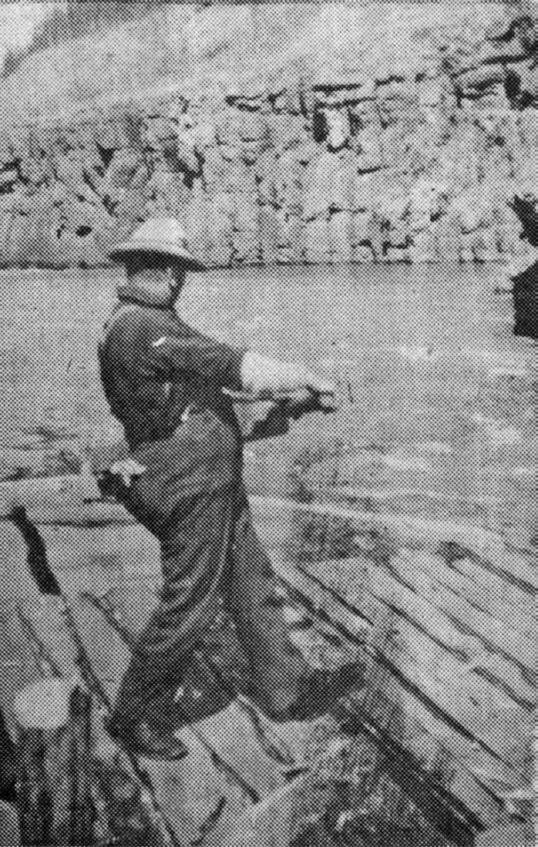
Myles Canyon and the White Horse rapids, which were referred to with these names in numerous French documents, were the major obstacles on the Yukon River. Many people drowned, including the pilot Alphonse Larose, known for tackling the Ottawa and Lachine rapids. The North-West Mounted Police forbid travelling without a pilot. People walked or used the wooden rail

Wood & Fire
Joseph-Édouard Marcotte ran a barbershop behind Cariste Racine's Windsor Hotel. A fire broke out, wiping out a third of the town's businesses.
( Dawson Daily News , Whitehorse Swept by Fire , May 23, 1905)
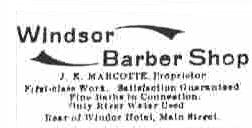 trams (right). The Cyr brothers took care of the horses. Maxime Cyr, who guided boats in the canyon (left), told his nephew Laurent Cyr that he guided the writer Jack London, who was not reassured.
Photo provided (Laurent Cyr)
Dawson City Museum 1970.2.1.12
Maxime Cyr in the canyon
trams (right). The Cyr brothers took care of the horses. Maxime Cyr, who guided boats in the canyon (left), told his nephew Laurent Cyr that he guided the writer Jack London, who was not reassured.
Photo provided (Laurent Cyr)
Dawson City Museum 1970.2.1.12
Maxime Cyr in the canyon
MISSING THE BOAT A COMMUNITY HARD AT WORK
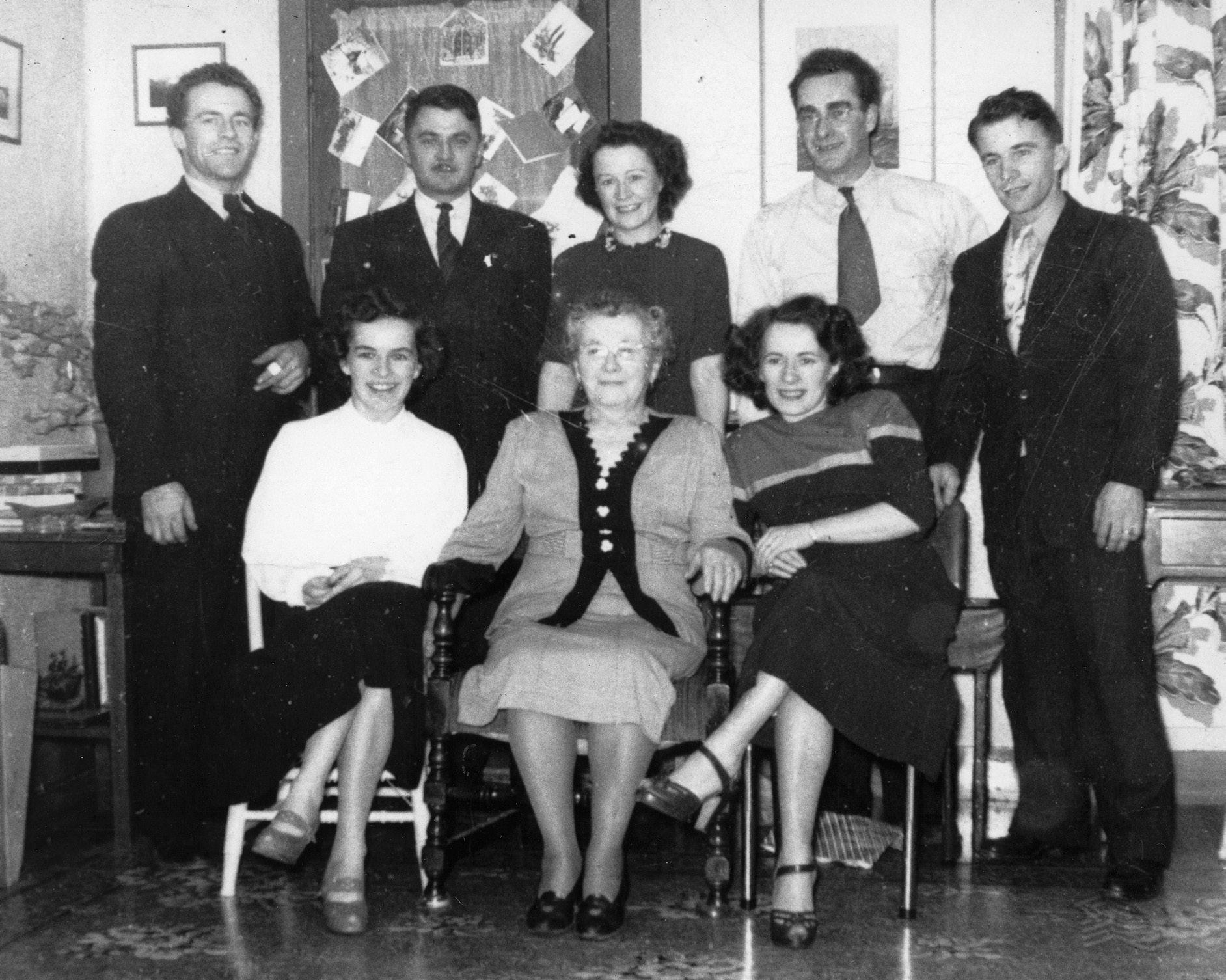
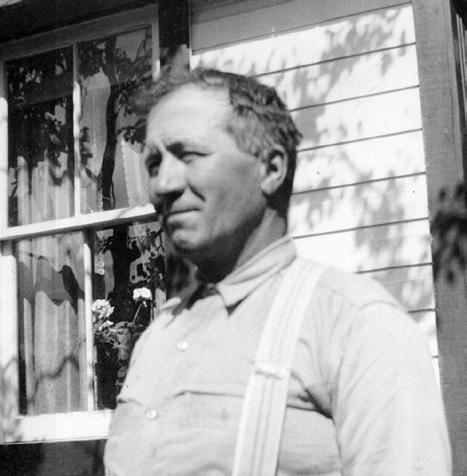
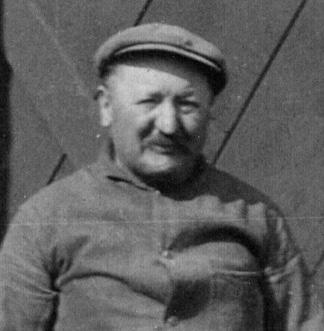
Marie-Ange Beaudin from Gaspésie (centre) with her children in 1951. A widow with two children, she came to the Yukon in 1918 to live with a relative. She became disappointed and wanted to go back to Quebec. However, there were no more seats on the last boat before winter. Inconsolable and not speaking English, she got help from Madame Larose who called on Antoine Cyr. Antoine and Marie-Ange were married a few days later. The boat, the Princess Sophia , sank with three hundred passengers.
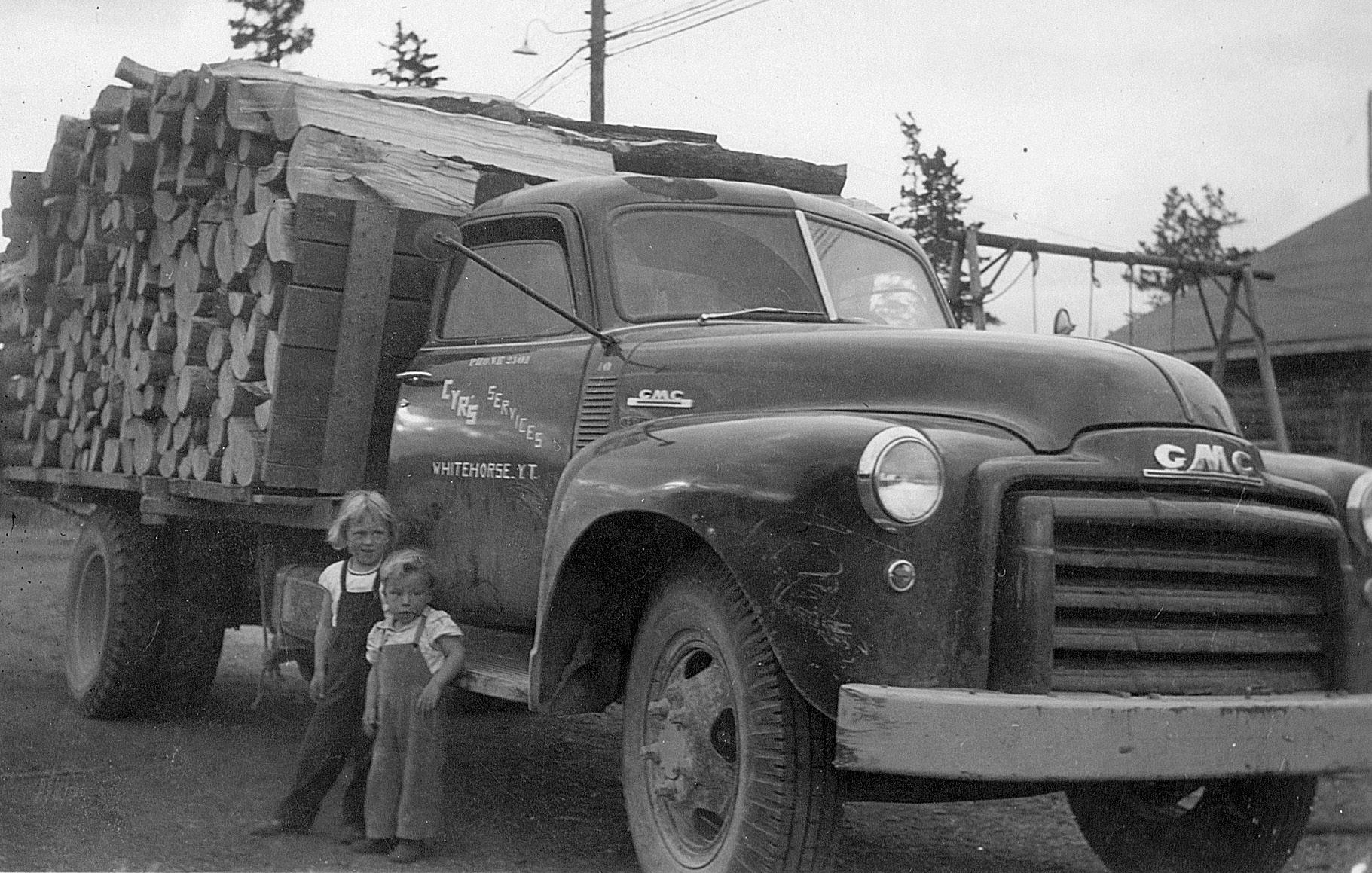
The Cyr children beside a delivery of wood. The demand for heating and the construction of boats and buildings guaranteed the family a good income. The wood was transported on the Black Street ravine trail, which ran up the hill to the airport.
Doctor Louis-Alphonse Paré in 1903 (front) in the territory’s first car. He needed to contain epidemics caused by the unsanitary conditions people had endured during lengthy trips. He insisted that people eat vegetables to prevent scurvy.
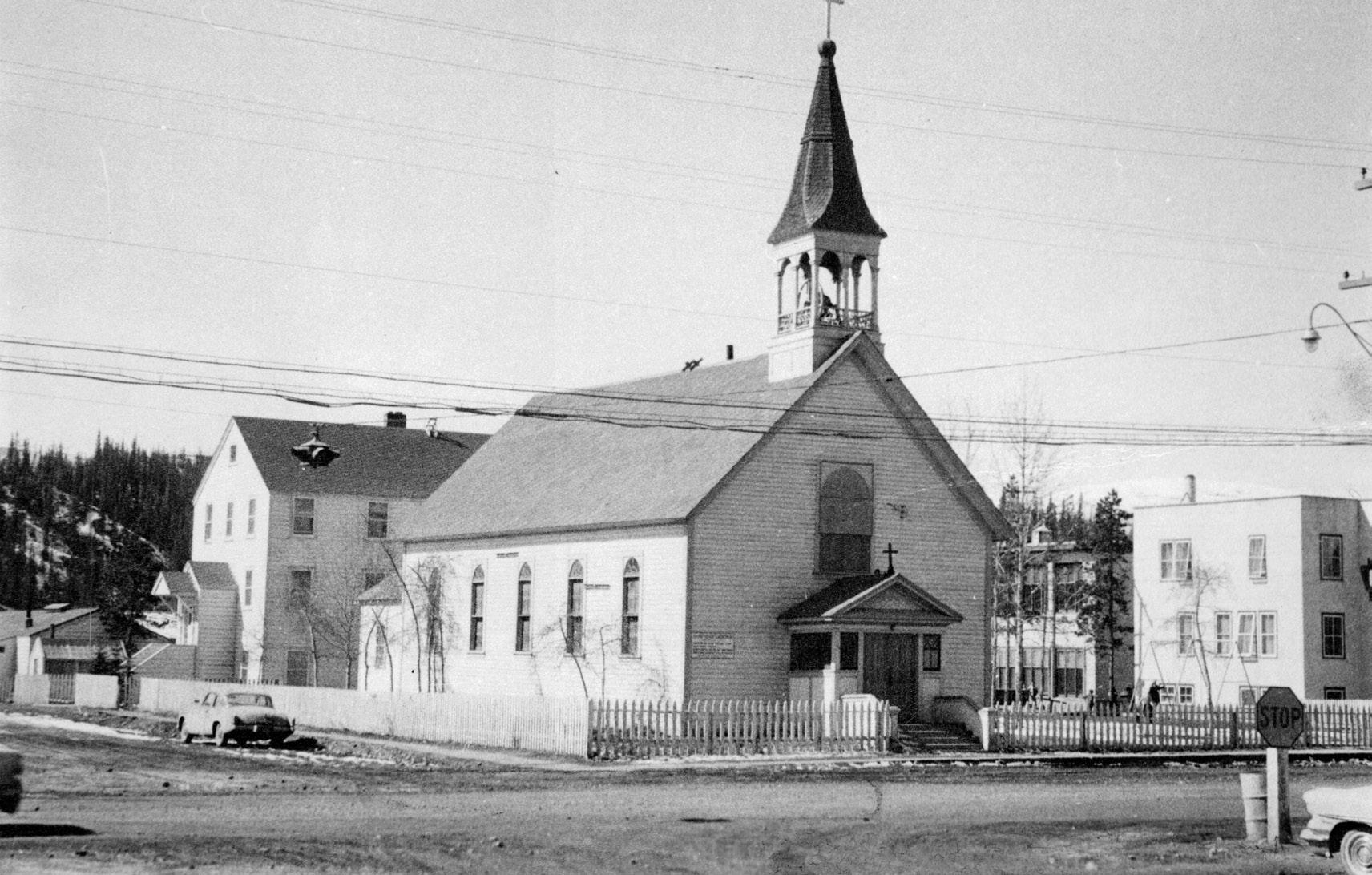
th Avenue and Steele
Francophones helped build the Sacred Heart Catholic Church. Engineers Taché and Mercier prepared the plans, the Cyrs cleared the land, the Oblate Father Camille Lefebvre went to Vancouver to get supplies, brother Augustin Dumas sawed the boards, Damase Lafortune, Auguste Bray and R. Minard helped with the sawing.
Dr. Louis-Alphonse Paré welcomed Bishop Adélard Langevin from Saint-Boniface, who came to bless the church’s bells. Léda Drapeau was the organist. The first mass took place in 1901.
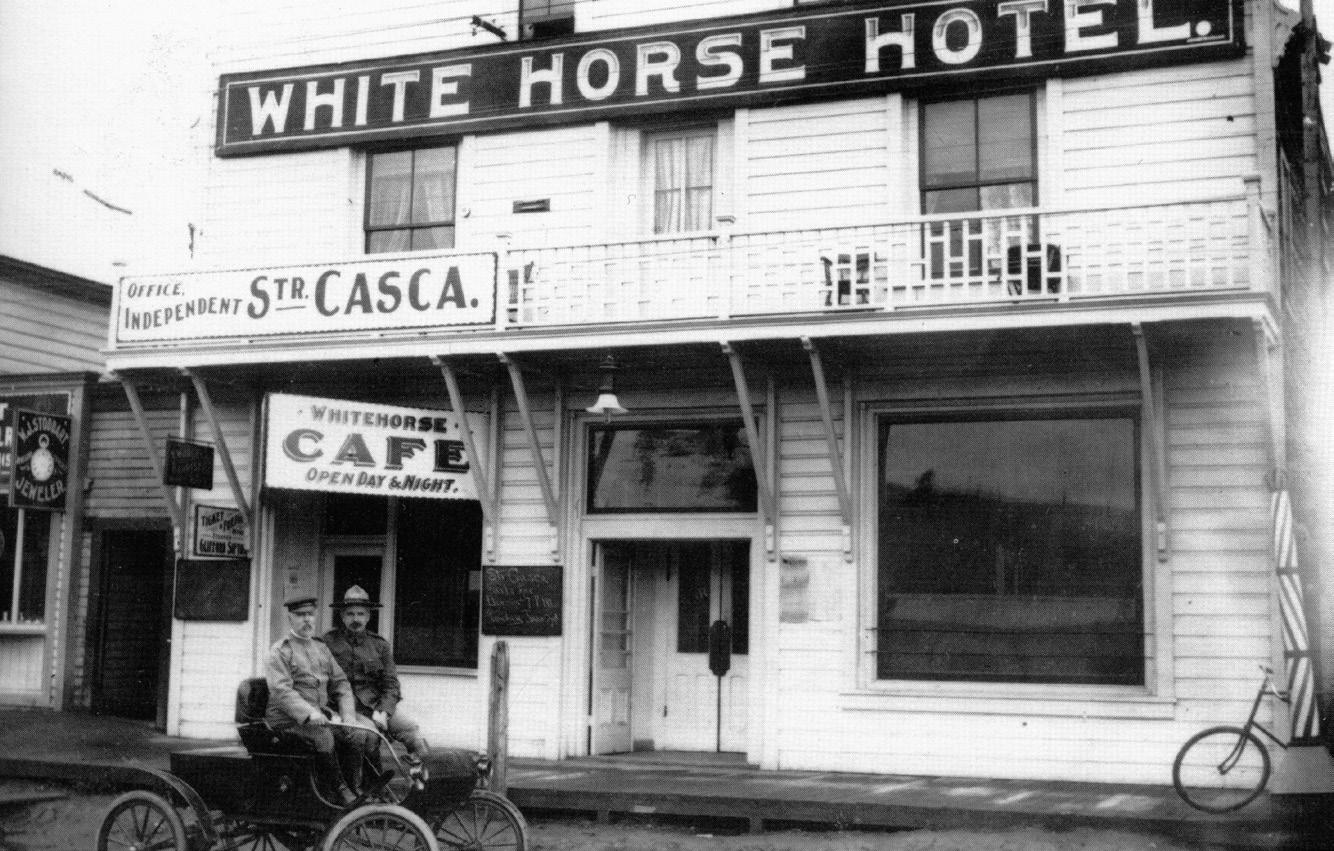 Photo provided (Laurent Cyr)
Photo provided (Laurent Cyr)
Yukon Archives, Postcard Collection, 2009-10 #7
Left to right: the rectory, Sacred Heart Church and convent-school. 4
Street.
Photo provided (Laurent Cyr)
Photo provided (Laurent Cyr)
Antoine Cyr Maxime Cyr
Diocese of Whitehorse
Photo provided (Laurent Cyr)
Photo provided (Laurent Cyr)
Yukon Archives, Postcard Collection, 2009-10 #7
Left to right: the rectory, Sacred Heart Church and convent-school. 4
Street.
Photo provided (Laurent Cyr)
Photo provided (Laurent Cyr)
Antoine Cyr Maxime Cyr
Diocese of Whitehorse

The wood lot that became an airport
In 1920, the first plane landed on Antoine Cyr’s woodlot, the only place that was high enough, flat and deforested. This would become the site of the Whitehorse Airport. “My father was probably pulling stumps while the planes were landing because they didn’t know how much room would be needed,” Laurent Cyr said, laughing. Laurent is one of Antoine’s sons and was one of the founders of the MacBride Museum.
( Whitehorse Star, First Plane Landing Recalled , August 4, 1995)
The union of two big French-Canadian families
During the solstice of 1901, Paul-Émile Mercier, whose father was the Premier of Quebec, married Marie-Louise Taché in Whitehorse. She came from a family of engineers who had been involved in the construction of several provincial legislature buildings, and among her ancestors was a line of Kamouraska seigneurs, including Etienne-Paschal [sic] Taché, one of the fathers of Confederation, Jean-Charles Taché, who was among the drafters of the Canadian Constitution, and Alexandre Taché, the first archbishop of the Saint-Boniface diocese, which stretched from Manitoba to Alaska. The Mercier and Taché families had arrived in Canada in 1647 and 1730, respectively.
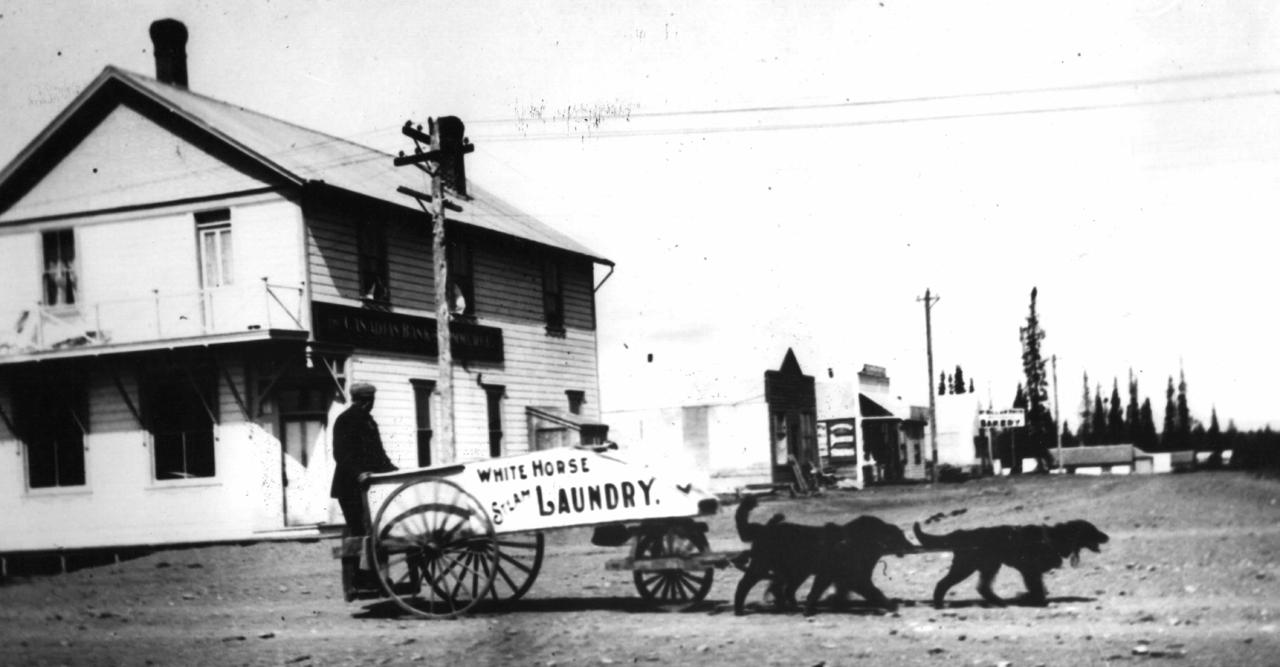
In 1960, Émile Forrest (Forest) from Trois-Rivières was not the pilot during the final voyage of the Keno to Dawson. He died from a heart attack while helping to launch the boat.
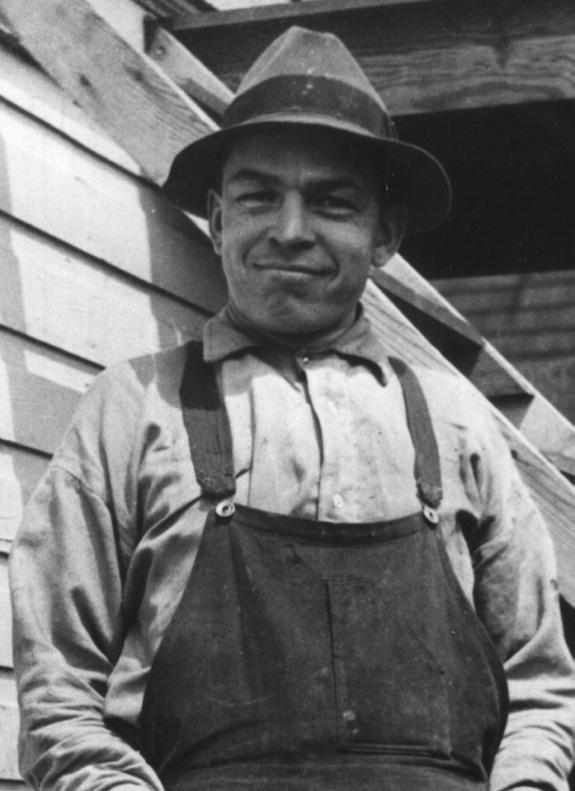

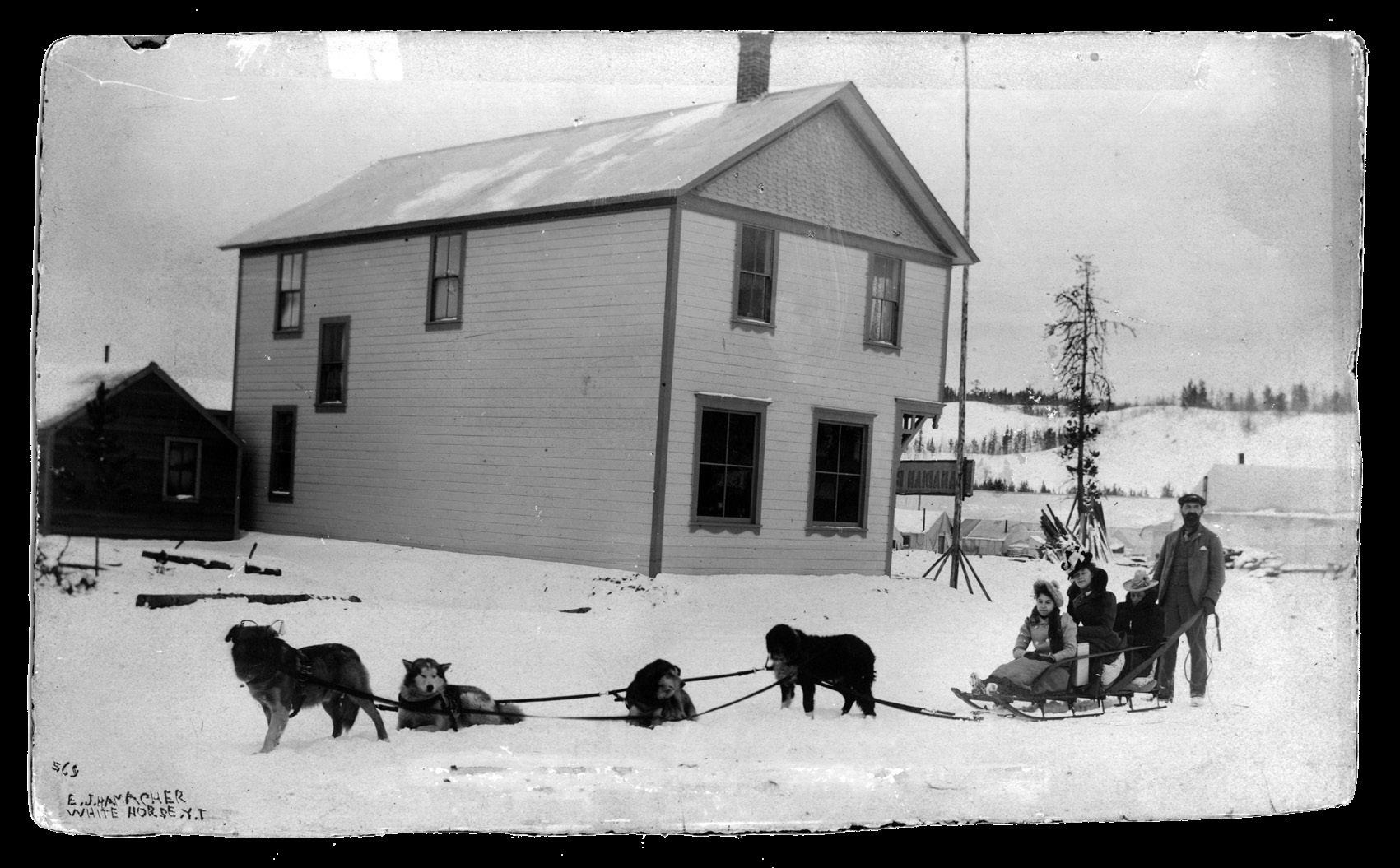
The Taché-Drapeau
Yvonne and Léda Drapeau, Marie-Louise and Joseph-Charles Taché in front of the Canadian Bank of Commerce. The poet Robert Service worked there between 1904 and 1908.
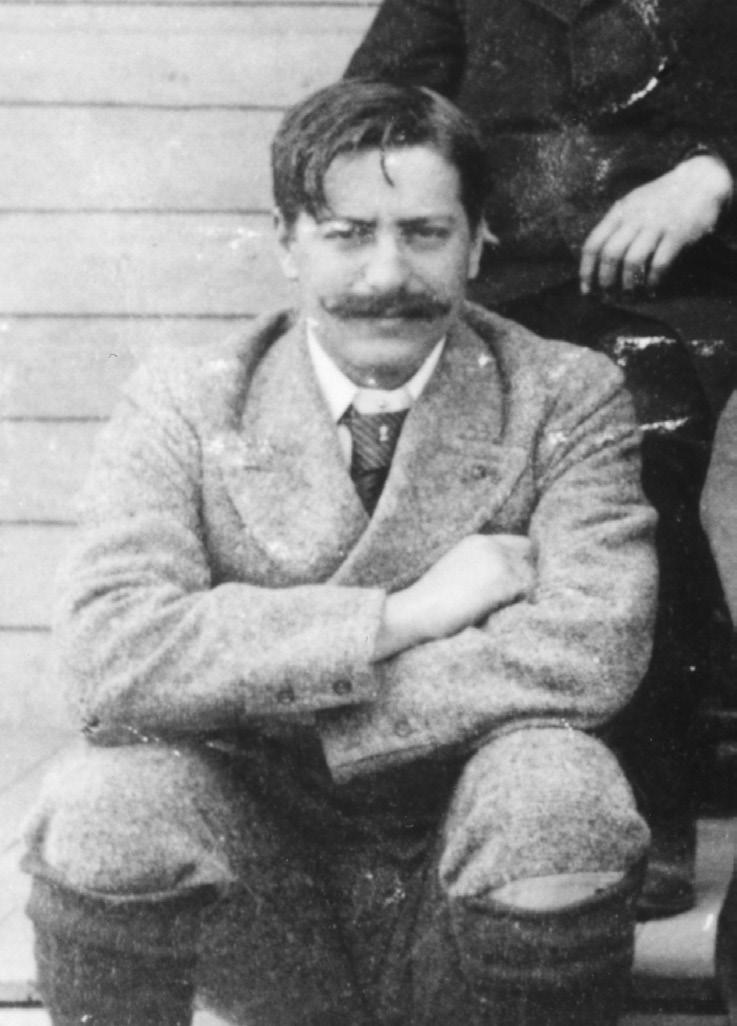
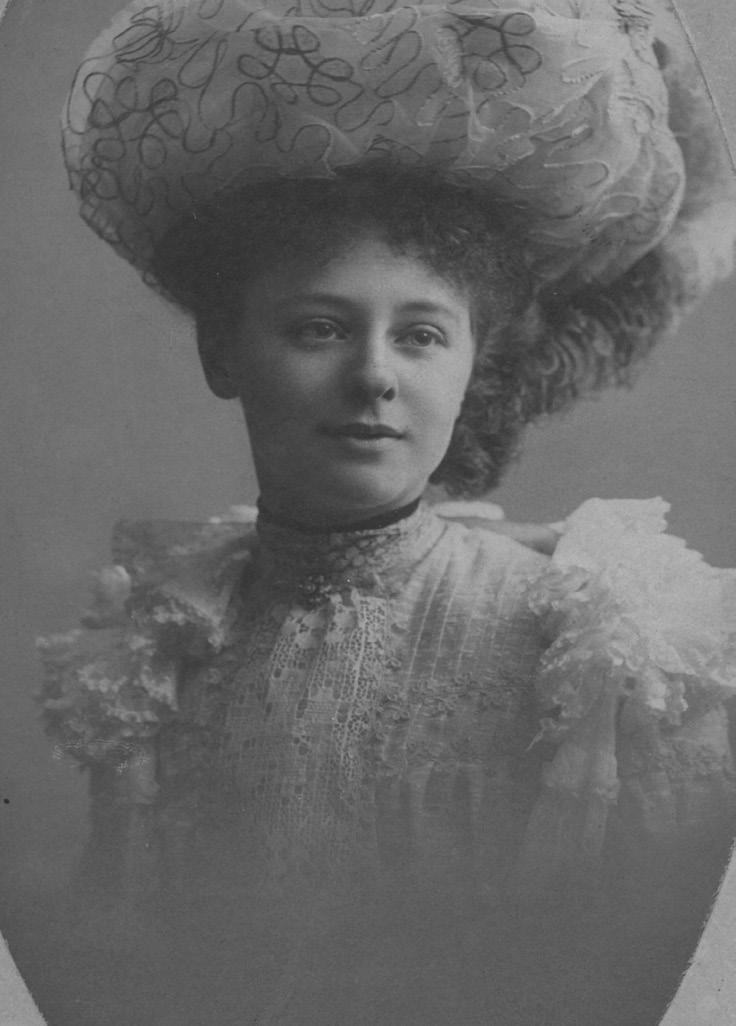
1898: Whitehorse, the laundry
Crossing the rapids and getting completely soaked. As people have no choice but to stop, they might as well use this time to have their clothes washed and dried, after months of traveling. Cariste Racine made enough money with his laundry to buy the Windsor Hotel, where the current Edgewater sits today.

1942: Large military camp
An American military camp during the construction of the Alaska Highway above the cliffs (Takhini neighbourhood.)
1953: The capital of Whitehorse
The narrows in the river at the canyon, the telegraph, the train and the Alaska Highway were all converging means of communication, and Whitehorse became the capital. The spelling White Horse was officially replaced by Whitehorse in 1957.
Yukon Archives, H.C. Barley, #5549
Yukon Archives, Robert Hayes Collection #5693
Photo provided (Jeanne Depocas-Mercier)
Marie-Louise Taché
Photo provided (Jeanne Depocas-Mercier)
Paul-Émile Mercier
Photo provided (Jeanne Depocas-Mercier)
family:
Photo Provided (Laurent Cyr)
Yukon Archives, Emil Forrest Coll. 80/60
#572
Yukon Archives, P.-É Mercier Collection, 2001/137 #16657
Launching boats in the spring
THREE GENERATIONS WITHOUT SERVICES IN FRENCH
1911: Laurier Government defeated in the election
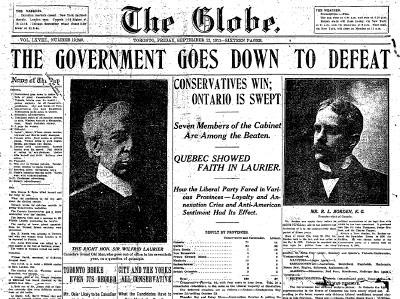
“What celebrating there was that night [September 22, 1911]. Within an hour of victory, the Tories had every possible party worker slated for coveted jobs so long held by the enemy. These jobs included everything from commissioner to ditch digger. The election results had hardly been posted before Liberal jobholders were leaping aboard the winter stage and leaving the Territory… The next stage (or so it seemed) was jammed with Conservatives pouring back into the country […], according to Martha Black, the wife of the first Conservative Commissioner of Yukon.” Morrison, The Politics of the Yukon Territory, p. 90)
With the fall of the Laurier Government in 1911, the civil service was purged. Most Francophones, who were Liberals, lost their positions. Once the Francophone civil servants left, the social circles fell apart. The mechanization of gold mining had already led to a diminished workforce on the gold fields. Parishes closed. Without institutions in place, services and social life in French fell apart. Francophones assimilated into the Anglophone majority. Nevertheless, Francophones continued to get together occasionally.
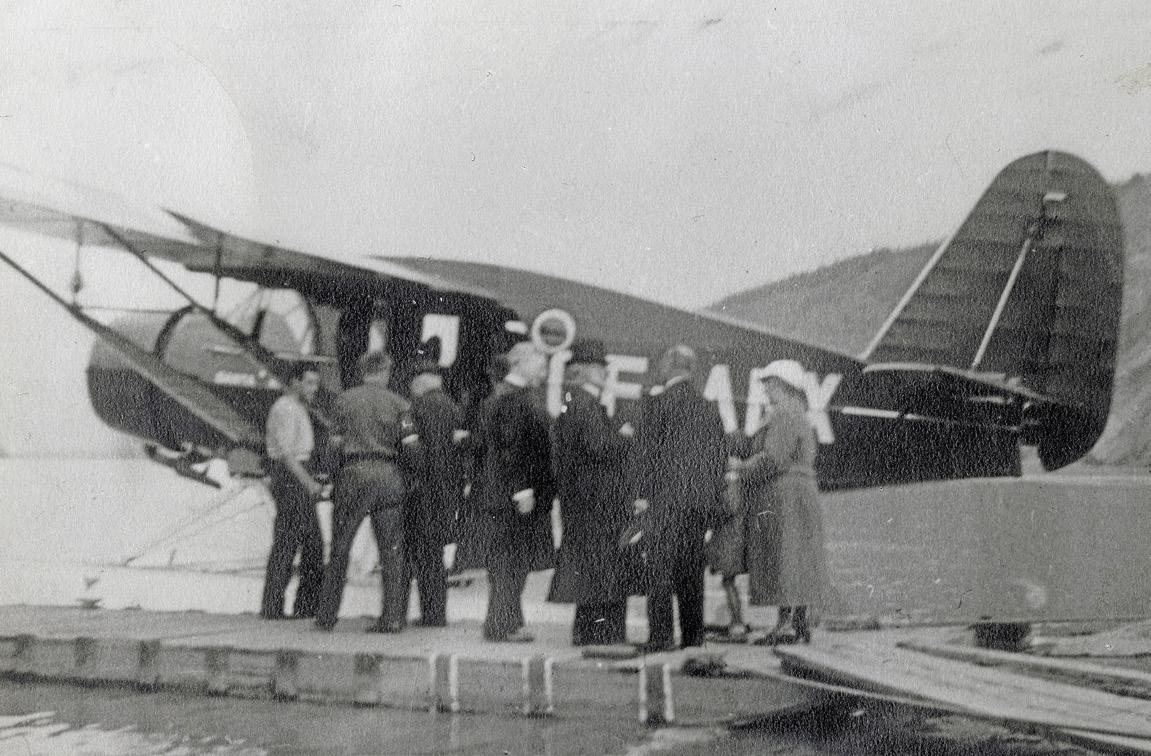
An important visit from down South
A visit from Ottawa by Apostolic Delegate Bishop Antoniutti in July 1939. Every time a plane landed in the North, it was an opportunity to get together. Francophones were no exception. Left to right: the pilot Bisson, Bishop Bunoz from Dawson beside a Jesuit priest, Bishop Antoniutti, Oblate Father Le Ray from Dawson, and Joan Poirier with her great-aunt Émilie Tremblay.
Émilie Fortin-Tremblay, a journey in the Klondike after 1911
A SIMPLE LIFE, WITH LITTLE FRENCH SPOKEN OUTSIDE THE HOME
“There was not a lot to do in Dawson. We went skiing, sledding, skating, dogsledding. Mom played the piano and we sang. My parents spoke French at home, but as soon as we started school, we spoke English. The Sisters of Saint Anne at St. Mary’s School taught us French. I understand it but don’t speak it any more.”
(Interview with Joan Poirier-White by Yann Herry, March 2009.)
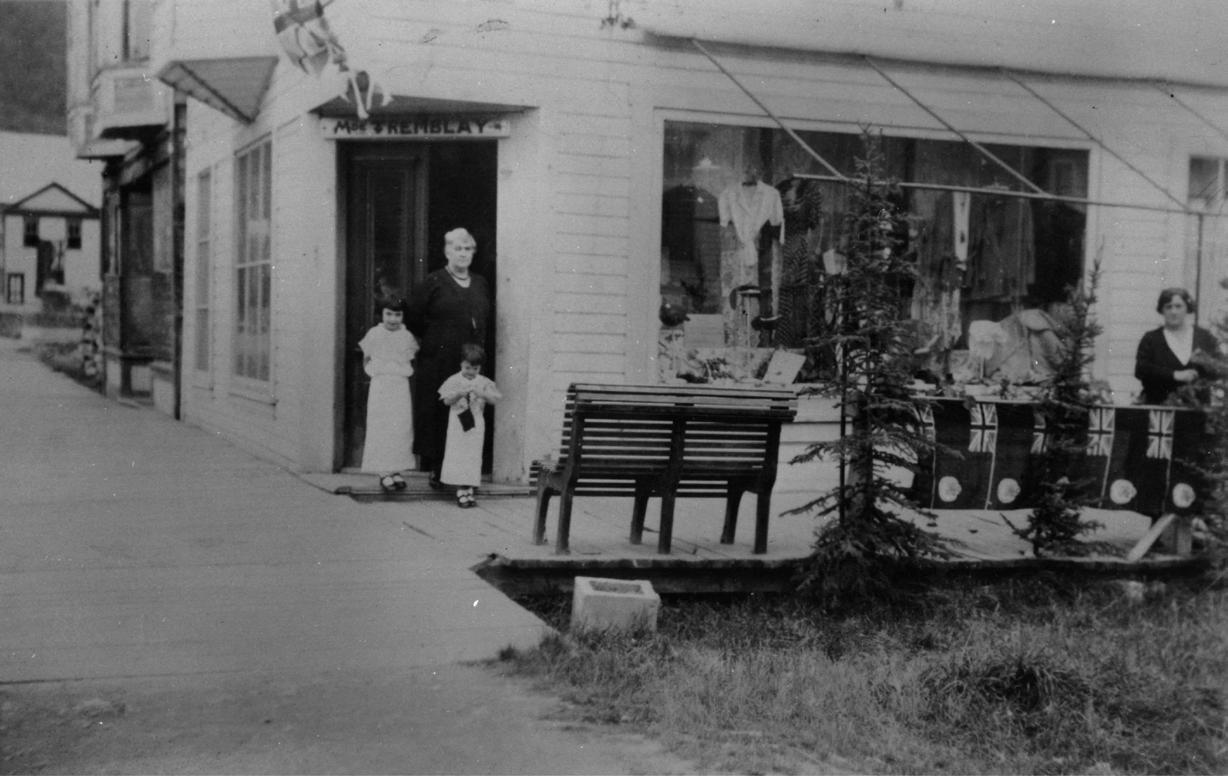
LEAVING THE GOLD FIELDS FOR THE CITY
Thibodeau-Poirier, Émilie’s adopted niece (right).
“In 1913, […] my husband was getting old. I ran a small novelty store [in Dawson]. I didn’t get rich any more than I had in the mines but, thank God, I lived a comfortable if modest life. During the long winter evenings, Jack learned to carve ivory. It is not rare to find […] prehistoric mastodon tusks. Jewellers use them to make souvenirs, which the tourists are very fond of.”
Émilie Fortin-Tremblay
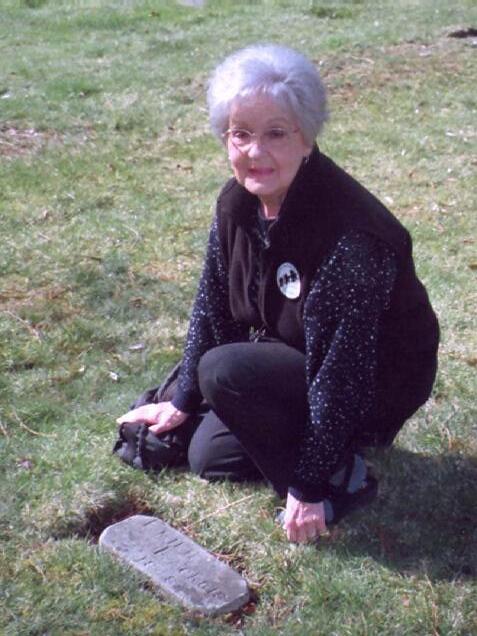
THE CALL OF THE YUKON

GOLD ATTRACTS GOLD
Émilie Fortin-Tremblay (right) in front of her cabin on the gold fields. She kept her cabin long after the gold rush ended. It was demolished in the 1980s to make way for a gold mine!
Joan Poirier-White in 2009 in front of the headstone of her great-aunt, Émilie Fortin-Lagrois, whose surname was that of her second husband, also a prospector. “They complemented each other well. Émilie had a strong character and Louis was friendly. Émilie received cobalt treatment in Victoria to treat her breast cancer. She died there in 1949 at the age of 77. The family was poor. We had a temporary headstone installed. Émilie always wanted to be buried in the Yukon. Time has passed and she is still in Victoria. She will always be my ‘grandmother’. The years I spent in the Yukon were among the best in my life. The Yukon never leaves you.”
Saguenay Historical Society, P002, S7, SS1, P01562-3
Yann Herry
Saguenay Historical Society, P002, S7, SS1, P01562-1
Émilie Fortin-Tremblay, in front of her store, with Lorraine and Joan Poirier, daughters of Edna
Saguenay Historical Society, P002, S7, SS1, P01348-1
IN BOTH FAMILY AND PUBLIC LIFE, FRENCH LOSES GROUND
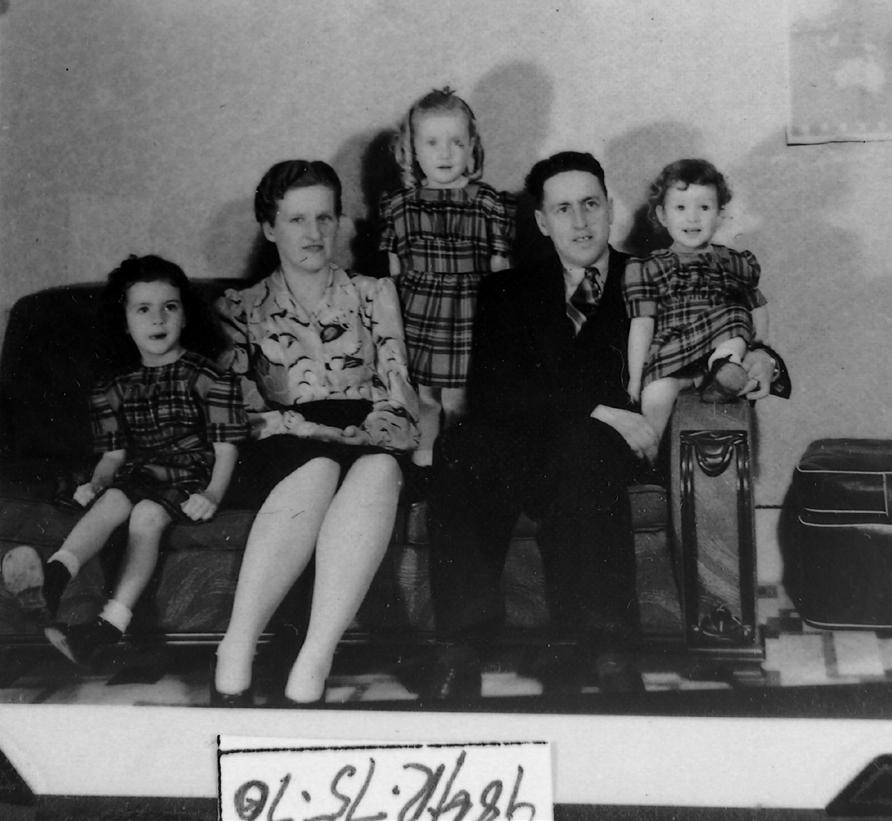
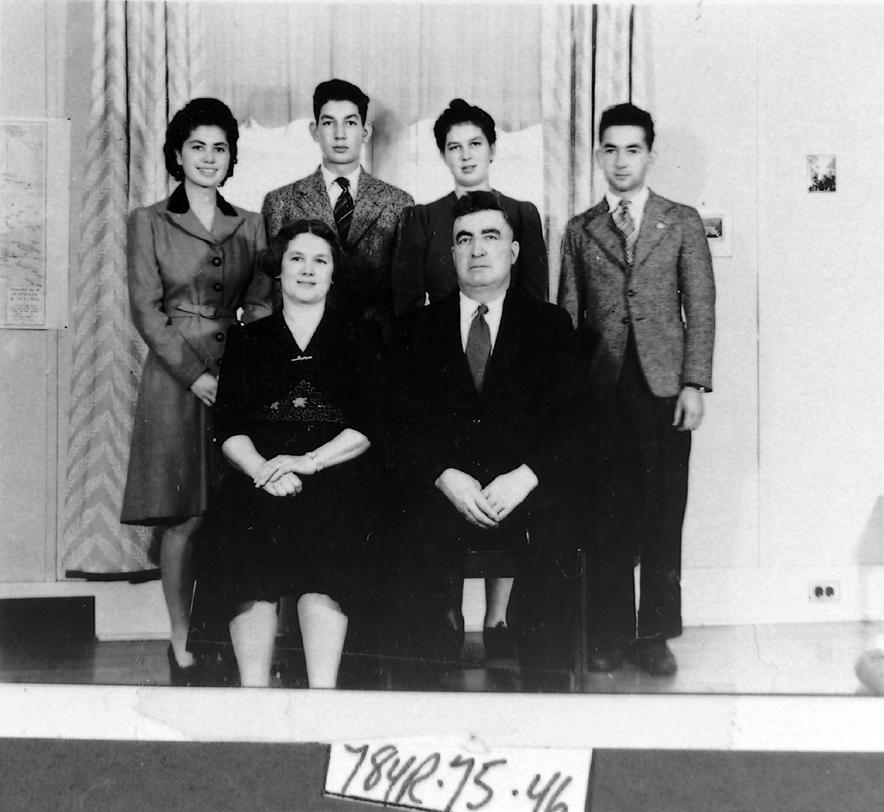

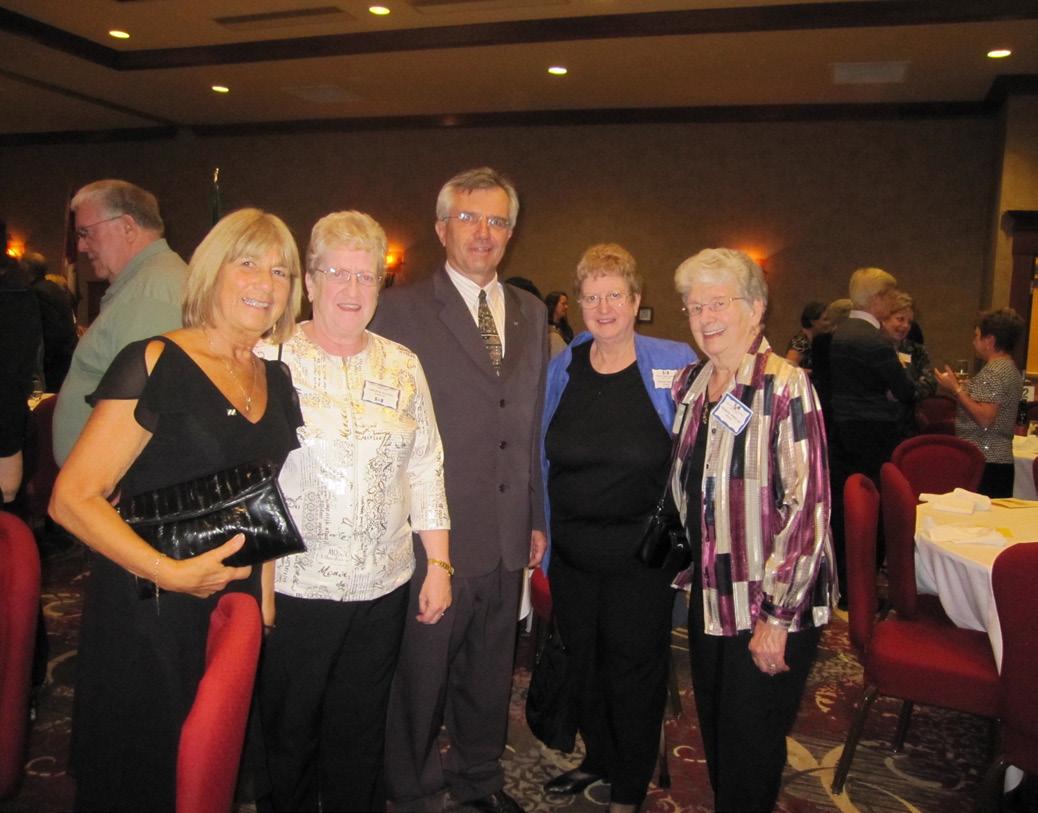
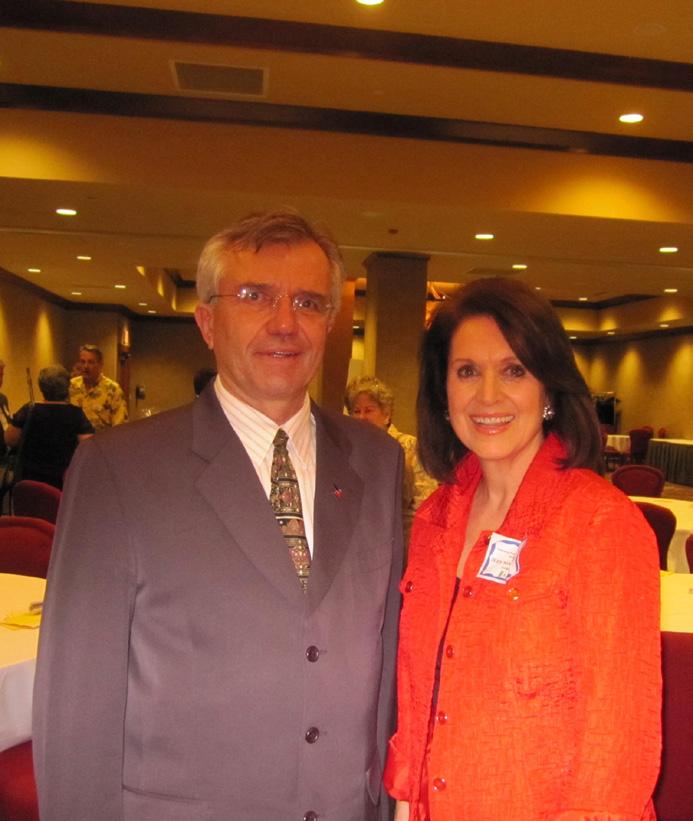



An enduring legend
Be warned! Better not criticize the Westminster Hotel or call it the “Pit” in front of Fabien and Eileen Salois, or you’ll be out on your ear double quick! Today, a lot of bands perform at the Westminster. Next door, the El Dorado
Dawson
Photo 1
The Lelièvre family (circa 1945). The father was nicknamed “Jos Rabbit” in English and his children were named “Bunnies”. ‘So many French names were anglicized!
Photo 2
The Dubois Family (circa 1943). Other Francophone families lived in the Yukon: Fournier, Besner, Dufour, Salois, St-Jean.
Photo 3
Invincible! but age does catch up with us
The Sisters of Saint Anne oversaw the nursing home for ageing prospectors and pioneers, such as Mr. Marcoux and Mr. Colette (circa 1945.)
Photo 4 & 5
Children who grew up in Dawson between the 1930s and the 1960s met up at the annual Yukoner Pioneers’ Banquet in Vancouver. (Left to right) Tina Brasseur (family from Belgium), the three “Bunnies” Arlene, Vivian and Judy Lelièvre and Theresa Dubois.
Photo 6
Sainte-Marie Church and School, Dawson.
Photo 7
Back to the roots
A classroom in St. Mary’s School in 1916, now occupied by the Yukon Francophone School Board’s French first language program in Dawson. The Sisters of Saint Anne taught there until 1963. Florence Dufour can be seen in the left-hand back corner.
Photo 8
Hotel was managed for a long time by
Mayor and Klondike MLA Peter Jenkins, a bilingual Montrealer.
Dawson City Museum, # 1963.2.70
Yann Herry
Dawson City Museum, #1963.2.46
Yukon Archives, Sisters of St. Ann Collection, 96/20 #7
Yann Herry
Yukon Archives, Sisters of St. Ann Collection, 96/17 #3
Photo provided
1 6 2 3 4 5 7 8
Photo provided
END OF THE KLONDIKE GOLD RUSH: FRANCOPHONES DISPERSED
In the early 1900s, the mechanization of gold mining, with the arrival of dredges, and the monopolies, resulting in claims being bought out by big companies, pushed the miners to prospect elsewhere in the territory
The Jacquot brothers arrived in Canada in 1894 and worked as cooks and bakers in Québec. In 1898, in Dawson, they tried in vain to prospect for themselves. In 1904, they settled in the Kluane Lake region where gold was discovered. Like many others in the Klondike who sold wood, nails and rubber boots, the brothers had a successful business after building the Burwash Landing store and becoming big game outfitters; among their clients was the rich American politician Nelson Rockefeller.

KLUANE LAKE (LÙ’ÀN MÄN), THE JACQUOTS
Maxime and Antoine Cyr from Whitehorse, born in the Drave region of northwestern New Brunswick, knew the forest well, just like Louis and Eugène Jacquot. The Jacquots were from Vosges, the schlitte region in France, where the wood is put on sledges (schlittes) and kept from going out too fast by people leaning back on them. The two families became close in the Yukon.
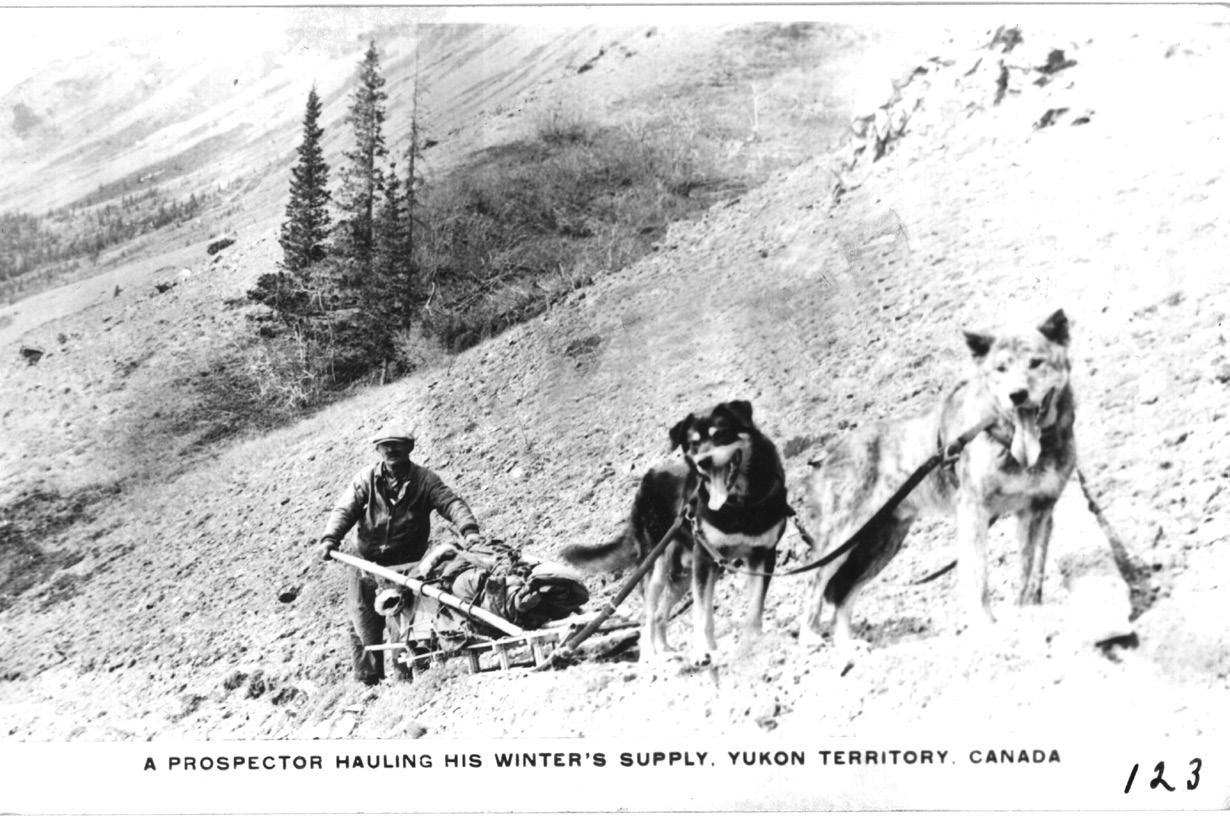
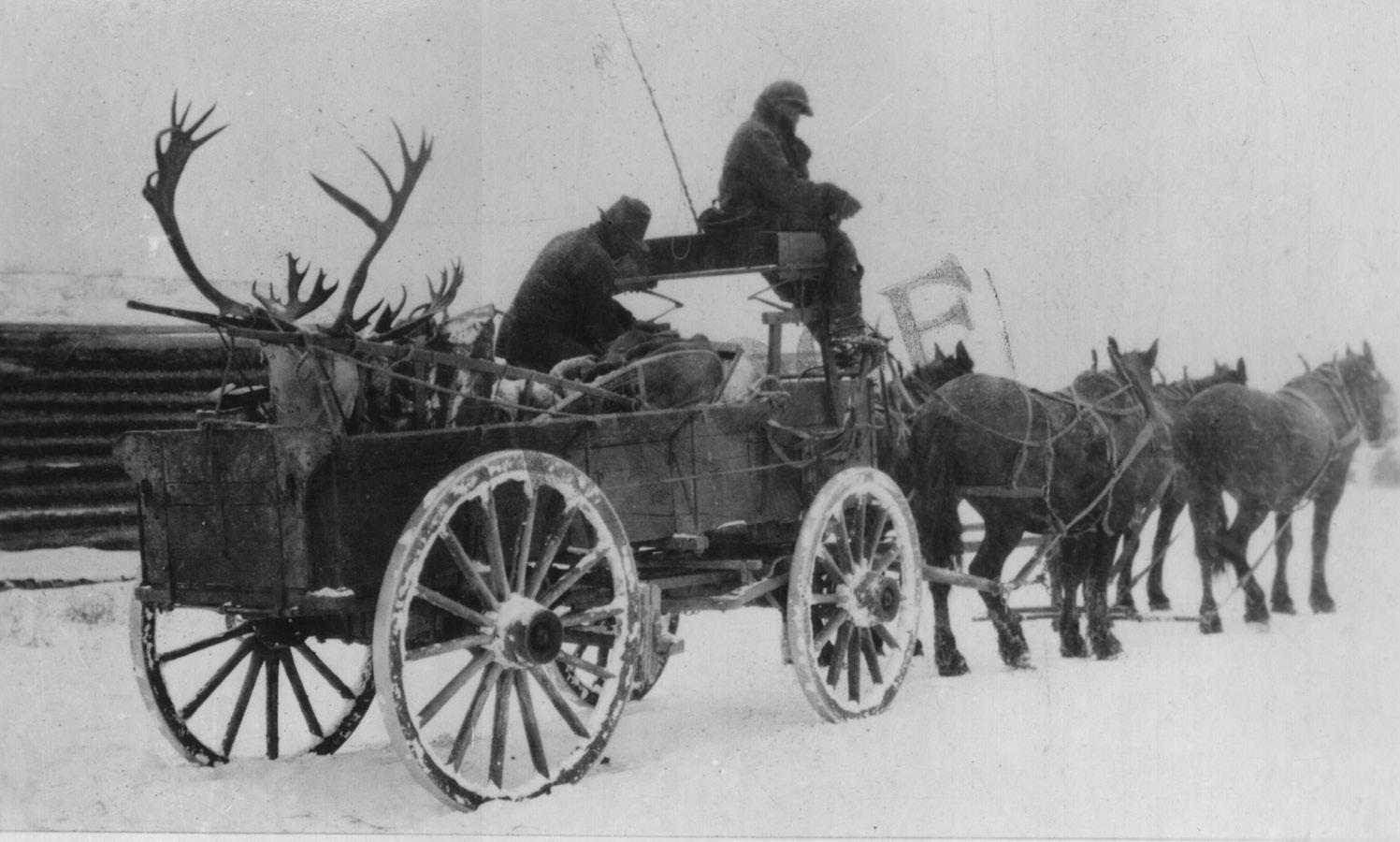
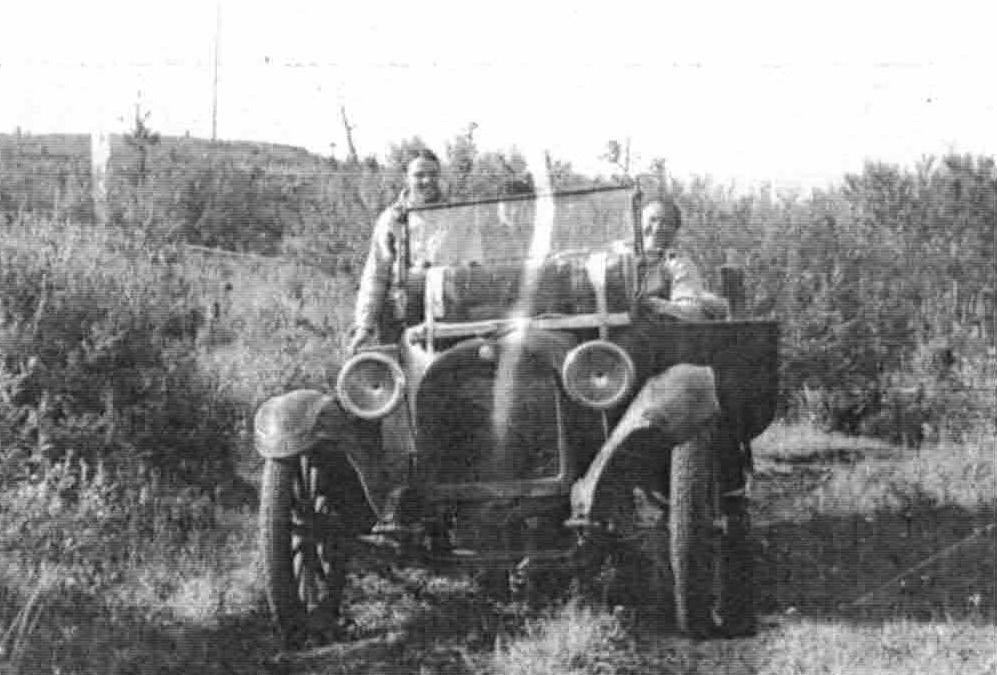
TRANSPORTATION: FROM SLED DOGS TO THE ALASKA HIGHWAY
Louis brings back supplies from Whitehorse to Burwash with dogs and sleds (Bullion Creek).
CARS
In the 1930s, Eugène Jacquot at the wheel of his Model T Ford heading out into the Yukon wilderness. Eugène Binet, the founder of Mayo, was also the proud owner of a car.
Joséphine Jacquot-Sias Collection
Joséphine Jacquot-Sias Collection
Joséphine Jacquot-Sias Collection
Joséphine Jacquot-Sias Collection
In a cart to transport big game
The Cyr and Jacquot families visited each other. The Cyr children spent the summers in Kluane. Joséphine, Louis Jacquot’s daughter, recalled with a smile:
“When my parents went to Whitehorse, they stayed with the Cyrs. If my dad didn’t want us listening in on their conversations, they would speak in French, but we could understand.”

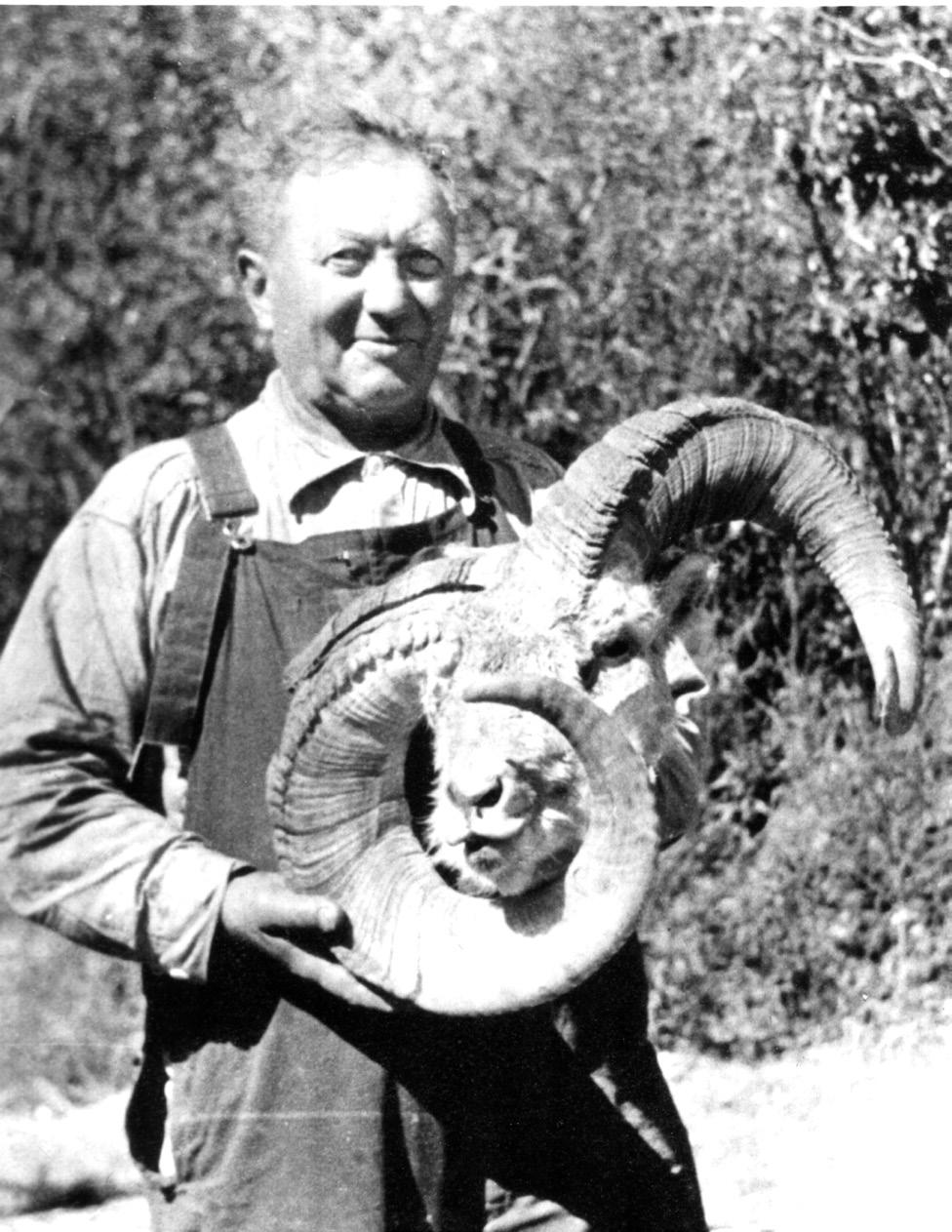

(Herry, interview)
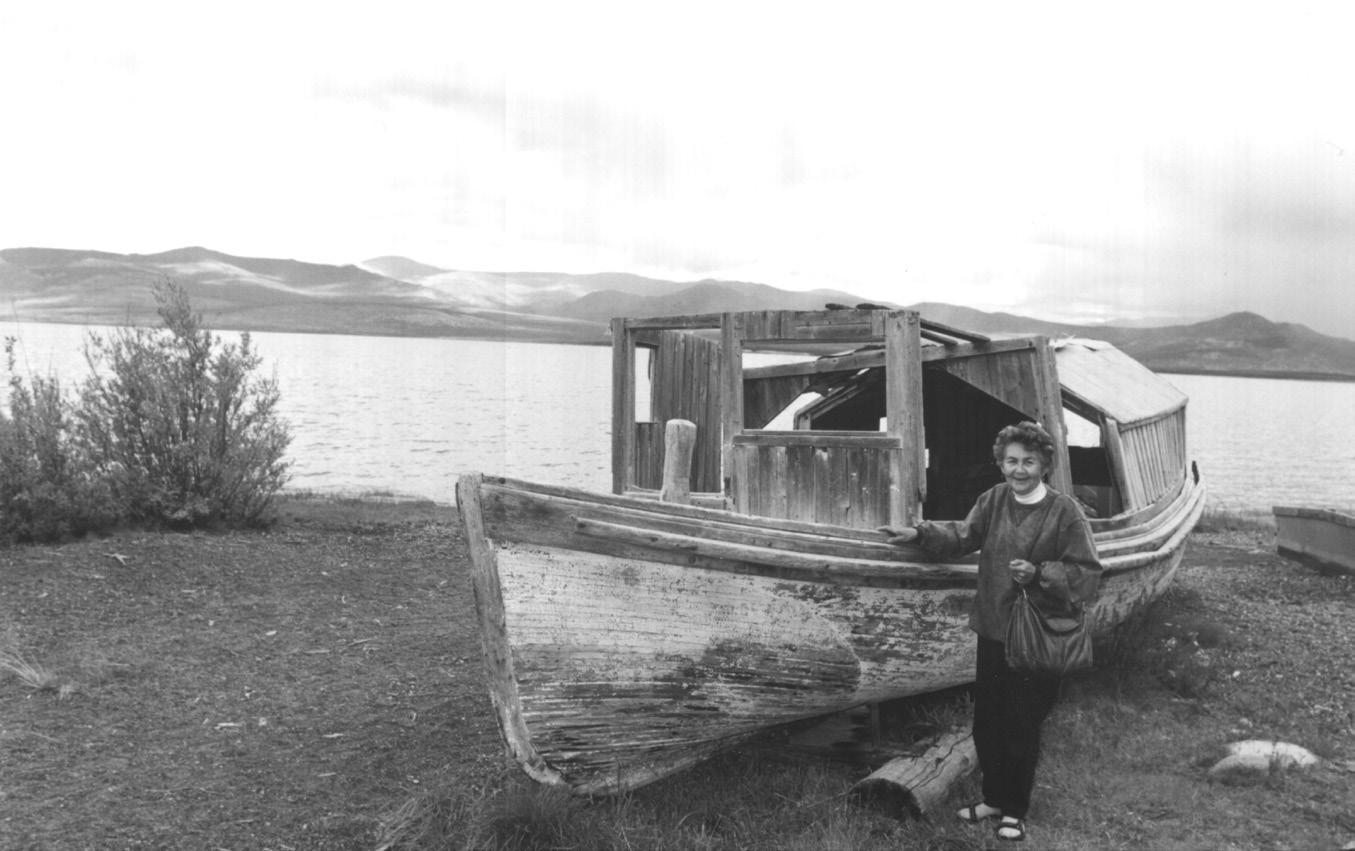
ON A BOAT: THE SHORT SHIP
 In 1942, the American army arrived in Burwash via the Kluane Trail from Whitehorse. It becomes the Alaska Highway. Antoine Cyr's son Laurent runs the midway relay store in the village of Champagne.
The Jacquots took people and goods across Lake Kluane in their short ship. Joséphine (Josie), Louis’ daughter, beside the boat that bears her name and that of her grandmother in France.
Joséphine Jacquot-Sias Collection
Joséphine Jacquot-Sias Collection
Louis Jacquot
Eugène Jacquot and his trophy Memory keepers: Joséphine, Louis’ daughter, with her mother Na thàn-a-yàma, (Mary CopperJoe) born in Lynx City, Yukon.
Joséphine Jacquot-Sias Collection
Yann Herry Collection
Joséphine Jacquot-Sias Collection
In 1942, the American army arrived in Burwash via the Kluane Trail from Whitehorse. It becomes the Alaska Highway. Antoine Cyr's son Laurent runs the midway relay store in the village of Champagne.
The Jacquots took people and goods across Lake Kluane in their short ship. Joséphine (Josie), Louis’ daughter, beside the boat that bears her name and that of her grandmother in France.
Joséphine Jacquot-Sias Collection
Joséphine Jacquot-Sias Collection
Louis Jacquot
Eugène Jacquot and his trophy Memory keepers: Joséphine, Louis’ daughter, with her mother Na thàn-a-yàma, (Mary CopperJoe) born in Lynx City, Yukon.
Joséphine Jacquot-Sias Collection
Yann Herry Collection
Joséphine Jacquot-Sias Collection

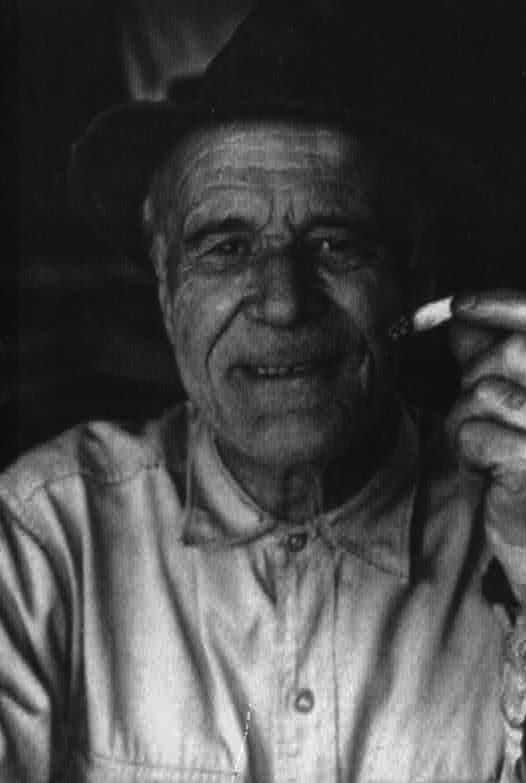

In 1921, the Jacquots convinced two young people from their Vosges village, Paul Birckel (with the Jacquot children in the middle) and François (Frank) Bee (left), to come and manage the store. Three of them married into First Nations families.
Chief of the Shadhäla yè Äshèyi Kwadan (Champagne and Aishihik)
Nations and signatory in 1993 of his Nation’s land claim, with his cousin Francine Birckel from France, in Klukshu, Yukon
KLUANE LAKE'S FRANCOPHONE HERITAGE GATHERS
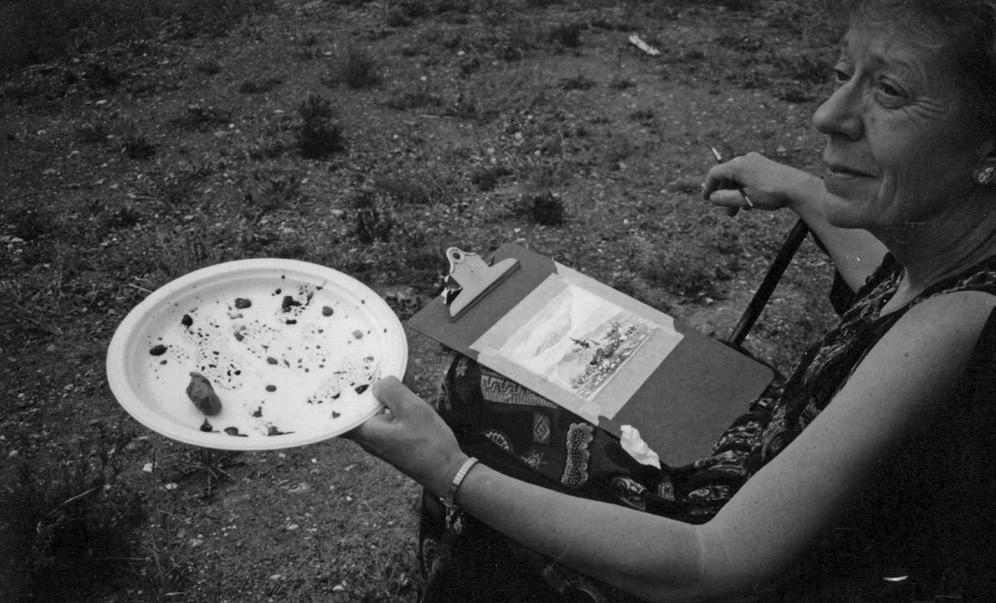

of Francophones
have made their home at the foot of the mountains in magnificent Kluane National Park.

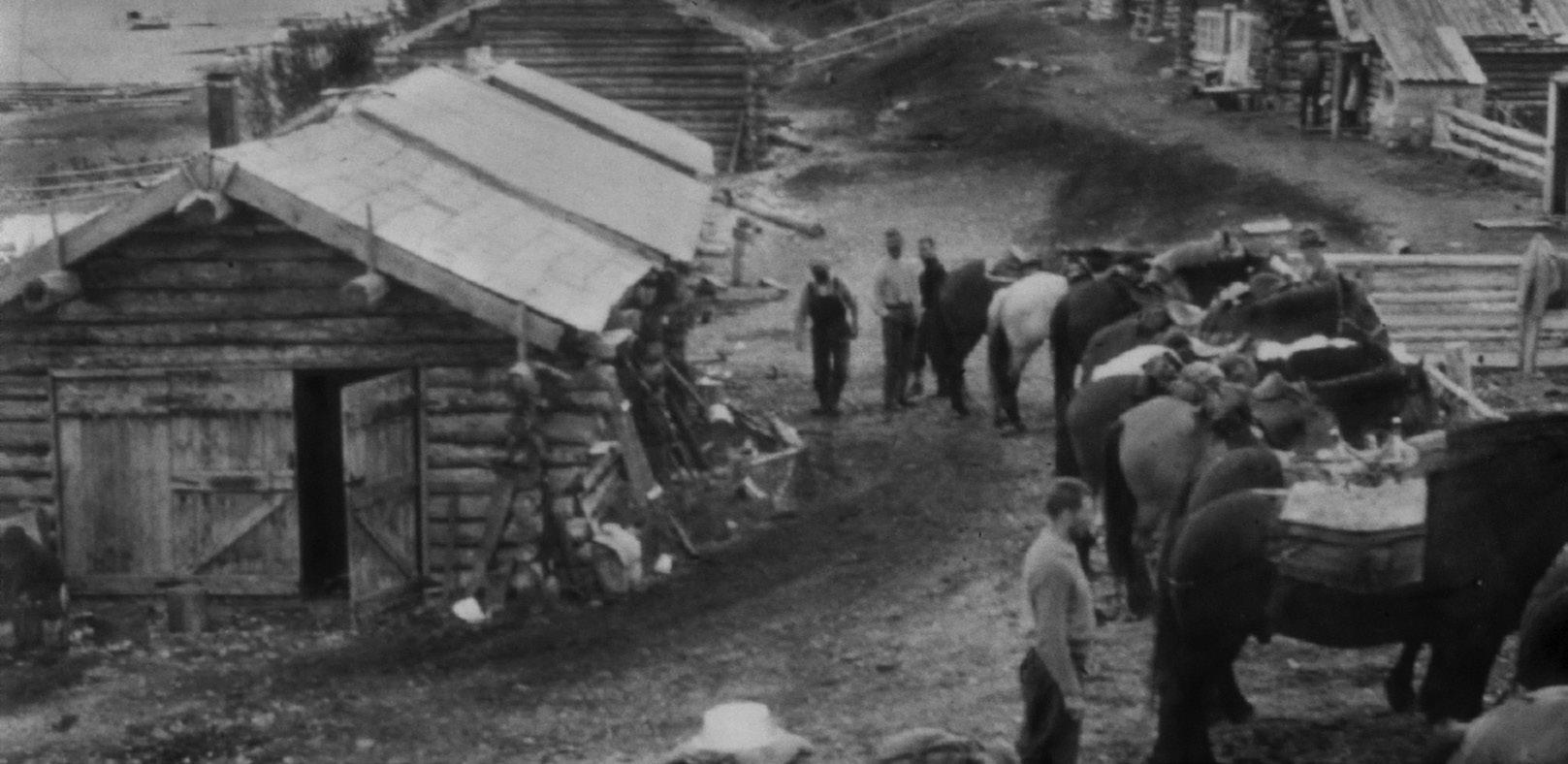
In 2010, students from the Yukon, Québec and France discovered Kluane Lake Francophone history at Silver City where the Jacquots had a cabin and a bed and breakfast managed by Cécile Henri-Sias, a Francophone from Saskatchewan, and a member of the family through marriage (centre, second row). In the background, Sheep Mountain, in Kluane National Park.
EATING WELL AT THE JACQUOTS’ OUTFITTING BUSINESS IN BURWASH
“We’ll never forget the delicious meals Gene [Eugène] used to make. And the bread! Some of the best I’ve ever eaten. And the puff pastry? Gene had to perform. So, the menu included vol-au-vent as an entrée and a blueberry pie for dessert. These fancy meals could have been enjoyed at a table in any first-class restaurant in Europe.”
(Bovet, En chasse: randonnées dans le territoire du Yukon au Canada , Neufchâtel, Suisse, 1929)
Right, Paul Birkel (junior),
First
(2009.)
Joséphine Jacquot-Sias Collection
Joséphine Jacquot-Sias (Delahaye) Collection
Joël Fréchard
Joséphine Jacquot-Sias Collection
⇒
Yann Herry Collection
Celebrating the centennial of the building of the Burwash Landing store by the Jacquot brothers, with their descendants front and centre, surrounded by the Southern Yukon Francophones (2004.)
⇑ Libby Dulac, a renowned painter from Haines Junction, captures the beauty of the Kluane Lake region on canvas. Arriving in the Yukon from France in the 1970s, she and her husband Claude are among a number
who
Yann Herry Collection
⇑
Hélène Lapensée
FROM GOLD TO SILVER: FRANCOPHONES AT THE “HEART” OF THE YUKON (MAYO,
KENO AND ELSA)
Mayo 1933. “The only hotel, the Chateau Mayo, was made of wood. The owner was Eugène Binet, a French Canadian. There were several families in the village. But a good number of log cabins were occupied by French Canadians, most of them singles.”
(Edwin Bleiler, pionnier. Gold and Galena. Mayo Historical Society, p. 228)

Tripod and pulley to lift the heavy bags of galena (ore composed of silver, lead and zinc) in front of the Binet Brothers’ hotel and store that would become the Chateau Mayo after the fire of 1930.
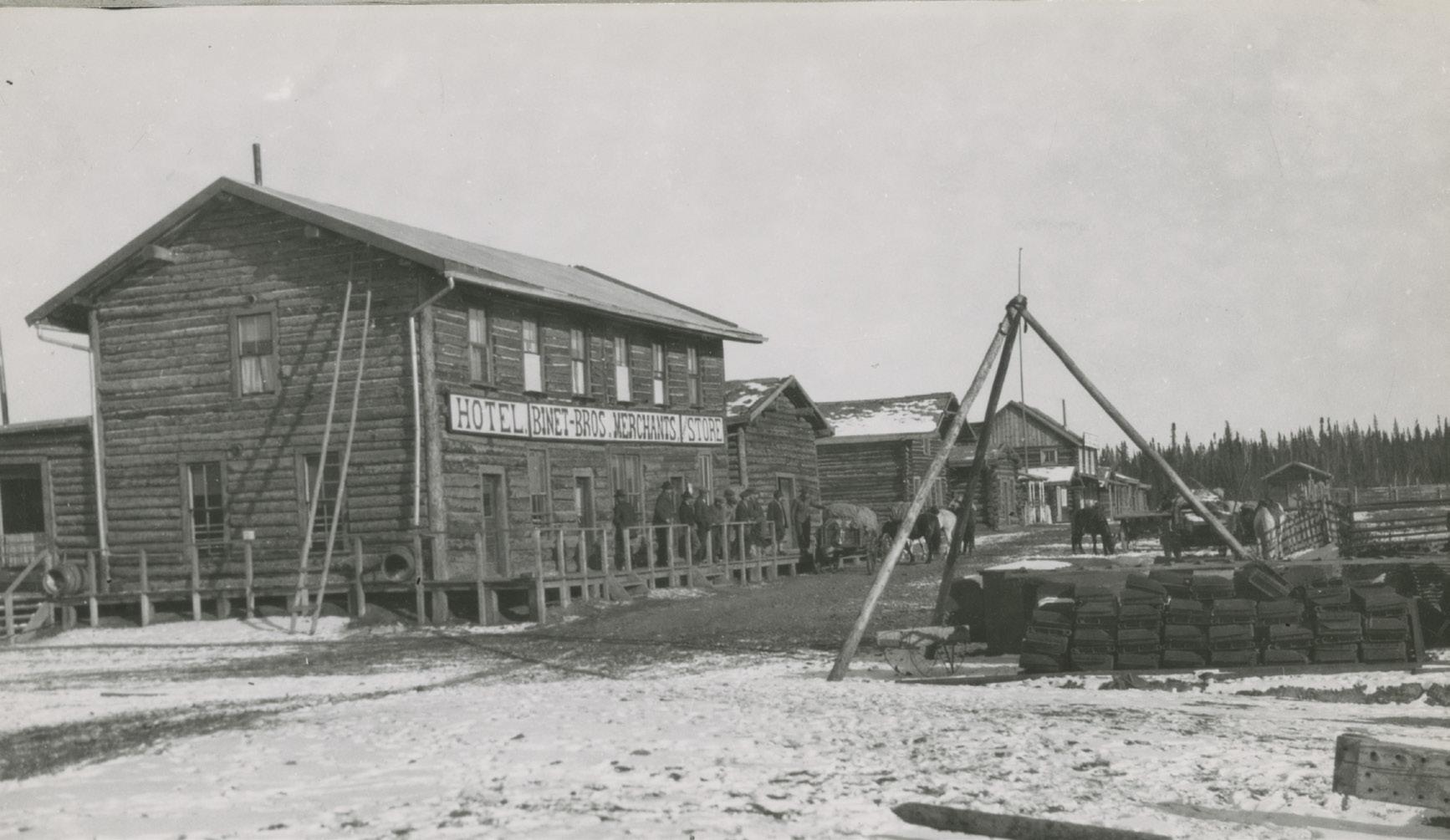
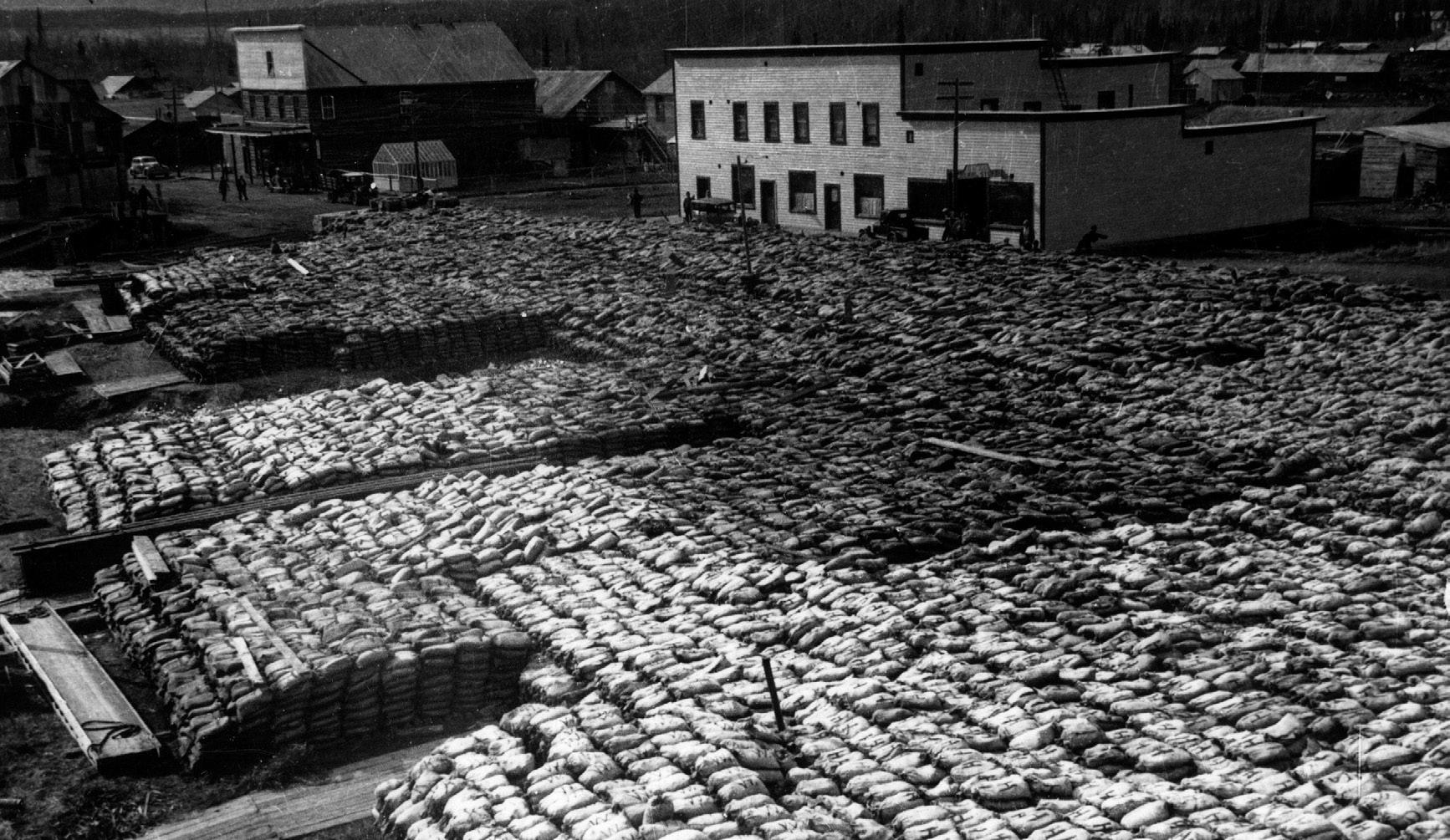
In 1903, with the Klondike gold claims all staked, Eugène Binet, from Charlesbourg, Quebec, chose to prospect in the Mayo region instead of working for someone else. Gold was discovered there. With his brothers Jean and Philippe, he built a hotel and a store (above). He is considered a “Father of Mayo.”
Eugène Binet
Provided (Gordon McIntyre) Yukon Archives, A.K. Schellinger fonds 82/270 #5814
Photo provided
(Gordon McIntyre)
Bags of galena, stored in front of the Chateau Mayo, waiting to be loaded onto a boat in spring.
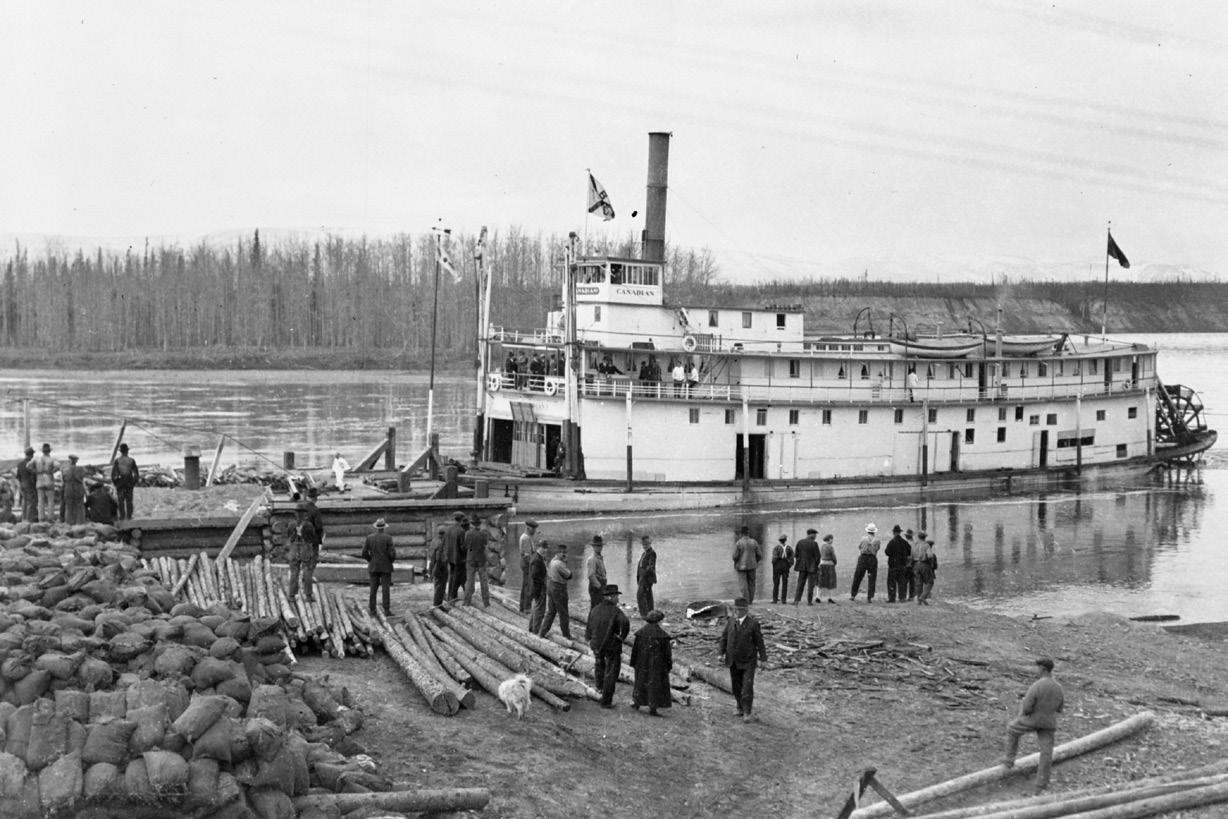



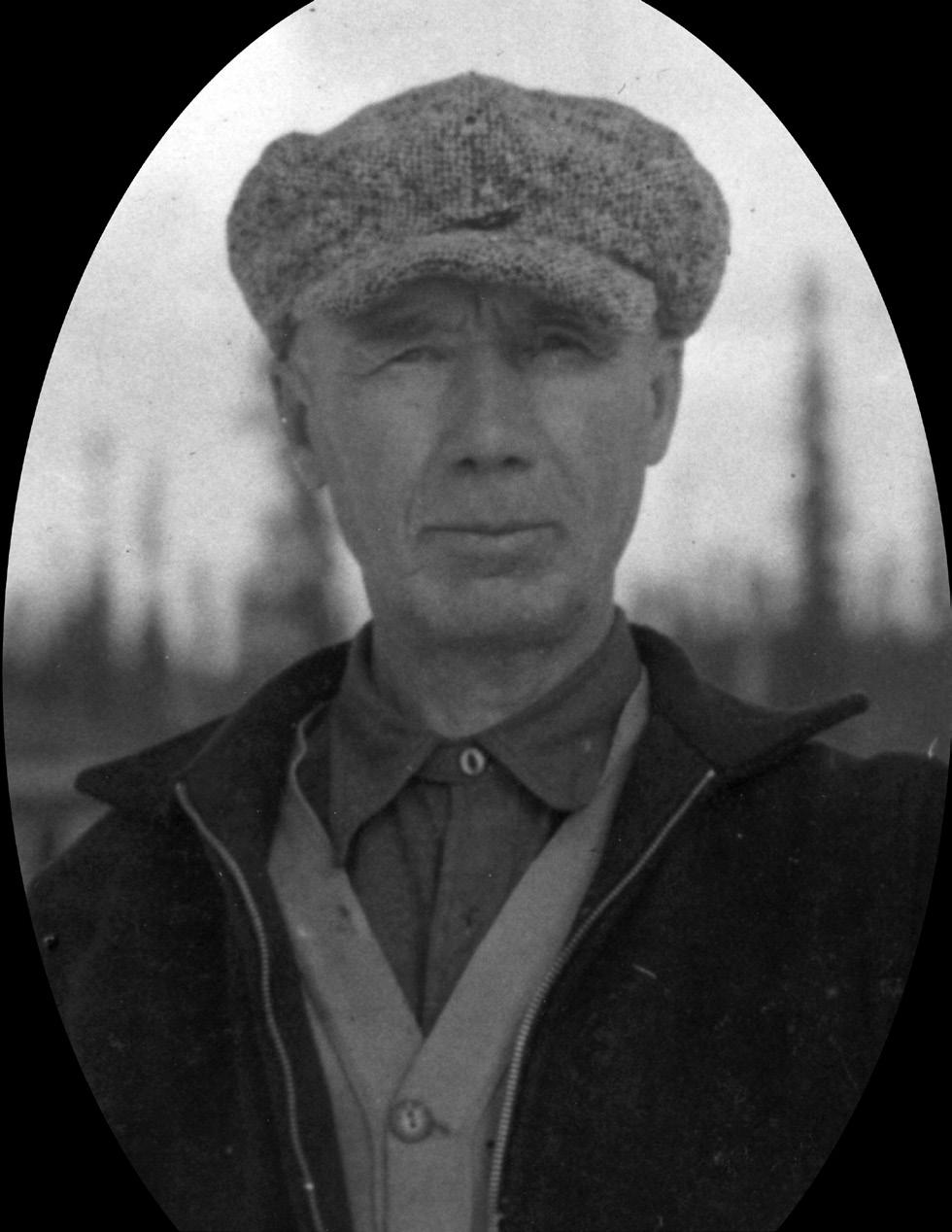
Louis Bouvette was a Francophone Métis (of First Nations and Scottish ancestry) from Manitoba. As a child, he witnessed the Métis rebellion led by Gabriel Dumont.
Louis crossed the Chilkoot Pass in 1901. On his claim named “Roulette,” he discovered a galena deposit in 1919 that would make Keno famous. Galena had long been used in radio receivers.
“To commemorate the 17th anniversary of Bouvette’s discovery [of galena], the Mayo Miner had planned to publish a special silver edition on July 25. Unfortunately, the material coming from outside the territory for the special edition was destroyed in the wreck of the steamer Klondike and could not be reordered in time for the publication of the special edition planned on Discovery Day.” (The Mayo Miner, July 24, 1936)
Yukon
Archives, Bill Hare
fonds
82/418 #6639
Yukon
Archives, Mayo HS fonds, M. Rich Collection, 2012/19, p.404
Yukon Archives, A.K. Schellinger fonds 82/308 #5848
Yukon Archives, MHS fonds, Ruth MacDonald Collection, 2012/19 p.325
1923. Galena being loaded in Mayo onto the steamer Canadian , nicknamed the Bull of the Woods as it was used for tough work. In front, left to right, Ferdinand and Adèle Besner of St-Clet (Quebec) with Eugène Binet, dressed, as always, in a suit. On the Millenium Trail in Whitehorse, a metal structure marks the location of the remains of the Canadian .
Left, three Cantin cousins, prospectors and farmers, with Oscar Létourneau, hotel keeper. Right, Alexandre Nichol, prospector, also considered a “Father of Mayo.” They were all from Quebec.
The Governor General of Canada, Lord Byng of Vimy (right), in 1922 in front of a mine shaft on Keno Hill where Louis Bouvette’s galena discovery claim was located.
Charles Turgeon, prospector and pre-Klondike gold rush pioneer, and his wife Maisie, with Ruth, Maisie’s granddaughter.
Louis Bouvette
Yukon Archives, Claude B. Tidd Collection, 7476
KENO
THE MAYO MINER
& LOUIS BOUVETTE
SOURDOUGH FROM SILVER COUNTRY
“Sourdough” is the name given to long-time Yukon residents, from the sourdough bread that was heavily consumed during the gold rush.




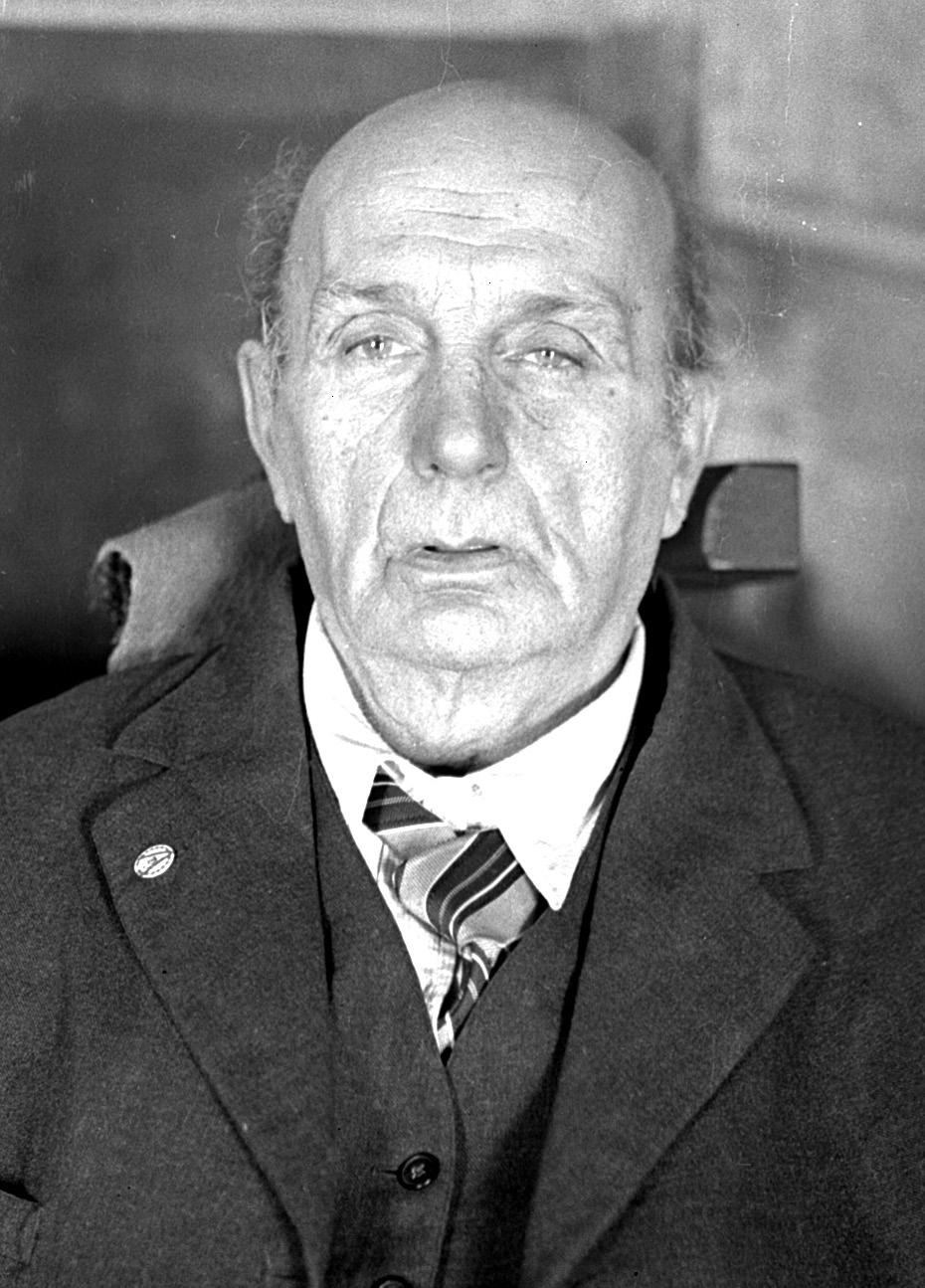 Gordon McIntyre
Alex Lespérance, funeral director
Gordon McIntyre
Gordon McIntyre
Alex Lespérance, funeral director
Gordon McIntyre
L.
p.342
Narcisse Lefebvre, sawmill owner Yukon Archives, MHS fonds
Cheatham Collection, 2012/19
Georges Besner, minor
Gordon McIntyre
Joseph Longtin, prospector
Gordon McIntyre
Isaac Mallette, prospector
ELSA, THE GALENA MINES
1979. Saint-Jean Baptiste, between Elsa and Keno. Traditions persisted. The 1970s were the hippie era, the time of migration towards western Canada and the search for adventures, jobs and life in nature. Yukon mines attracted young people nicknamed “greenhorns” (people who were new to the hard life in the Yukon). They mixed with old-timers, “sourdoughs,” who had a fabulous life and knowledge to share.
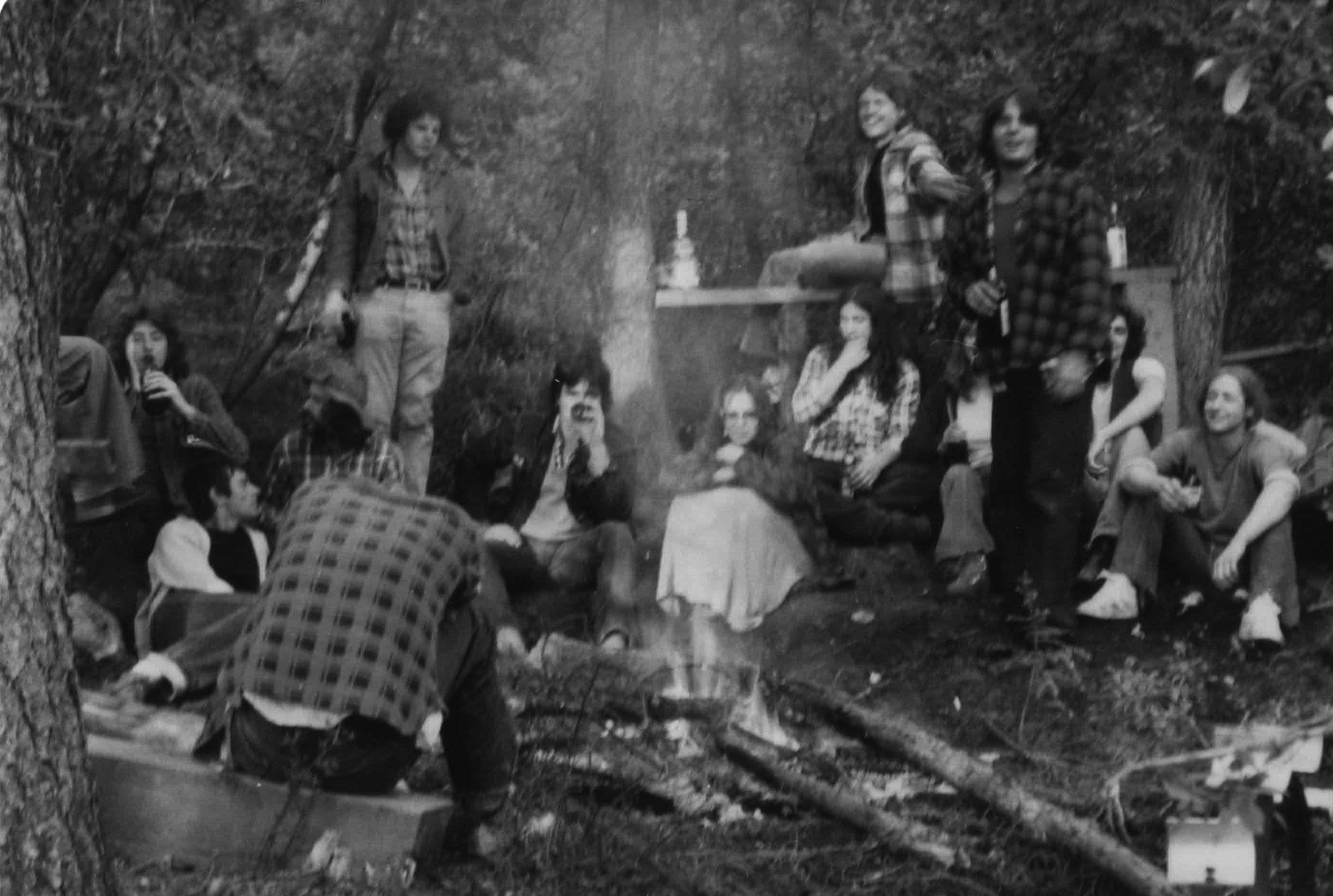
Saint-Jean-Baptiste in 1979, between Elsa and Keno

“When I worked at the Elsa mine, not far from Mayo, I heard stories from Francophones from all over Canada and beyond. I’ve always regretted the fact that I didn’t keep a journal because those stories were amazing. I’ve always admired the way Klondike writers can translate slices of life and capture the spirit of the North in their novels.” (Yann Herry, memories).
Centennial of the foundation of Mayo in 2003. Mayor Shanon Cooper (left) invited Francophones to celebrate the event. In the picture are Xavier and Sylvie Binette, distant relatives of Eugène Binet, Claude Gosselin, apostle of the Yukon, Yann Herry with Lyn Bleiler as Monsieur and Madame Binet and Larry Bagnell, Yukon Member of Parliament.
Yann Herry Collection
Yann Herry Collection
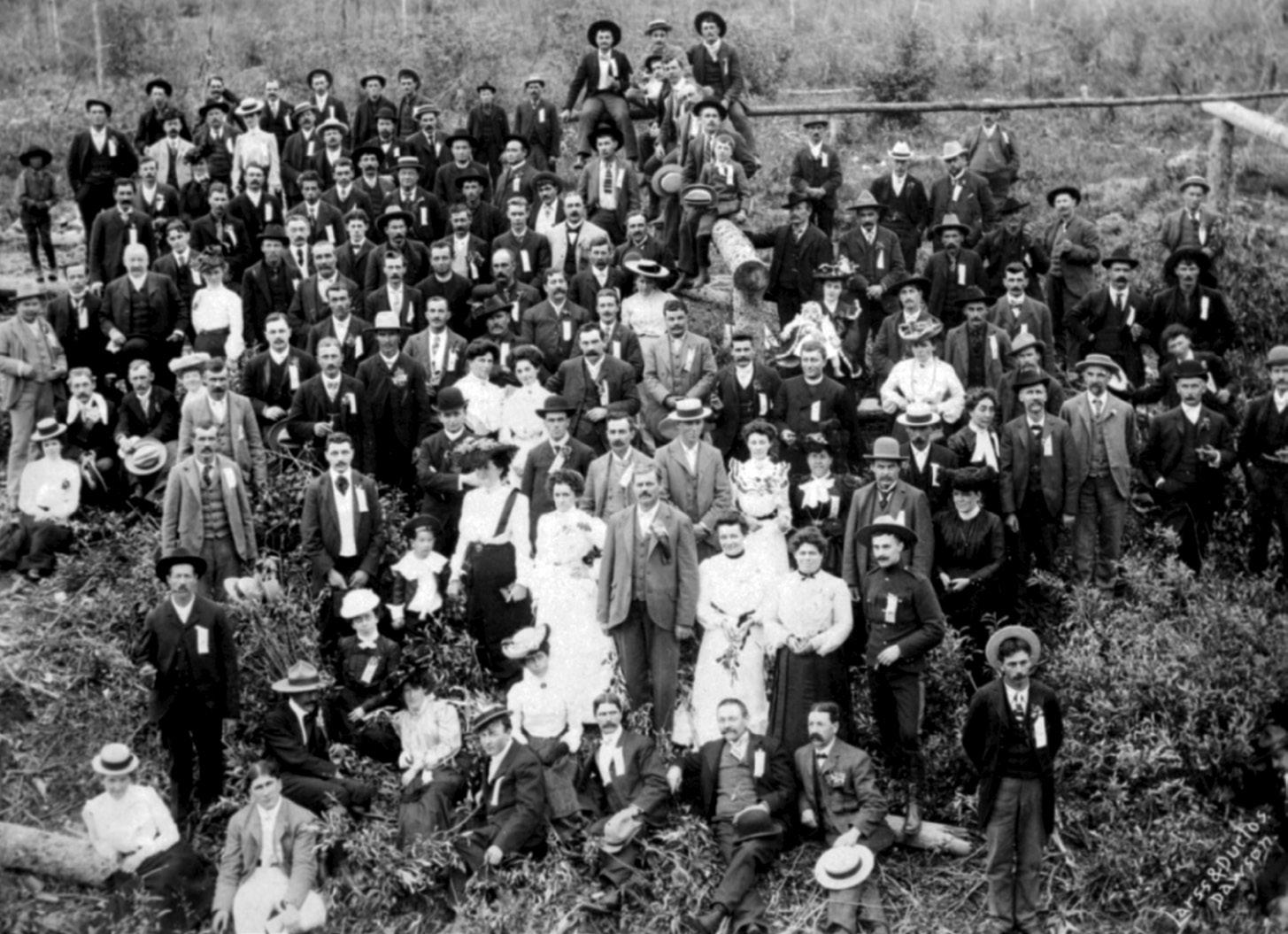
Saint-Jean-Baptiste Day, 1903
THE YUKON FRANCOPHONE COMMUNITY OVER THE LAST 125 YEARS
Three key periods
Golden age of the Francophone community in the Yukon (1898-1911)
Three generations without services in French (1911-1982)
Revival: From 1982 to the present day
GOLDEN AGE OF THE FRANCOPHONE COMMUNITY IN THE YUKON (1898-1911)
1867 Canadian Confederation
1896
First gold nugget discovered in the Klondike.
1898
The Yukon becomes a distinct territory from the Northwest Territories, with Dawson as the capital.
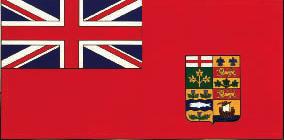
Canada:
“The country of the French-Canadians is not limited to the line that separates Quebec from the other provinces, for there are French-Canadians all over the Dominion,” said Auguste Noël, a Dawson lawyer and politician.
( The Daily Klondike Nugget , July 28, 1902, p. 6)
Gold, always gold:
“Our sights are set on just one thing: gold, accumulating more gold, nothing but gold. In this mad rush towards that coveted object, all we stop to think about is what a little of this precious [metal] might bring us. [Our organization] is an acquired right. The only way to avoid any friction is to emphasize our strengths and demonstrate our influence. It is easier to act this way than to start a war later to lobby for our lost rights,” argued Arthur Fortin, editor of the Francophone page in the Yukon Catholic (May 1902.)
1911 Laurier Government defeated. Francophone bureaucrats are replaced and leave the Yukon.
Royal BC Museum, C-05092
1850 1851 1852 1853 1854 1855 1856 1857 1858 1859 1860 1861 1862 1863 1864 1865 1866 1867 1868 1869 1870 1871 1872 1873 1874 1875 1876 1877 1878 1879 1880 1881 1882 1883 1884 1885 1886 1887 1888 1889 1890 1891 1892 1893 1894 1895 1896 1897 1898 1899 1900 1901 1902 1903 1904 1905 1906 1907 1908 1909 1910 1911
�
THREE GENERATIONS WITHOUT SERVICES IN FRENCH (1911-1982)
THE YUKON FRANCOPHONE COMMUNITY OVER THE LAST 125 YEARS
Three key periods
Golden age of the Francophone community in the Yukon (1898-1911)
Three generations without services in French (1911-1982)
Revival: From 1982 to the present day
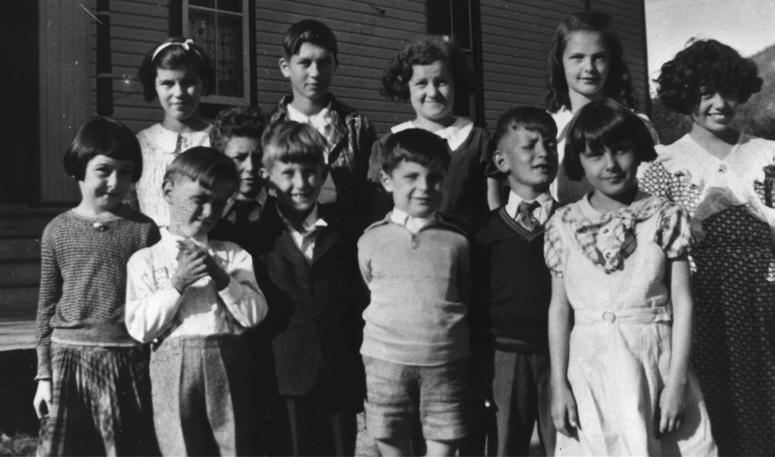
The Fournier, Dubois, Besner, Dufour, Salois, Poirier, St-Jean, Lelièvre and Brasseur children remember the post-gold rush era. Lorraine Poirier, great-niece of Émilie Fortin-Tremblay, first row on the left. “I spoke French until I was six, when I started school,” several pioneers remarked.
1942 Alaska Highway 1956
A road to the mines
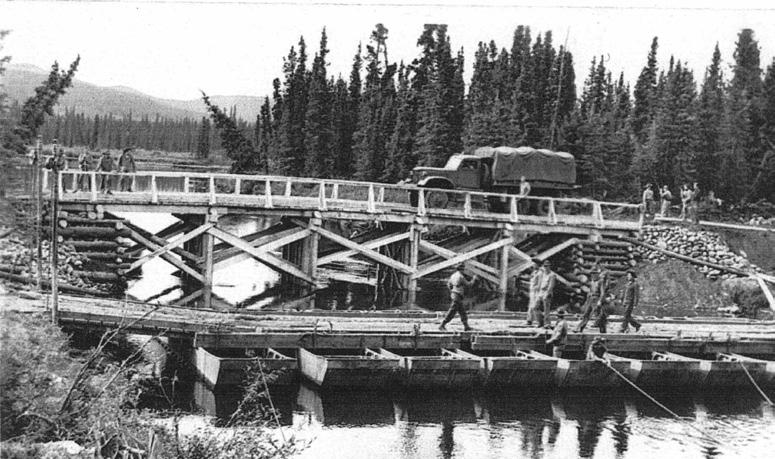
Construction of the Alaska Highway. For many years, it was called Alcan (for “Alaska-Canada”).
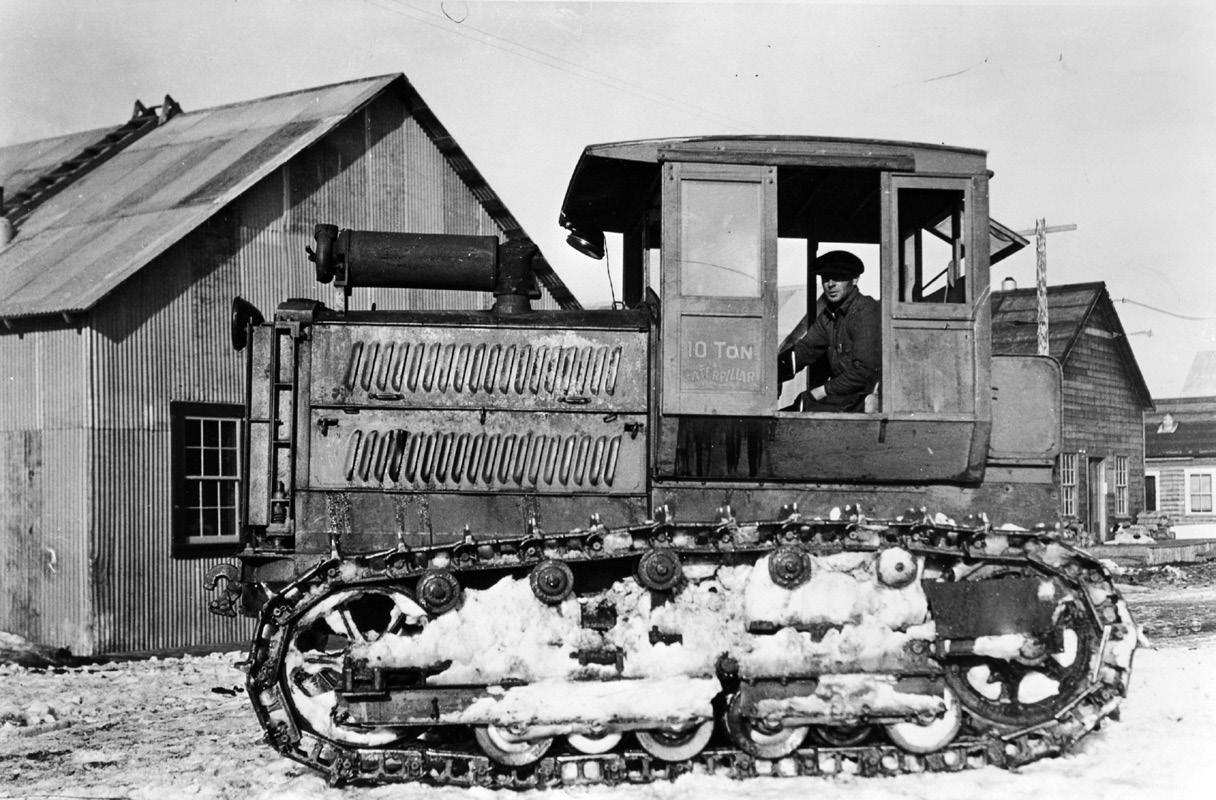
The road, now called Klondike Highway, was originally built (in 1950) to transport galena (silver, lead and zinc) from Mayo to Whitehorse. Gold from the Klondike continued to be shipped on the river until 1956, when the road was extended to Dawson. This marked the end of the sternwheeler era. Émile Forrest (Forest) from Trois-Rivières, along with Can Smith, drove the first caterpillar tractor from Whitehorse to Mayo on a winter trail.
1920 1921 1922 1923 1924 1925 1926 1927 1928 1929 1930 1931 1932 1933 1934 1935 1936 1937 1938 1939 1940 1941 1942 1943 1944 1945 1946 1947 1948 1949 1950 1951 1952 1953 1954 1955 1956 1957 1958 1959 1960 1961 1962 1963 1964 1965 1966 1967 1968 1969 1970 1971 1972 1973 1974 1975 1976 1977 1978 1979 1980 1981 1982 1935
Dawson
of
Carter
Yukon Archives, Sisters
St. Ann Collection, 96/20 #3 Yukon Archives, R.A.
Collection, #1495
�
Yukon Archives, Bill Hare Fonds, 82/418, # 6599
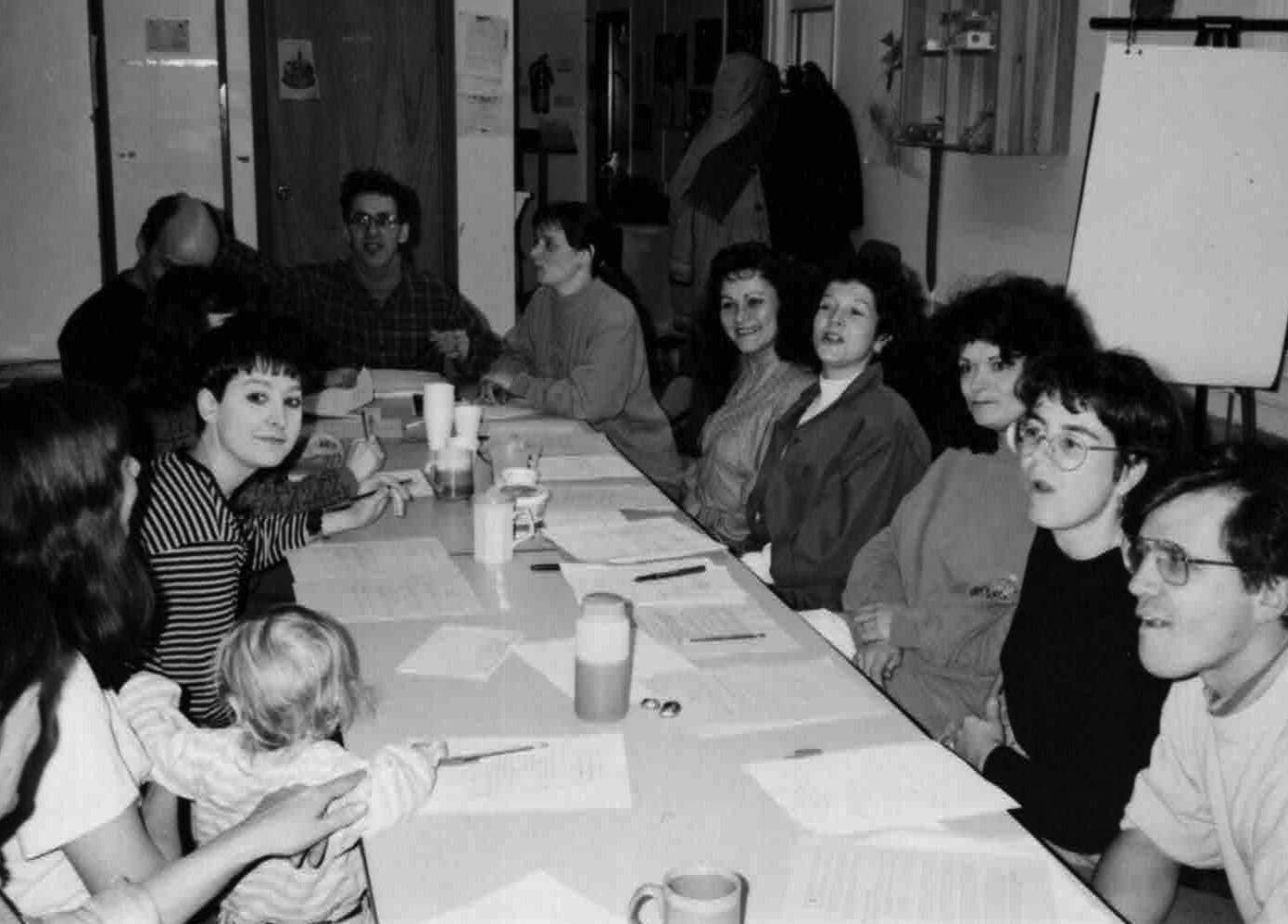
Orientation session at the Association franco-yukonnaise in the 1990s. We see four presidents, Philippe Dumont, Jeanne Beaudoin, Hélène Saint Onge, Yann Herry, and Cécile Girard, the editor of the Aurore boréale at the time.
THE YUKON FRANCOPHONE COMMUNITY OVER THE LAST 125 YEARS
Three key periods
Golden age of the Francophone community in the Yukon (1898-1911)
Three generations without services in French (1911-1982)
Revival: From 1982 to the present day
REVIVAL (1982 TO THE PRESENT DAY)
Since the 1960s, Canada has gone through political upheavals. The implementation of official bilingualism in 1969 and the Charter of Rights and Freedoms in 1982 which granted educational rights, pushed Francophones to demand institutions. The Saint-Jean case in 1986 (when Daniel Saint-Jean received a traffic ticket only in English) led to the creation of the French Language Services Directorate in the Government of Yukon. The Aurore boréale newspaper, established in 1983, documented community life and became the common link between people. The Rencontres radio show started broadcasting on CBC-Radio Canada. People gathered every Friday at the “café-rencontre.” The Yukon Francophone School Board was founded in 1995.
1982
Founding of the Association francoyukonnaise, the official voice of the Yukon French-speaking community
In 1982, mines across the Yukon closed. Young people and old-timers waited for the reopening of mines in Whitehorse. There was a mix of young people from the Francophone resurgence across Canada, Yukon old-timers, people from the regions and city dwellers. Culture and politics intertwined. Families wanted a life in French for their children. The Association franco-yukonnaise was founded.
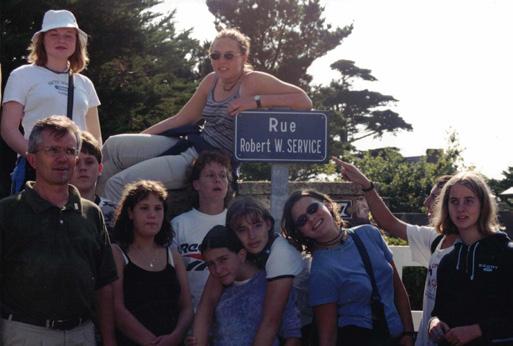
2000
Municipal ties. Robert Service Street, in Lancieux, Brittany. In 2000, Yukon students from Francophone and immersion schools went to France and brought the twinning Charter between Whitehorse and Lancieux, two towns where Robert Service, the Bard of the Yukon, lived.
1987 TO 2001
From the pink house (1987) to the Centre de la francophonie (2001)

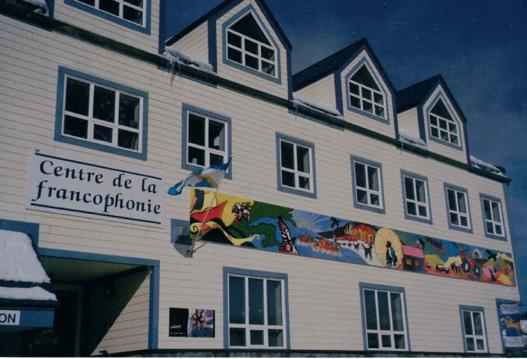

École Émilie Tremblay (elementary school), beginning of the 1998–1999 school year.

In 2007, the Government of Yukon established May 15 as the Yukon Francophonie Day to honour the Francophone community’s vitality and its contributions to Yukon society.

Inauguration of the Centre scolaire secondaire communautaire PaulÉmile-Mercier in 2020.
In 2022, more than 400 young people attended the daycare centre Garderie du petit cheval blanc and Yukon Francophone schools. “French-language education grew! I feel lucky to have been part of the team that contributed to that success,” said Lise Ouimet, who was one of the first teachers at the French school. Jeanne Beaudoin, second Francophone member of the Order of Yukon in 2022, added: “It’s profoundly moving to see how much the Francophone community in the Yukon has flourished since 1982. I’m always delighted to observe young leaders continue to invest in our community.”
AFY Collection
1982 1983 1984 1985 1986 1987 1988 1989 1990 1991 1992 1993 1994 1995 1996 1997 1998 1999 2000 2001 2002 2003 2004 2005 2006 2007 2008 2009 2010 2011 2012 2013 2014 2015 2016 2017 2018 2019 2020 2021 2022 2023 2024
AFY Collection
Yann Herry Collection
Yann Herry Collection
�
CSFY Collection














































 François-Xavier Gosselin managed the production of the yellow metal.
( The Semi-Weekly Klondike Nugget , September 14, 1901)
Store of Madame Eliza Rousseau.
Yukon Archives, Coll. National Museum of Canada #742
François-Xavier Gosselin managed the production of the yellow metal.
( The Semi-Weekly Klondike Nugget , September 14, 1901)
Store of Madame Eliza Rousseau.
Yukon Archives, Coll. National Museum of Canada #742


 Madeleine Perron-Chayer, Lorenzo’s niece
Dawson City Museum, #991.401.34
Yukon Archives Collection, University of Alaska, #3133
Lorenzo Létourneau in 1897
Narcisse Picotte
Madeleine Perron-Chayer, Lorenzo’s niece
Dawson City Museum, #991.401.34
Yukon Archives Collection, University of Alaska, #3133
Lorenzo Létourneau in 1897
Narcisse Picotte











 trams (right). The Cyr brothers took care of the horses. Maxime Cyr, who guided boats in the canyon (left), told his nephew Laurent Cyr that he guided the writer Jack London, who was not reassured.
Photo provided (Laurent Cyr)
Dawson City Museum 1970.2.1.12
Maxime Cyr in the canyon
trams (right). The Cyr brothers took care of the horses. Maxime Cyr, who guided boats in the canyon (left), told his nephew Laurent Cyr that he guided the writer Jack London, who was not reassured.
Photo provided (Laurent Cyr)
Dawson City Museum 1970.2.1.12
Maxime Cyr in the canyon





 Photo provided (Laurent Cyr)
Photo provided (Laurent Cyr)
Yukon Archives, Postcard Collection, 2009-10 #7
Left to right: the rectory, Sacred Heart Church and convent-school. 4
Street.
Photo provided (Laurent Cyr)
Photo provided (Laurent Cyr)
Antoine Cyr Maxime Cyr
Diocese of Whitehorse
Photo provided (Laurent Cyr)
Photo provided (Laurent Cyr)
Yukon Archives, Postcard Collection, 2009-10 #7
Left to right: the rectory, Sacred Heart Church and convent-school. 4
Street.
Photo provided (Laurent Cyr)
Photo provided (Laurent Cyr)
Antoine Cyr Maxime Cyr
Diocese of Whitehorse





























 In 1942, the American army arrived in Burwash via the Kluane Trail from Whitehorse. It becomes the Alaska Highway. Antoine Cyr's son Laurent runs the midway relay store in the village of Champagne.
The Jacquots took people and goods across Lake Kluane in their short ship. Joséphine (Josie), Louis’ daughter, beside the boat that bears her name and that of her grandmother in France.
Joséphine Jacquot-Sias Collection
Joséphine Jacquot-Sias Collection
Louis Jacquot
Eugène Jacquot and his trophy Memory keepers: Joséphine, Louis’ daughter, with her mother Na thàn-a-yàma, (Mary CopperJoe) born in Lynx City, Yukon.
Joséphine Jacquot-Sias Collection
Yann Herry Collection
Joséphine Jacquot-Sias Collection
In 1942, the American army arrived in Burwash via the Kluane Trail from Whitehorse. It becomes the Alaska Highway. Antoine Cyr's son Laurent runs the midway relay store in the village of Champagne.
The Jacquots took people and goods across Lake Kluane in their short ship. Joséphine (Josie), Louis’ daughter, beside the boat that bears her name and that of her grandmother in France.
Joséphine Jacquot-Sias Collection
Joséphine Jacquot-Sias Collection
Louis Jacquot
Eugène Jacquot and his trophy Memory keepers: Joséphine, Louis’ daughter, with her mother Na thàn-a-yàma, (Mary CopperJoe) born in Lynx City, Yukon.
Joséphine Jacquot-Sias Collection
Yann Herry Collection
Joséphine Jacquot-Sias Collection



















 Gordon McIntyre
Alex Lespérance, funeral director
Gordon McIntyre
Gordon McIntyre
Alex Lespérance, funeral director
Gordon McIntyre













